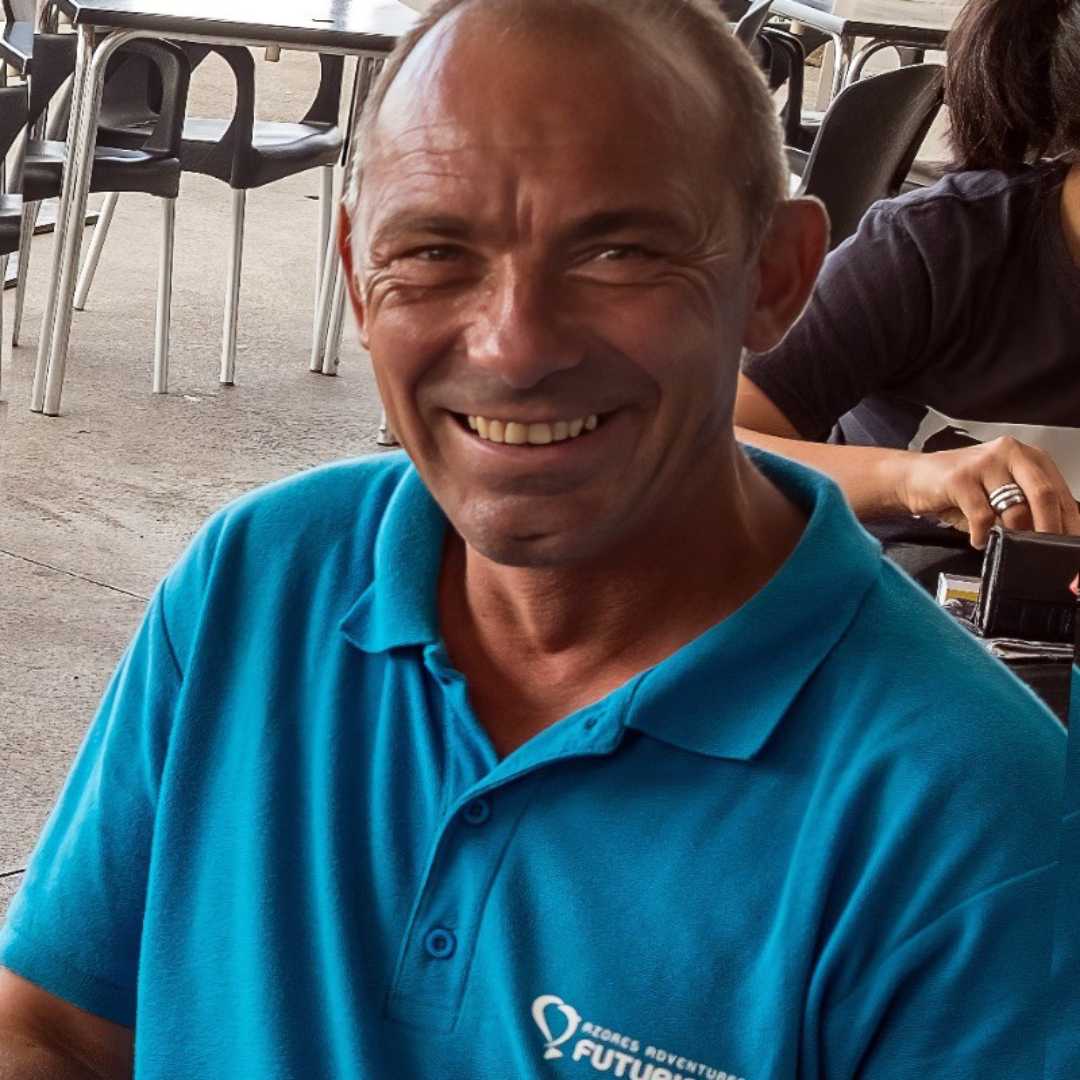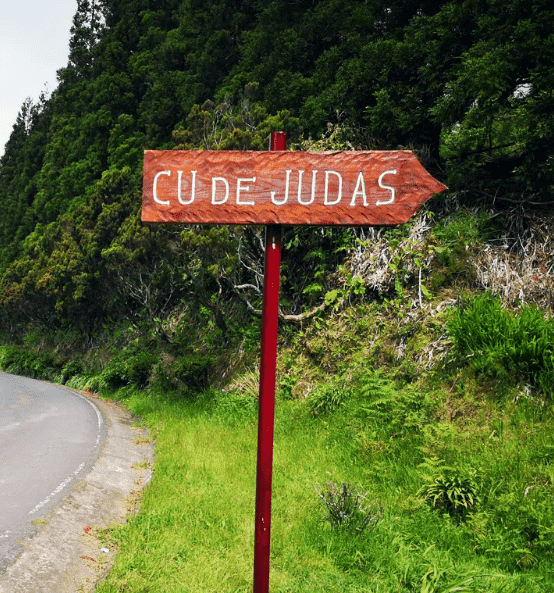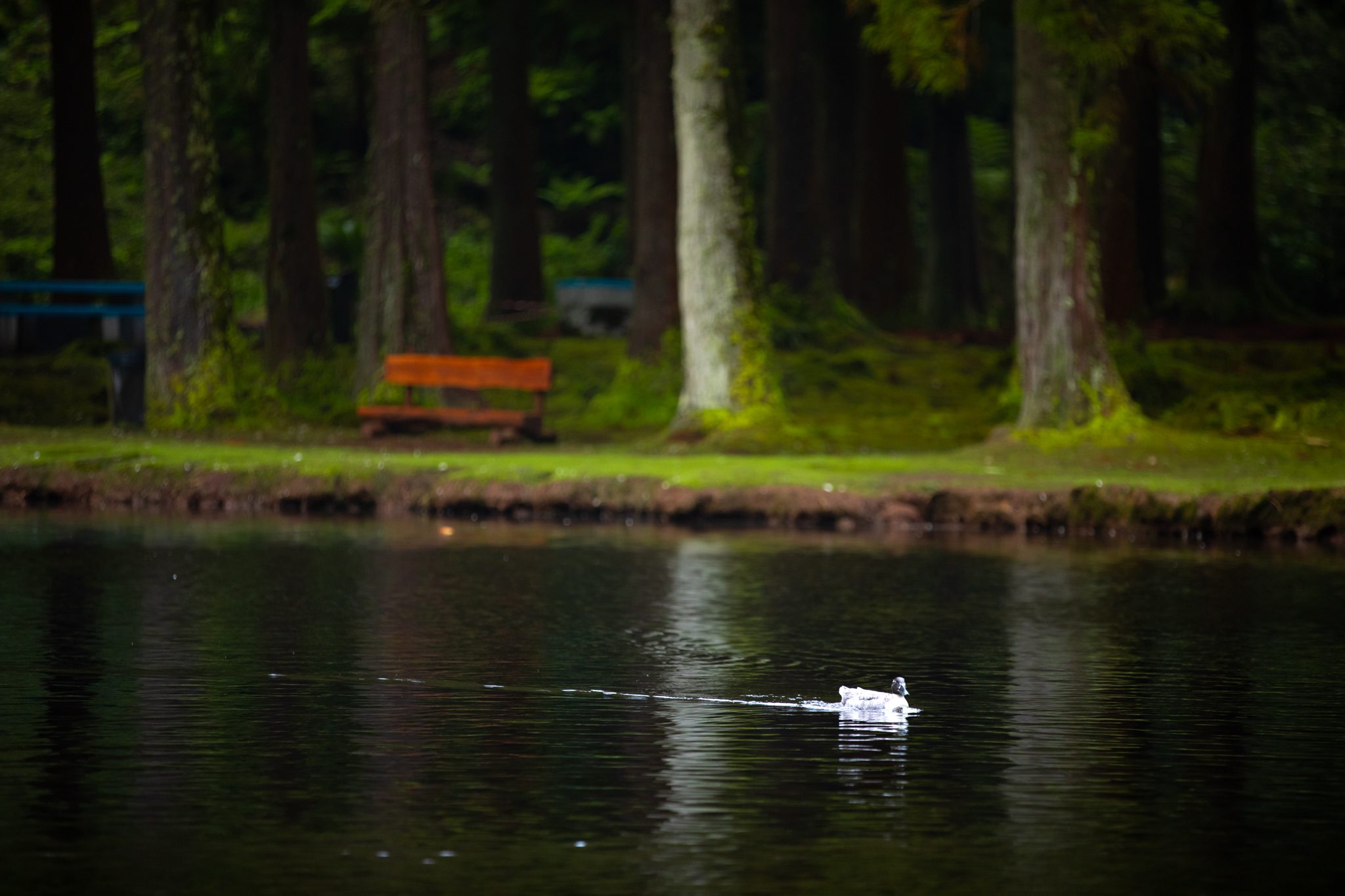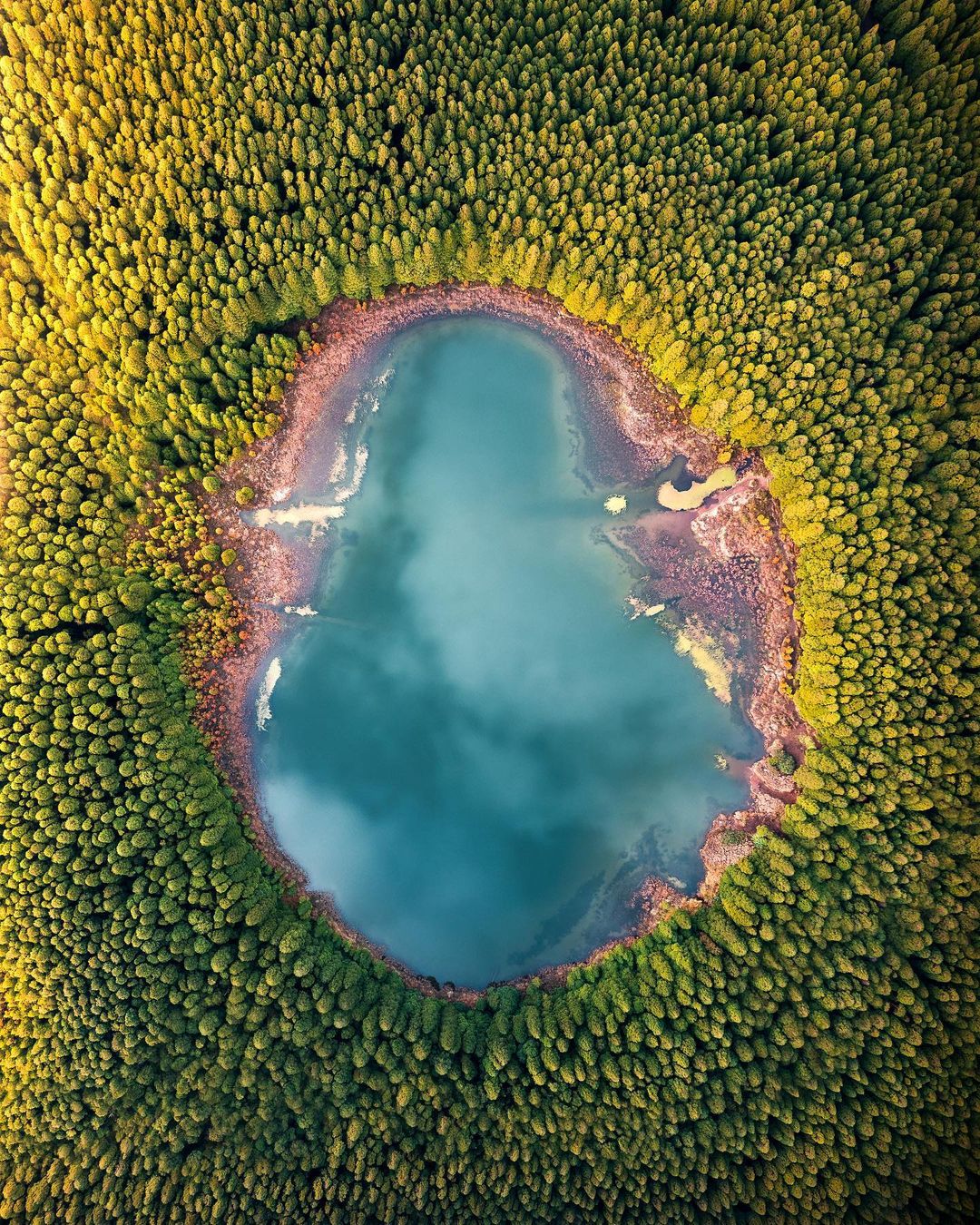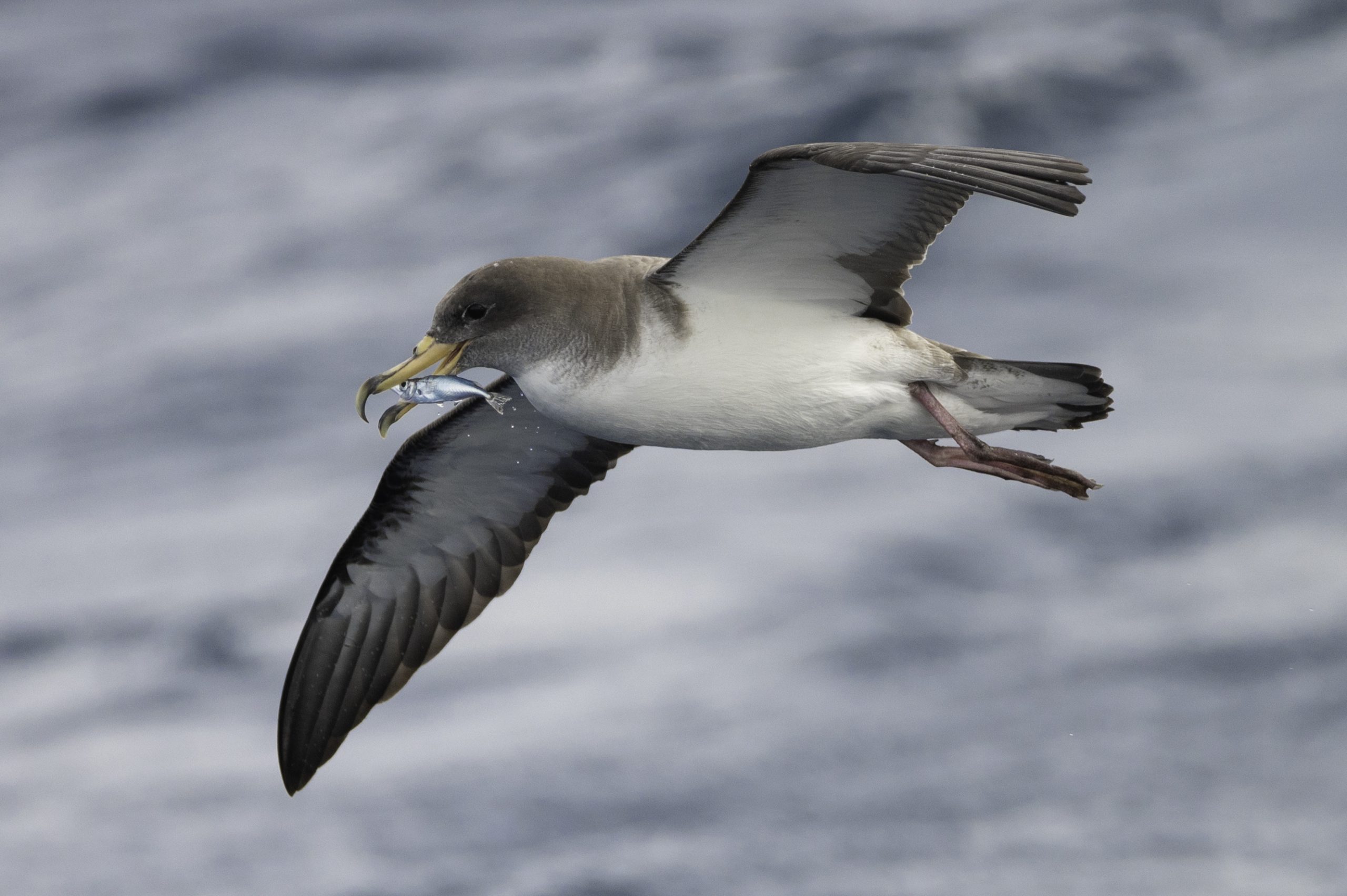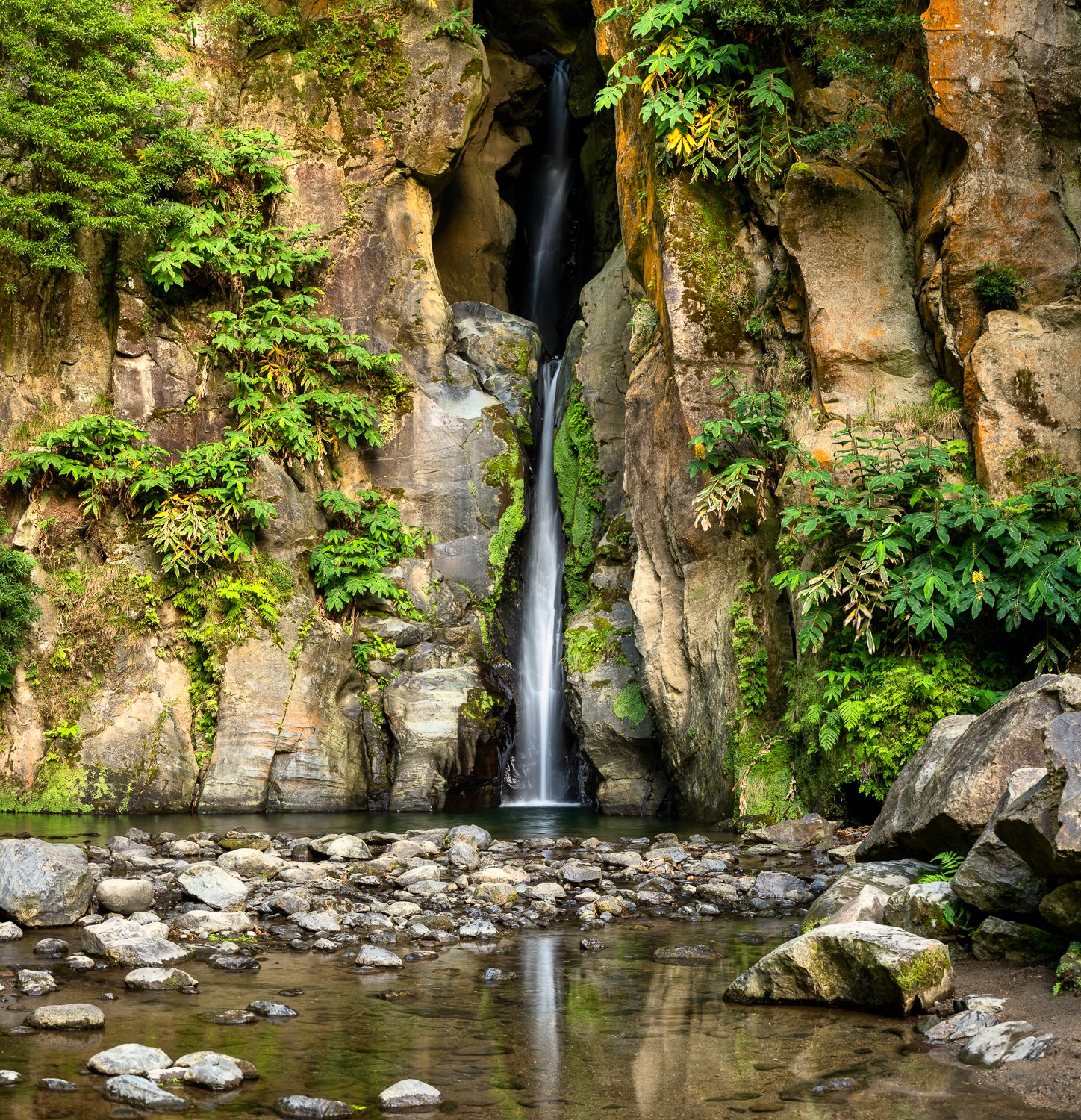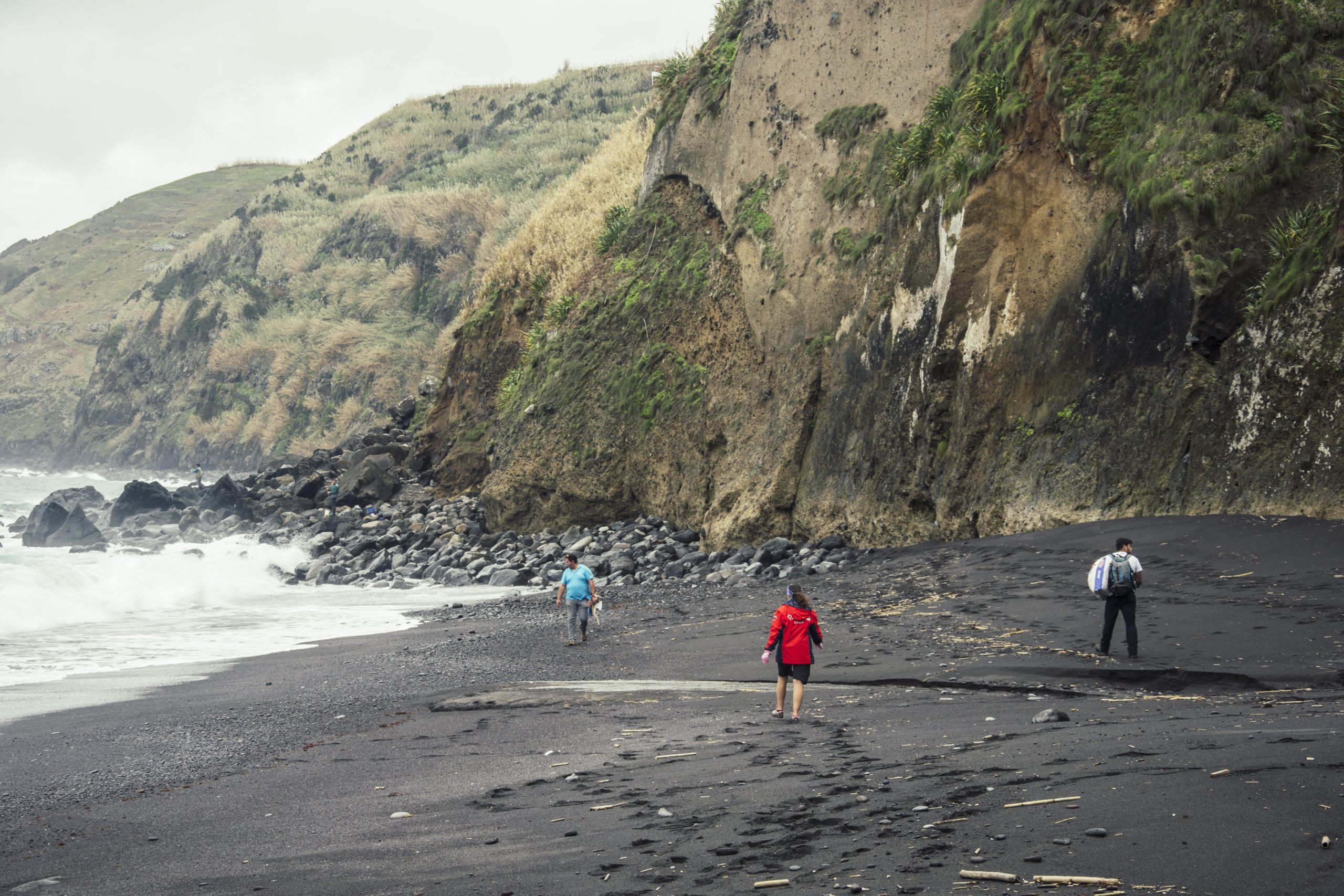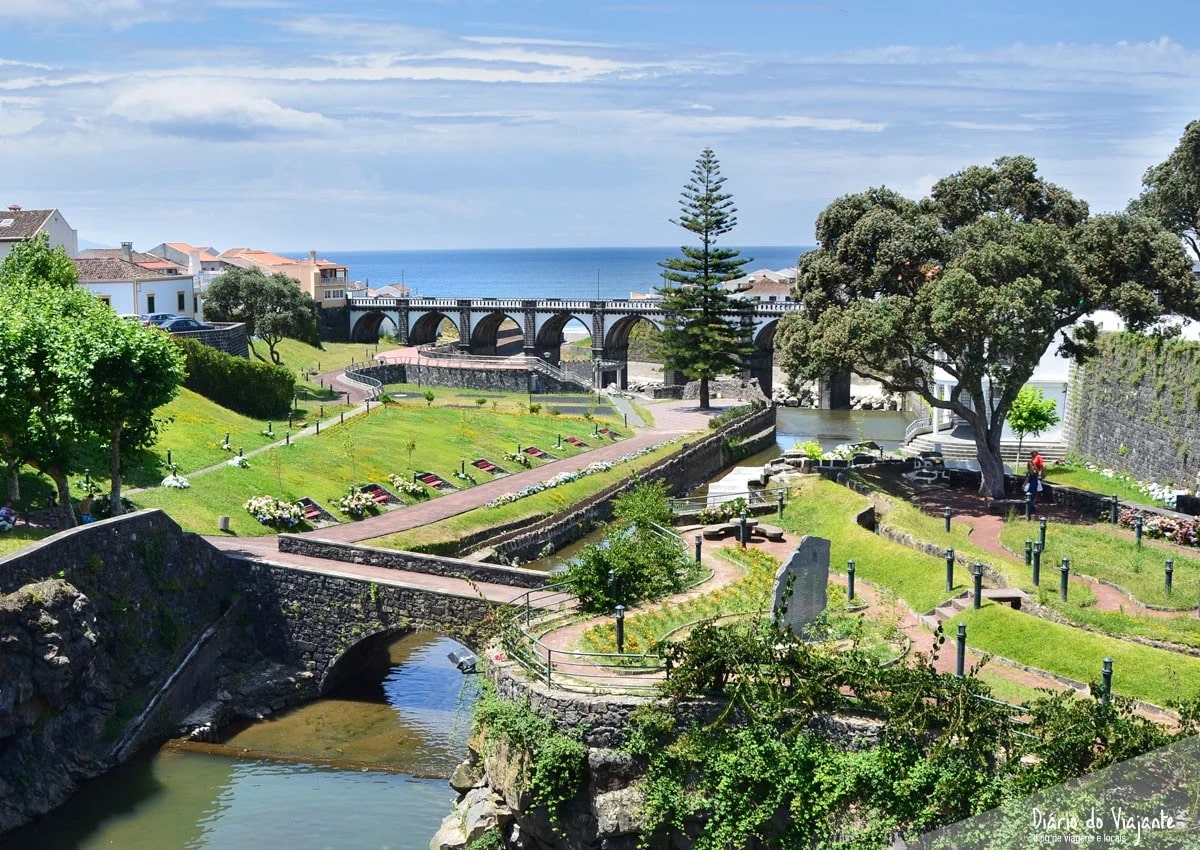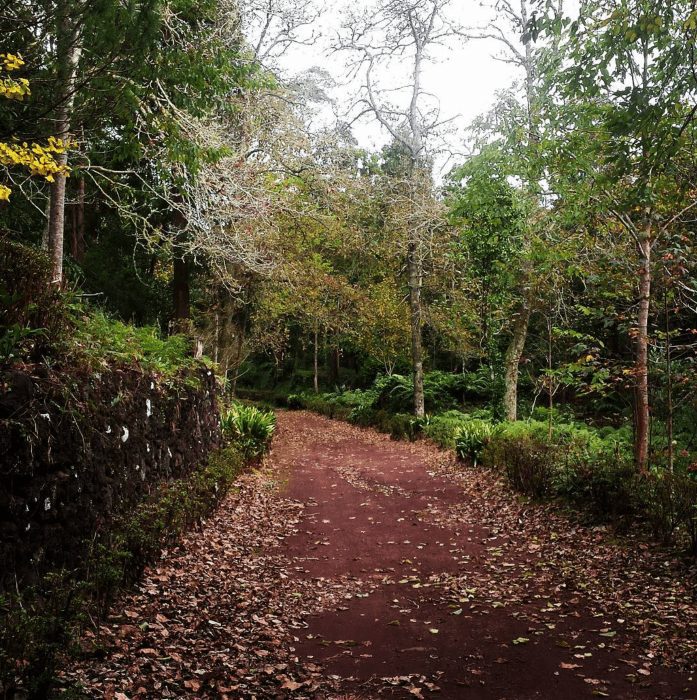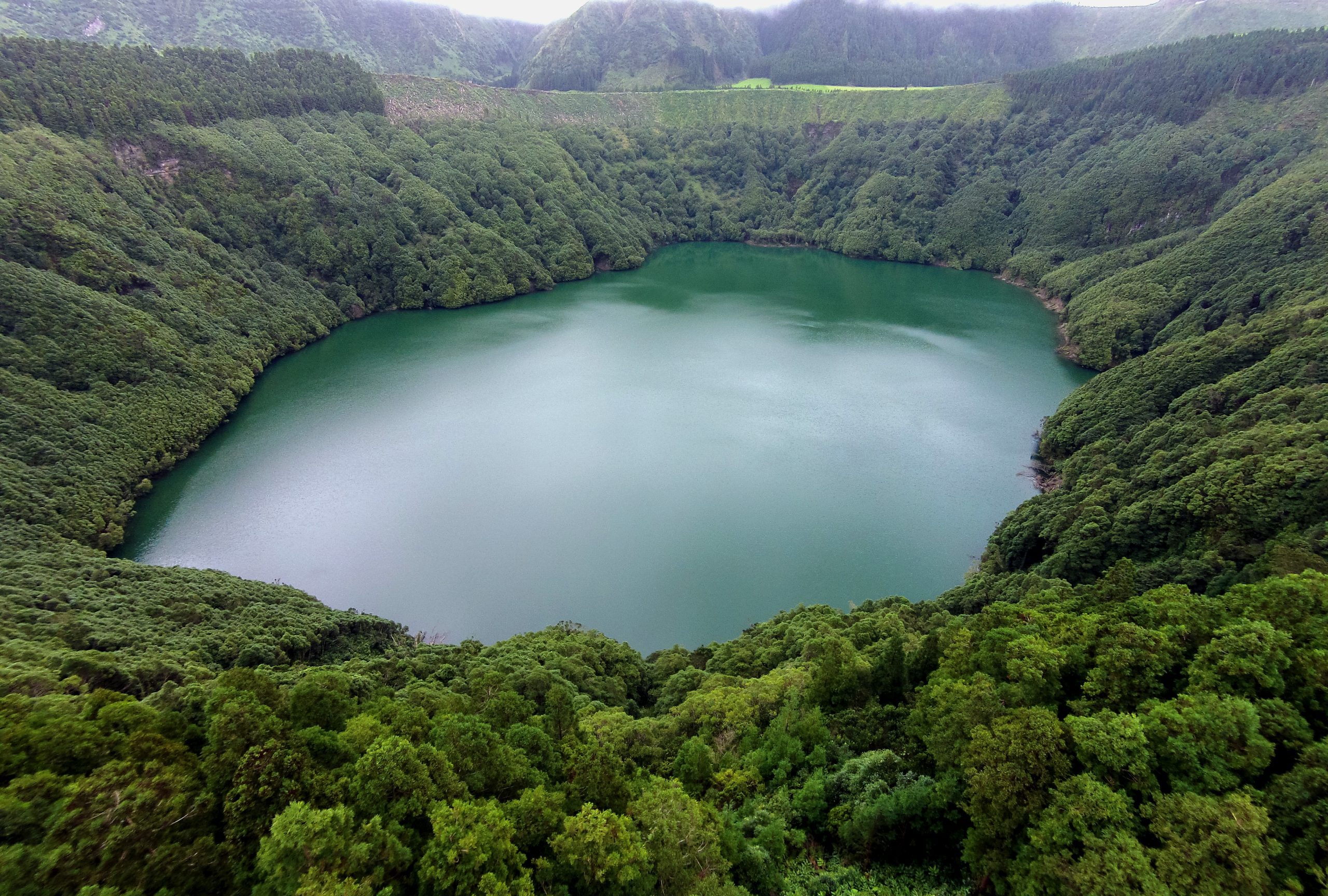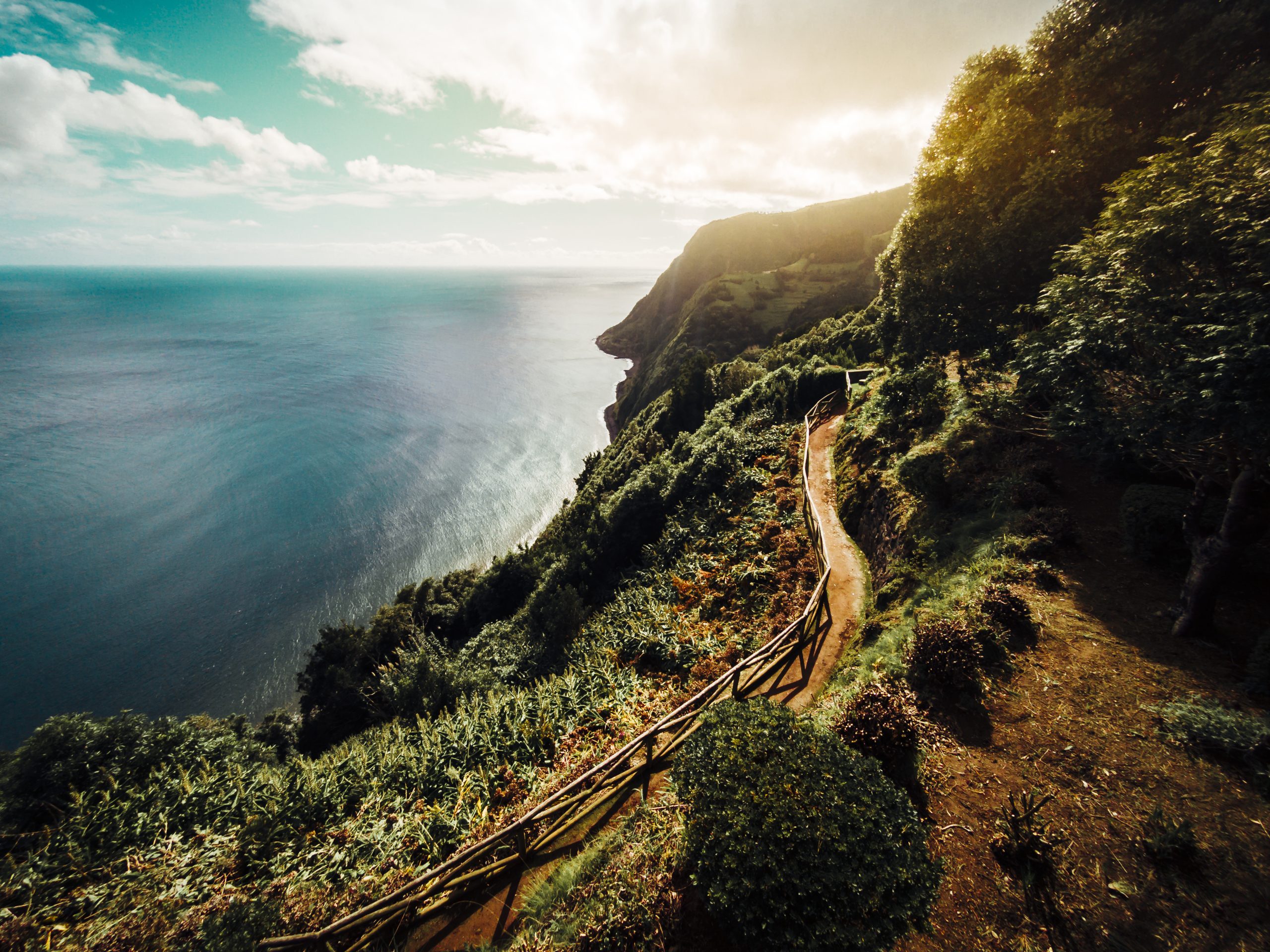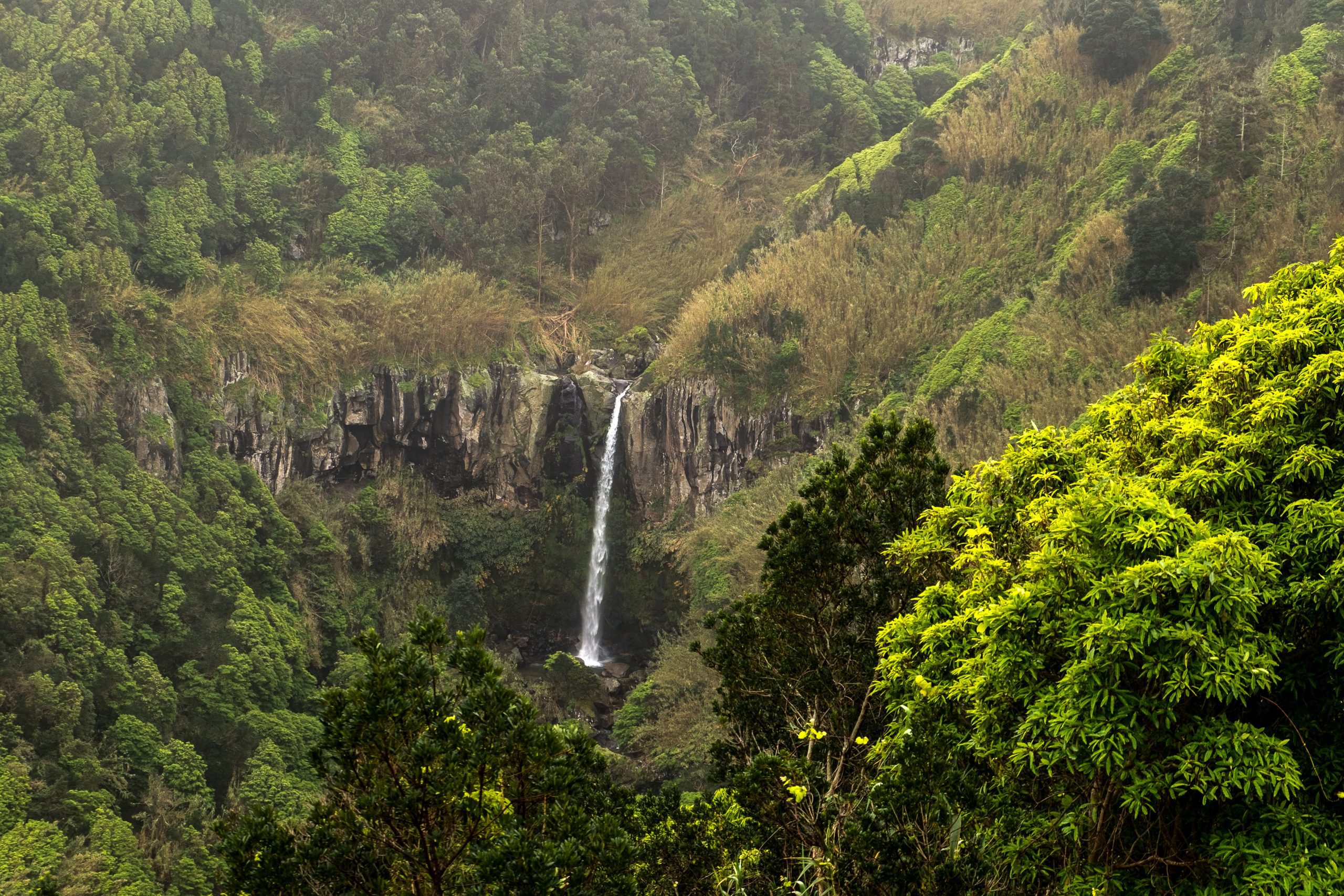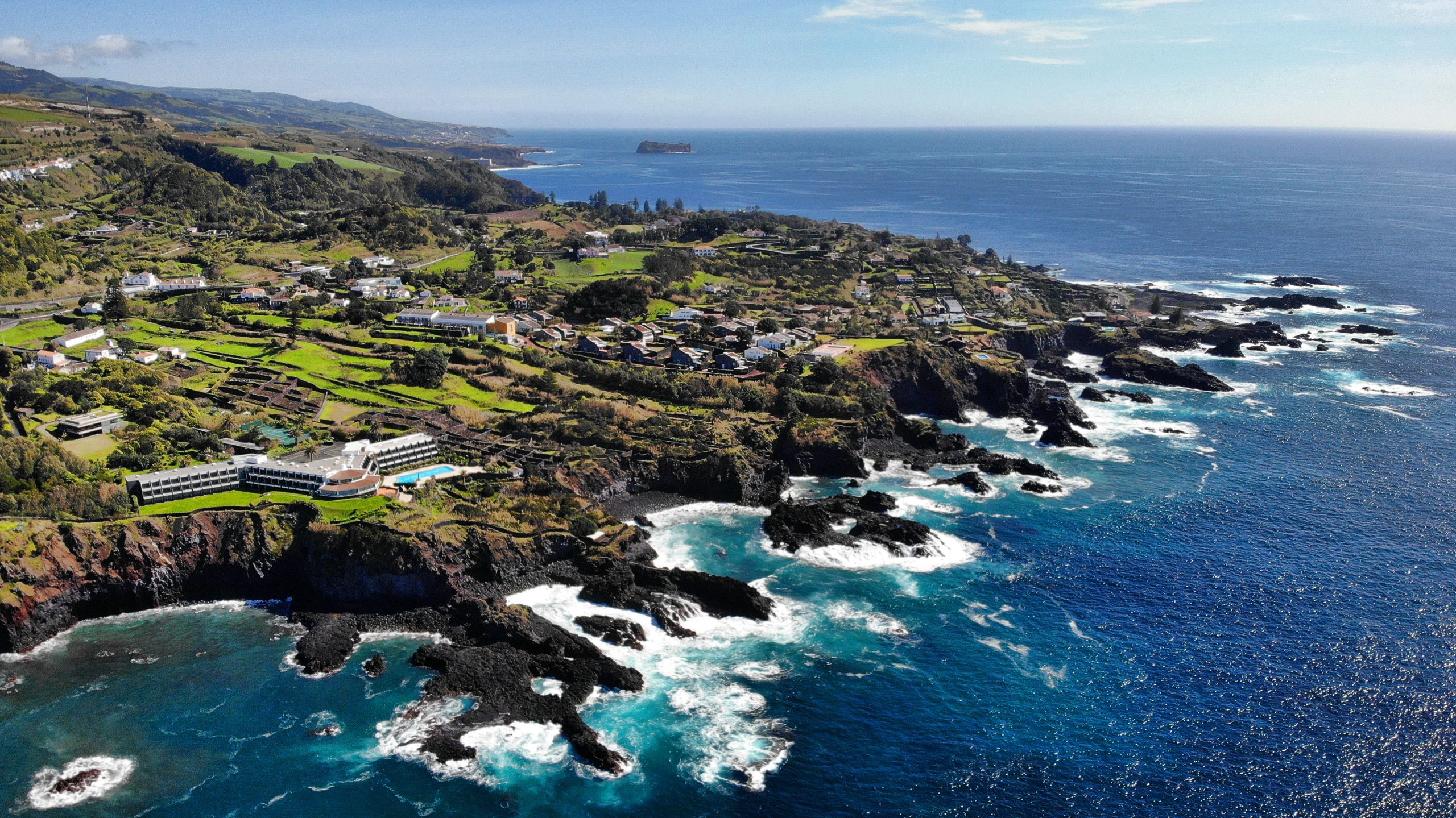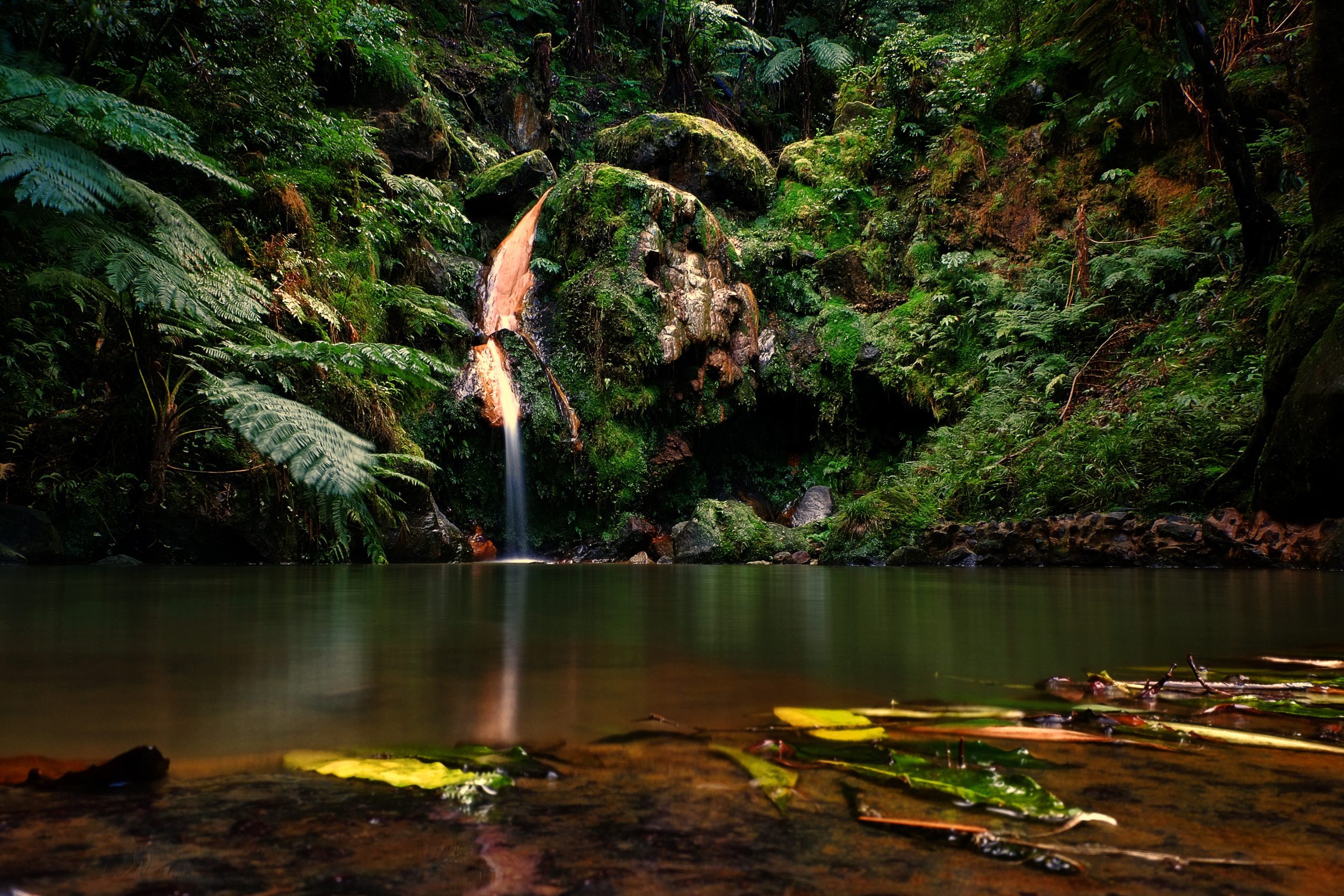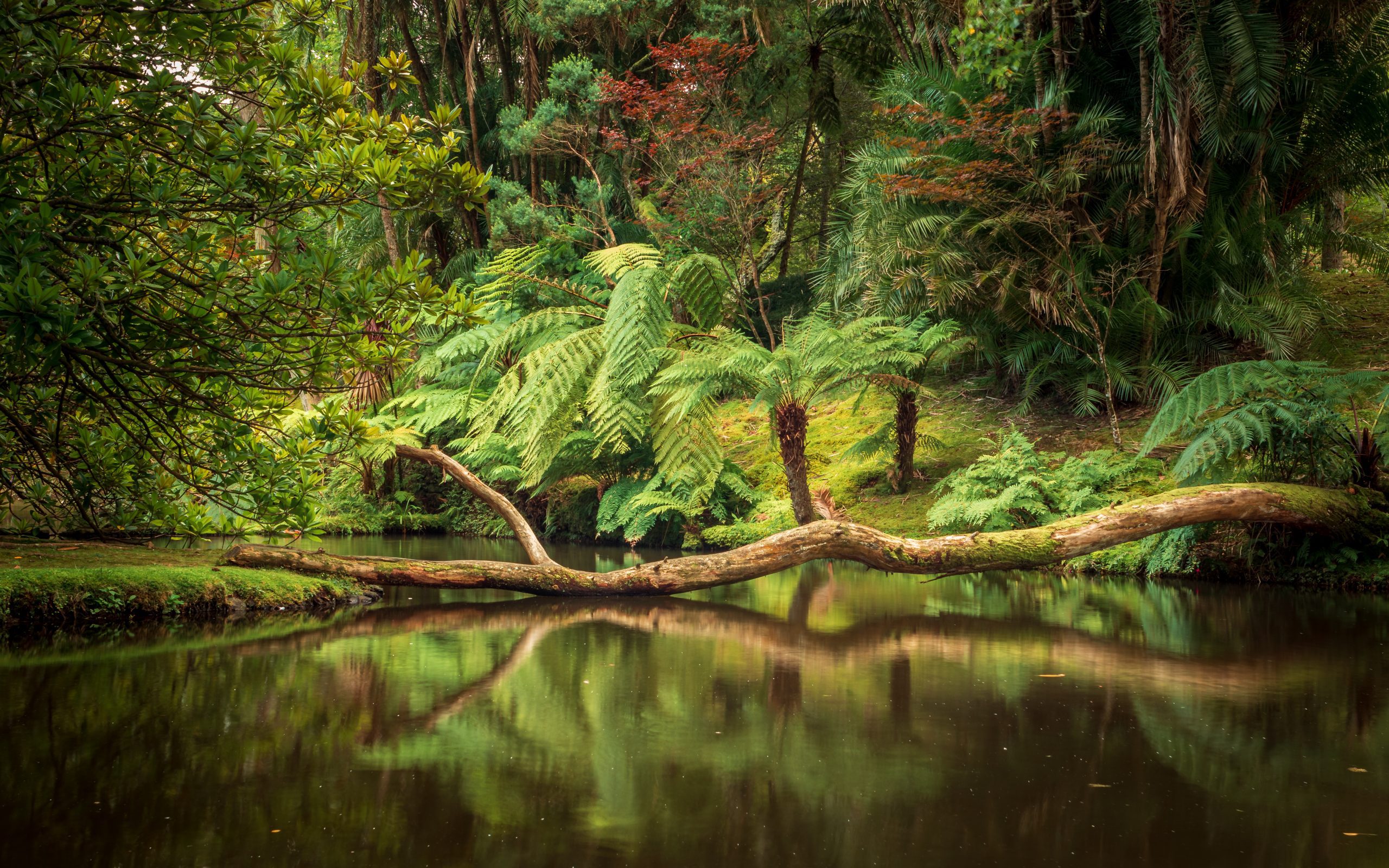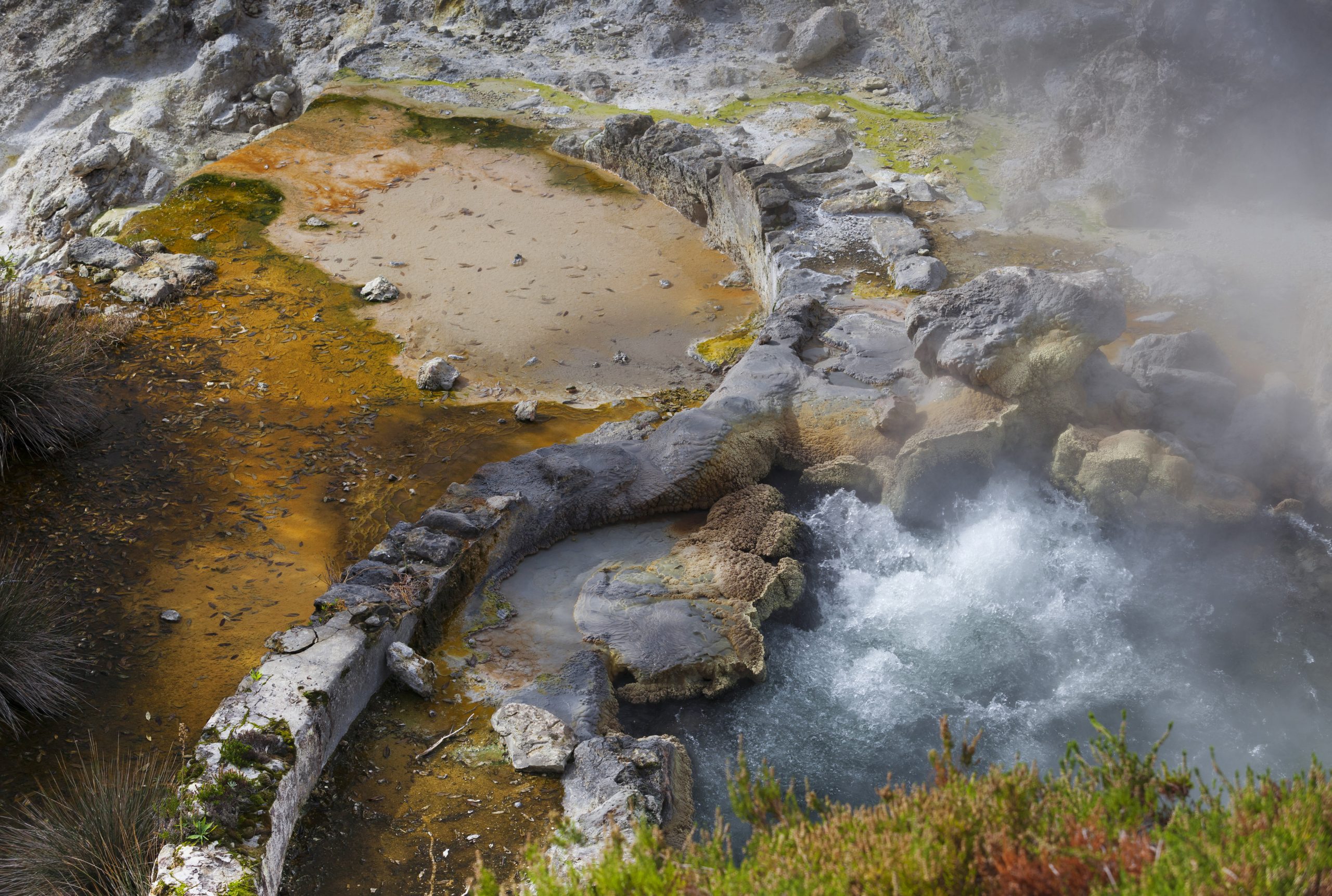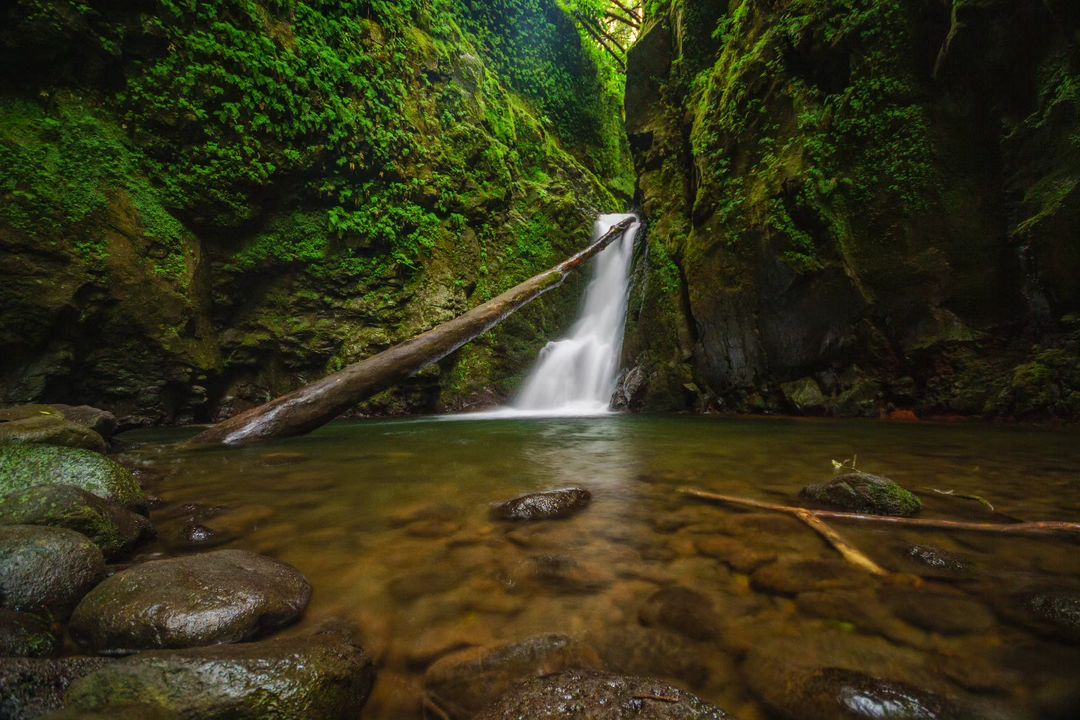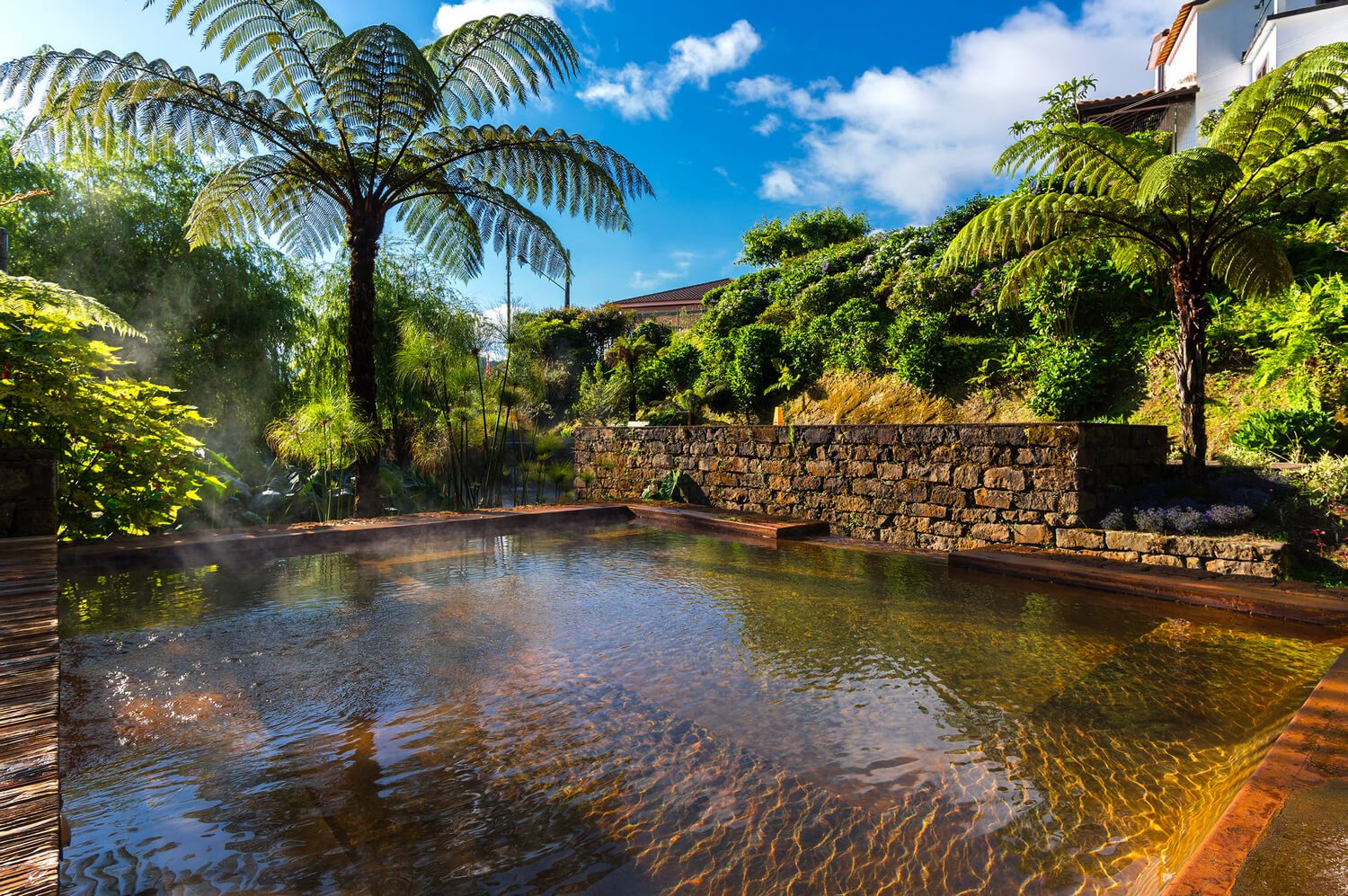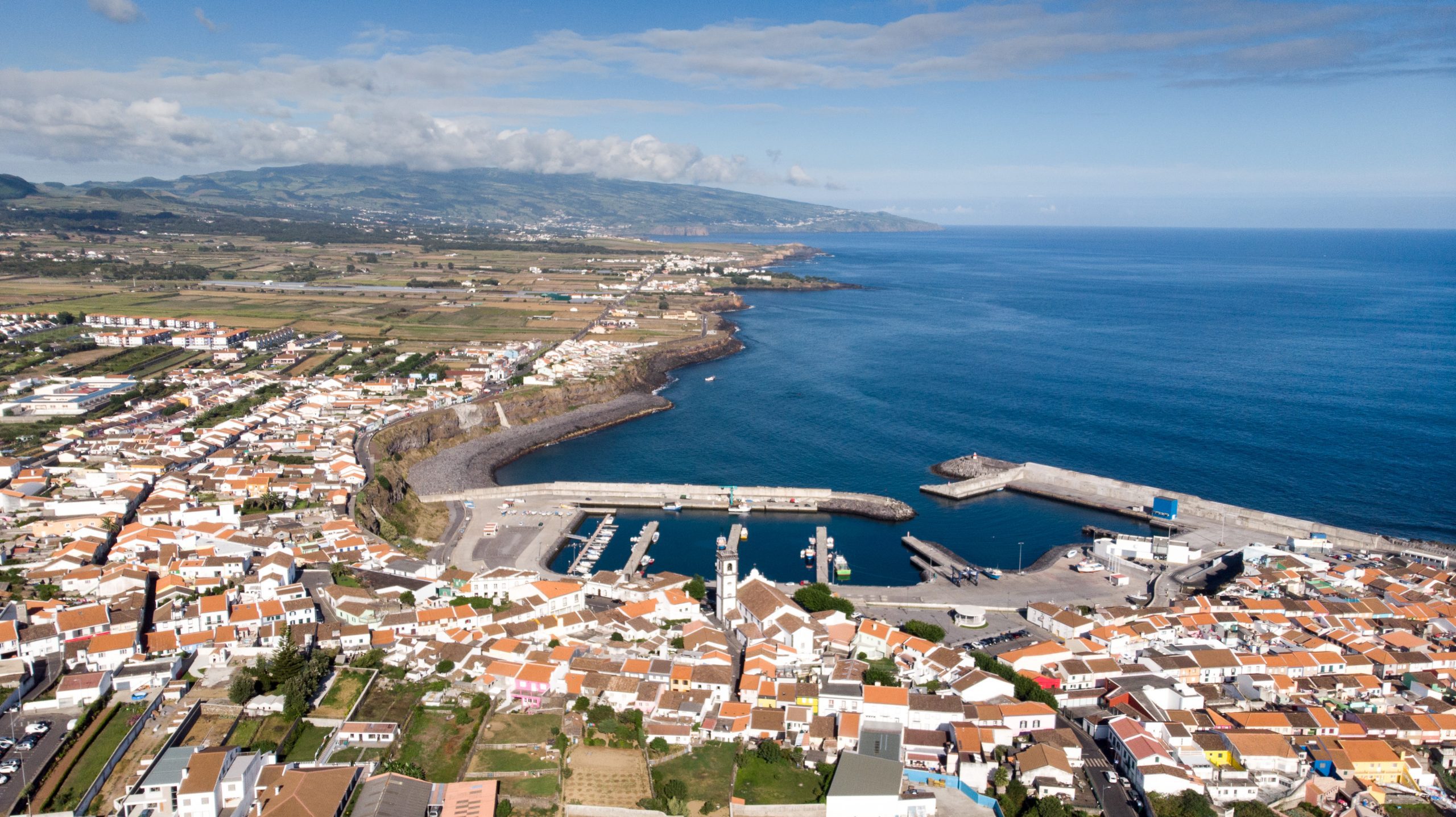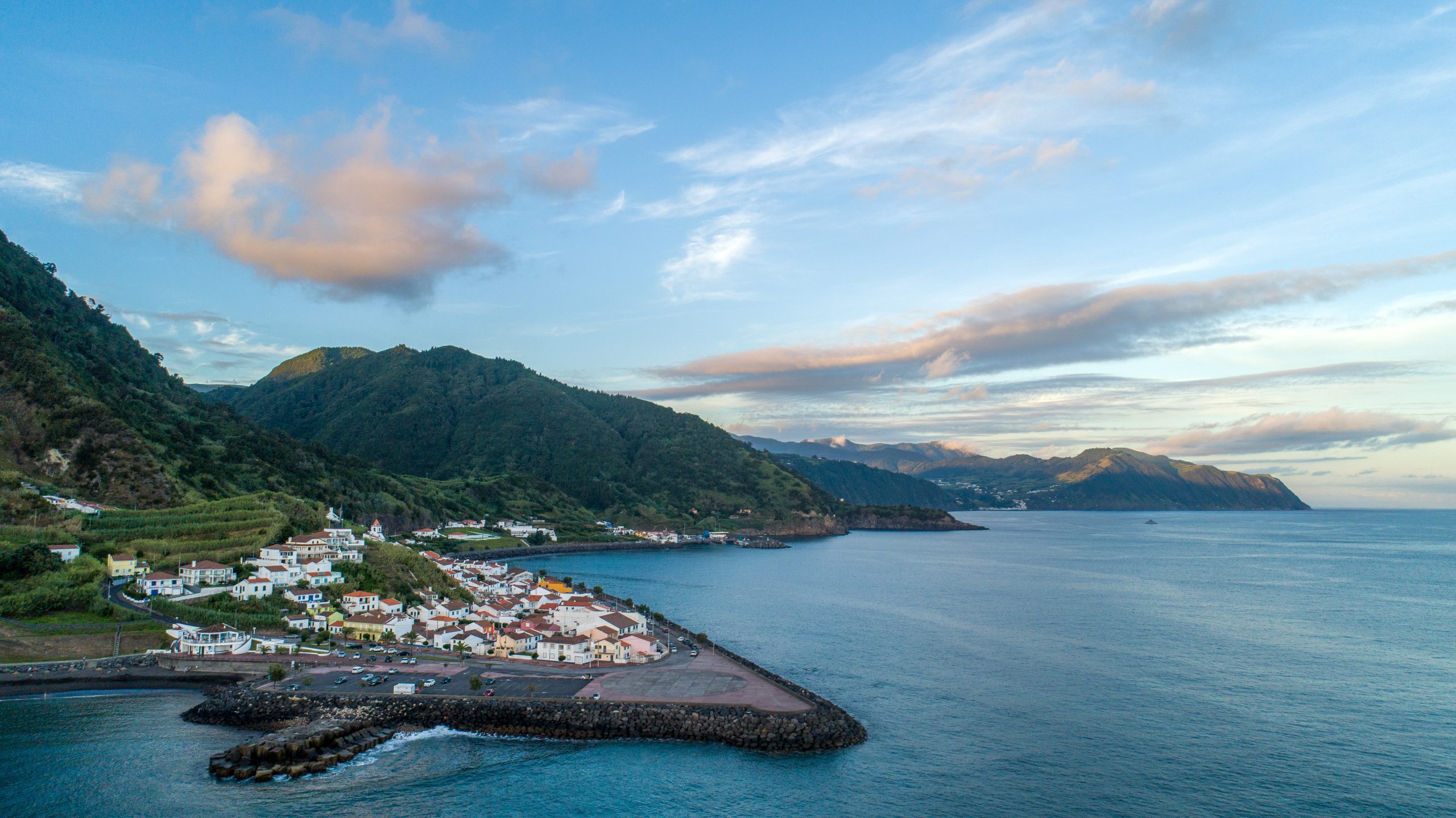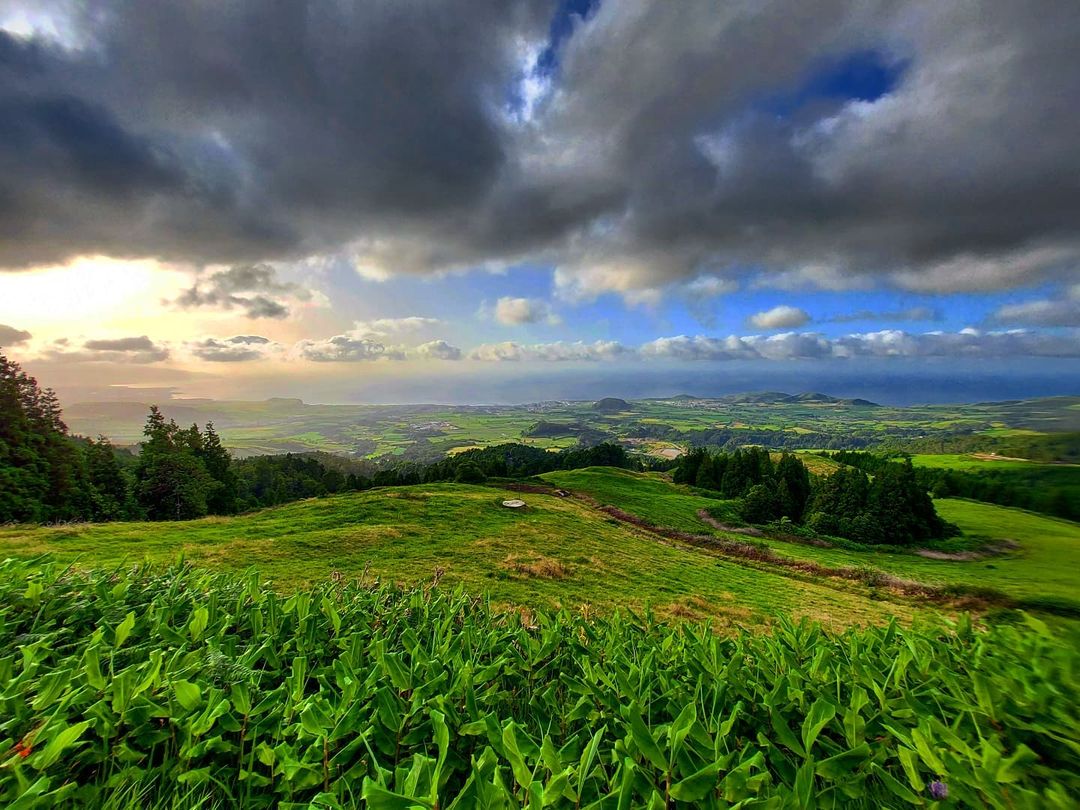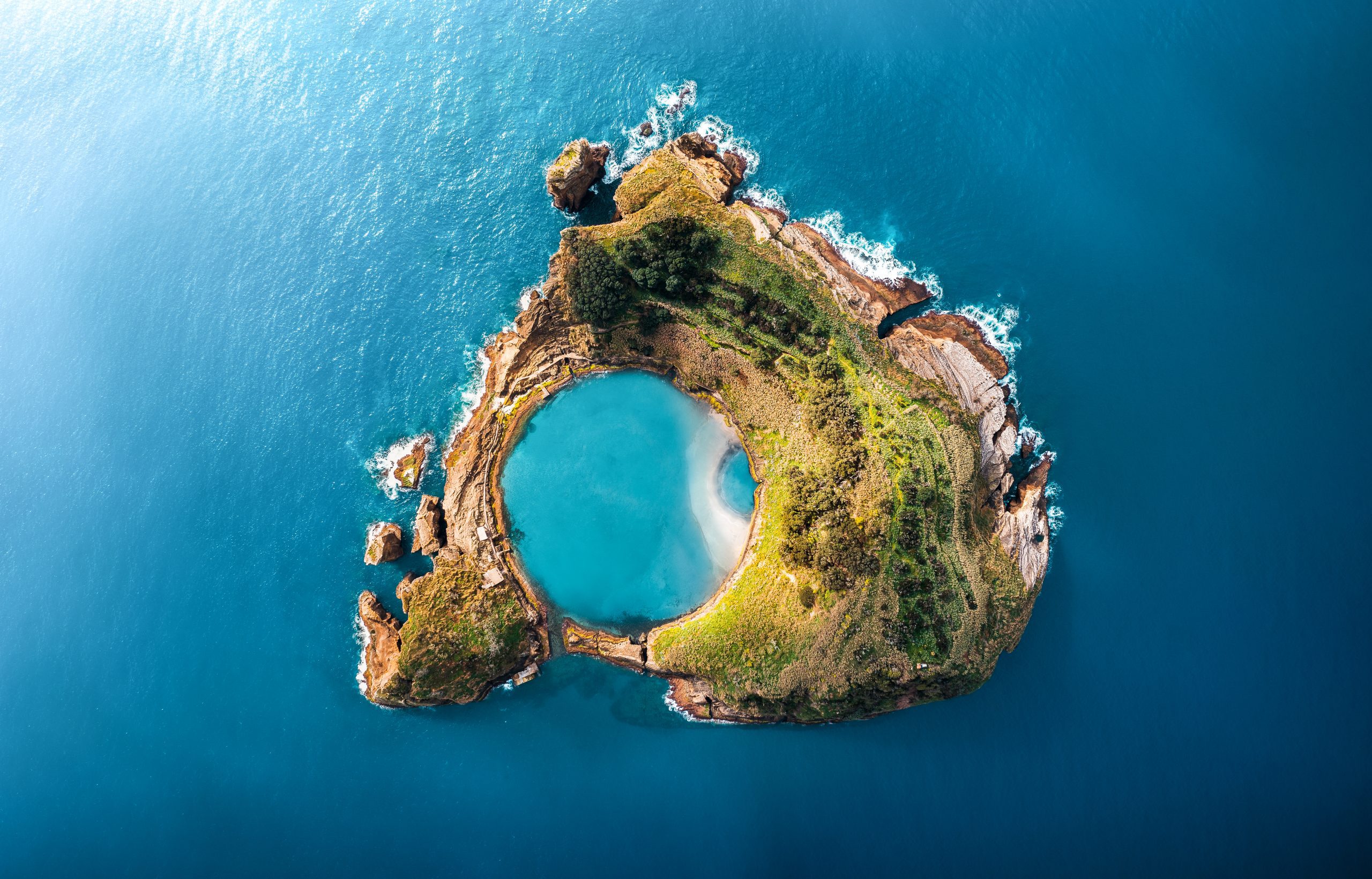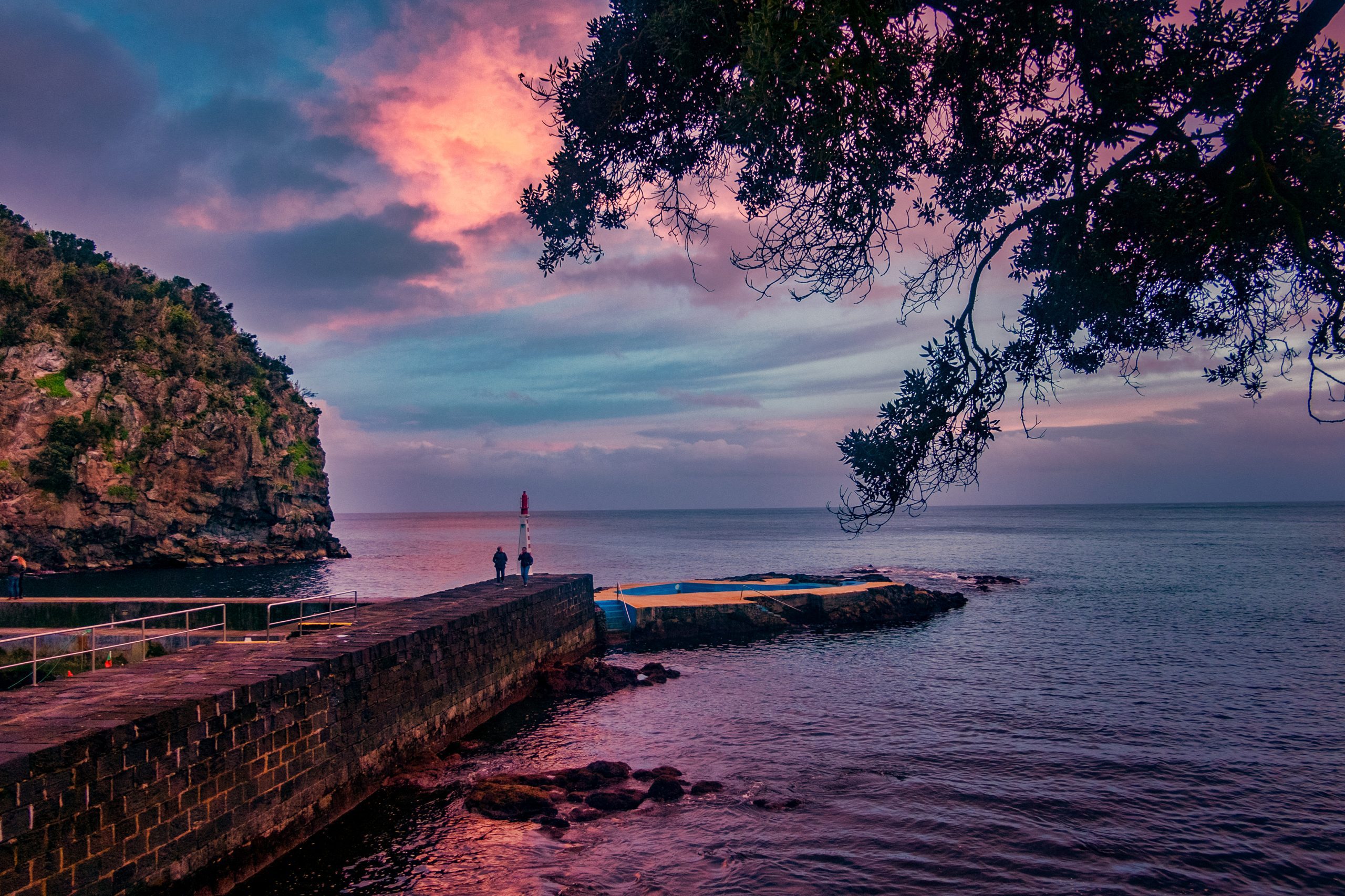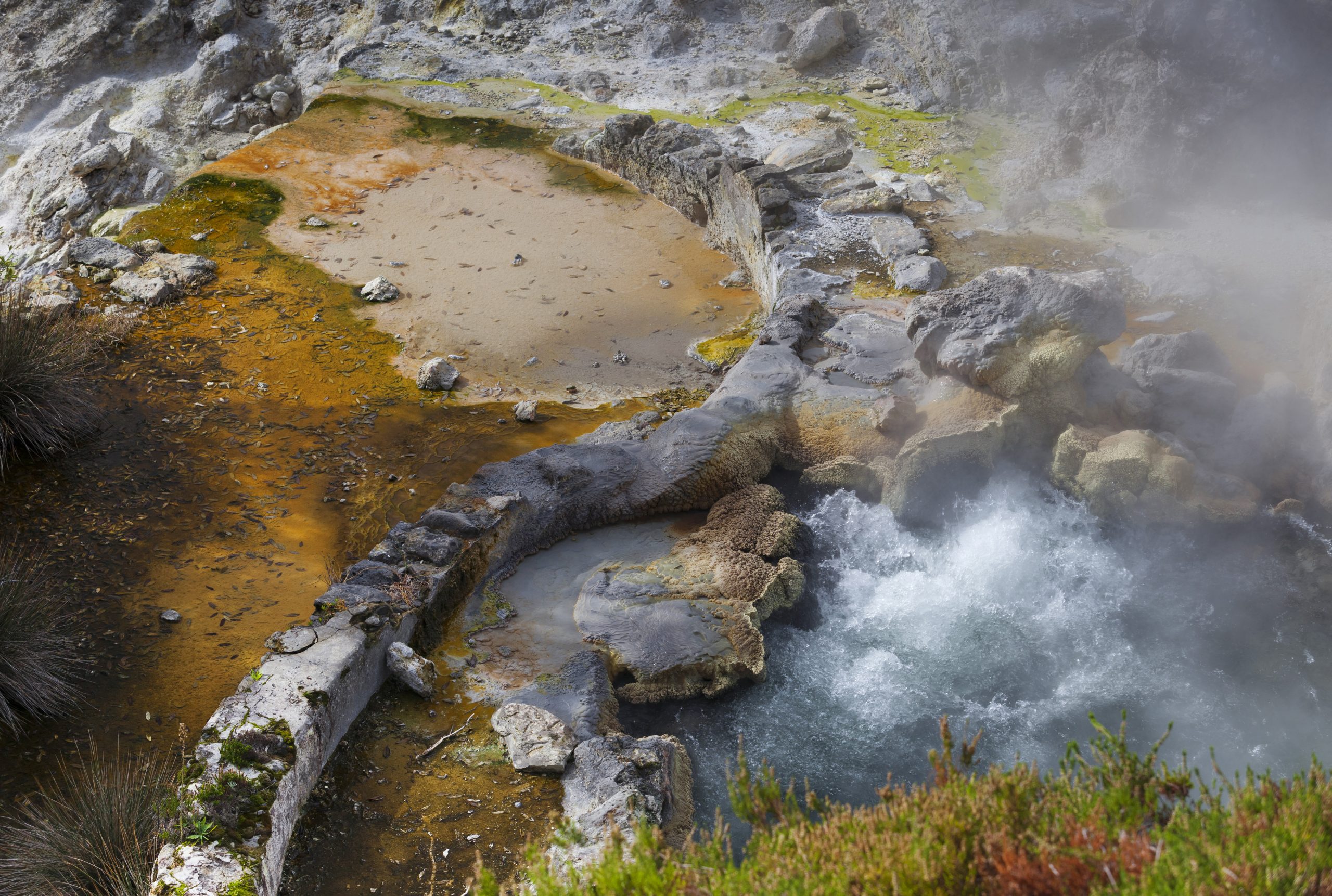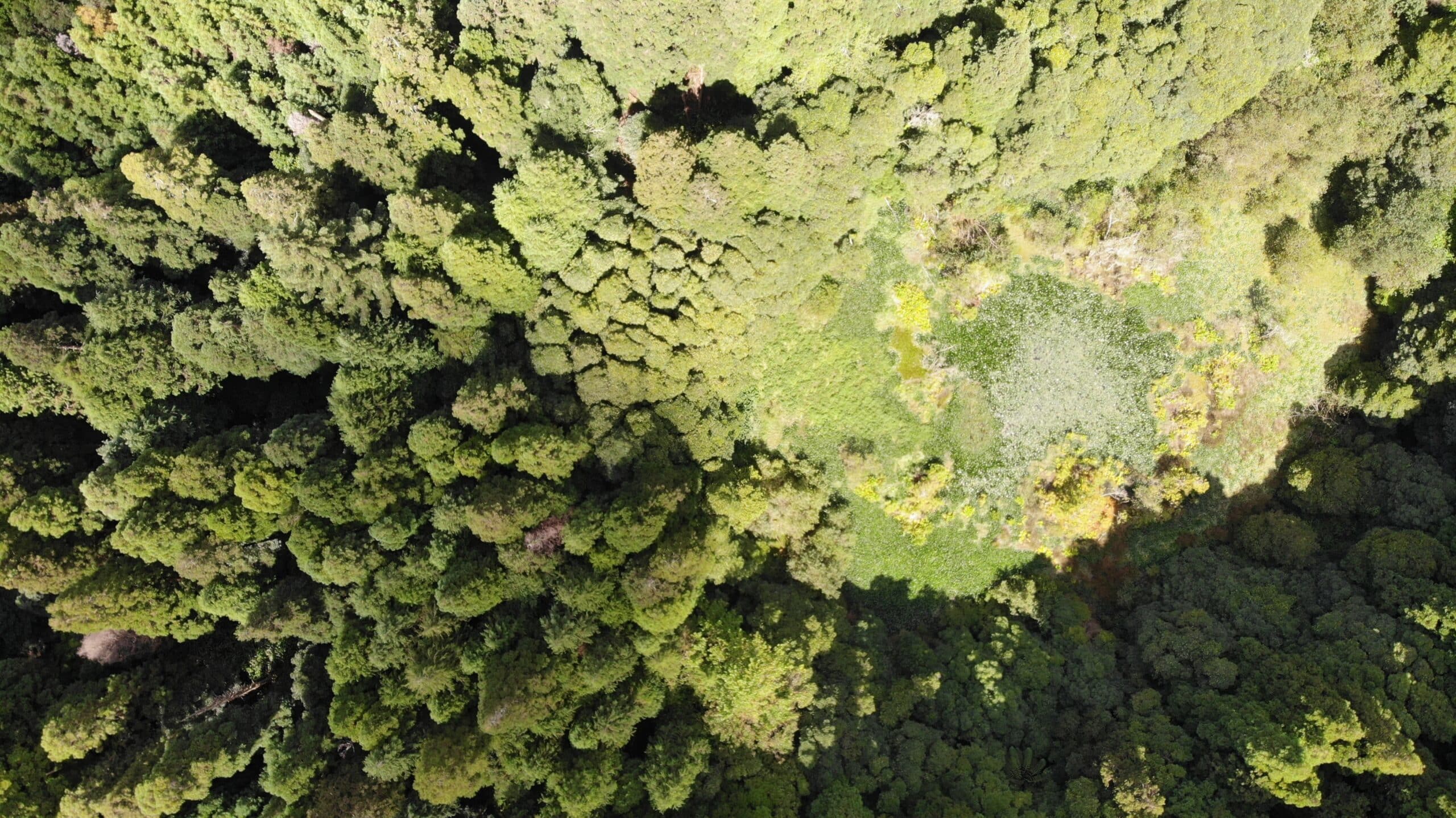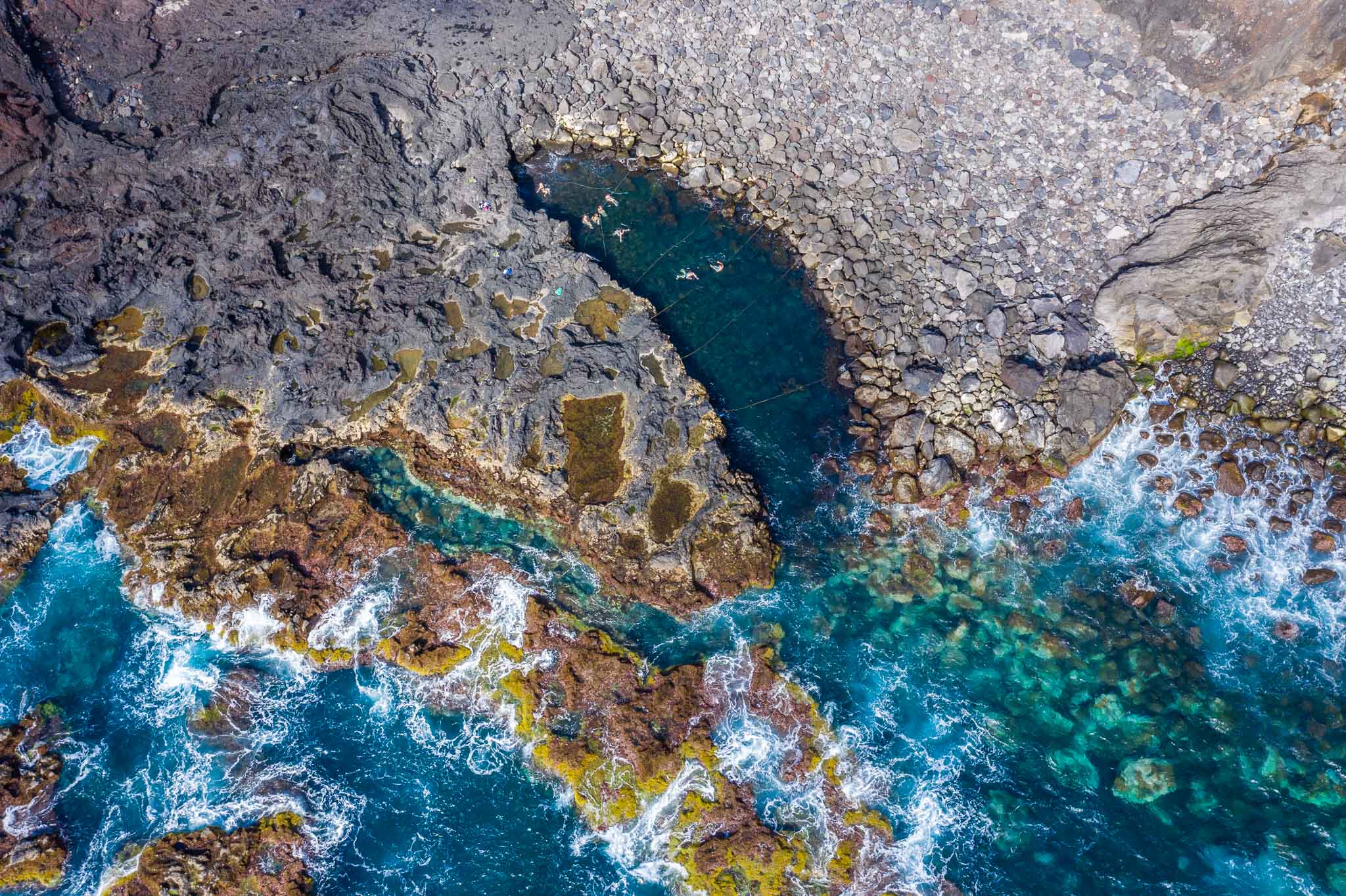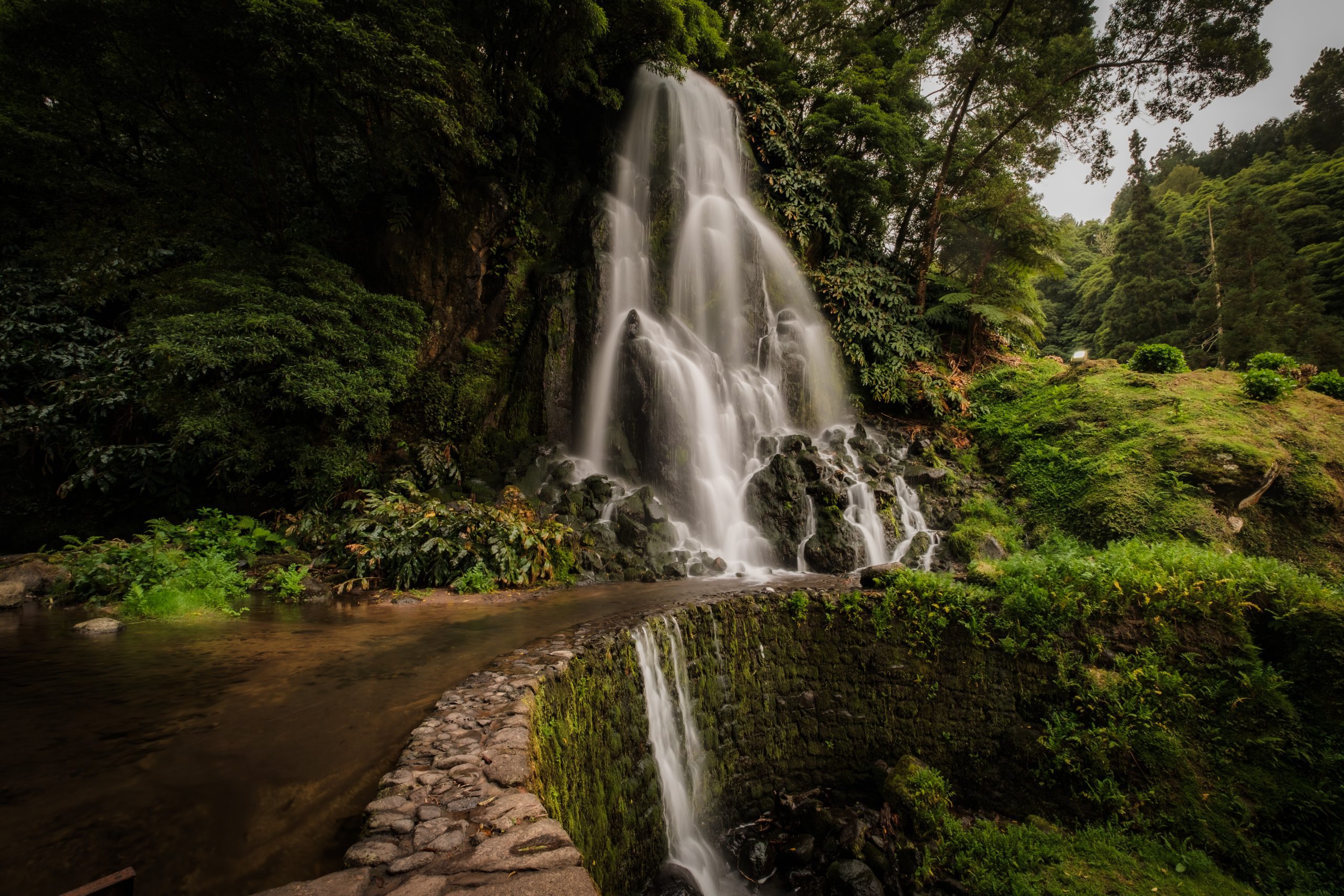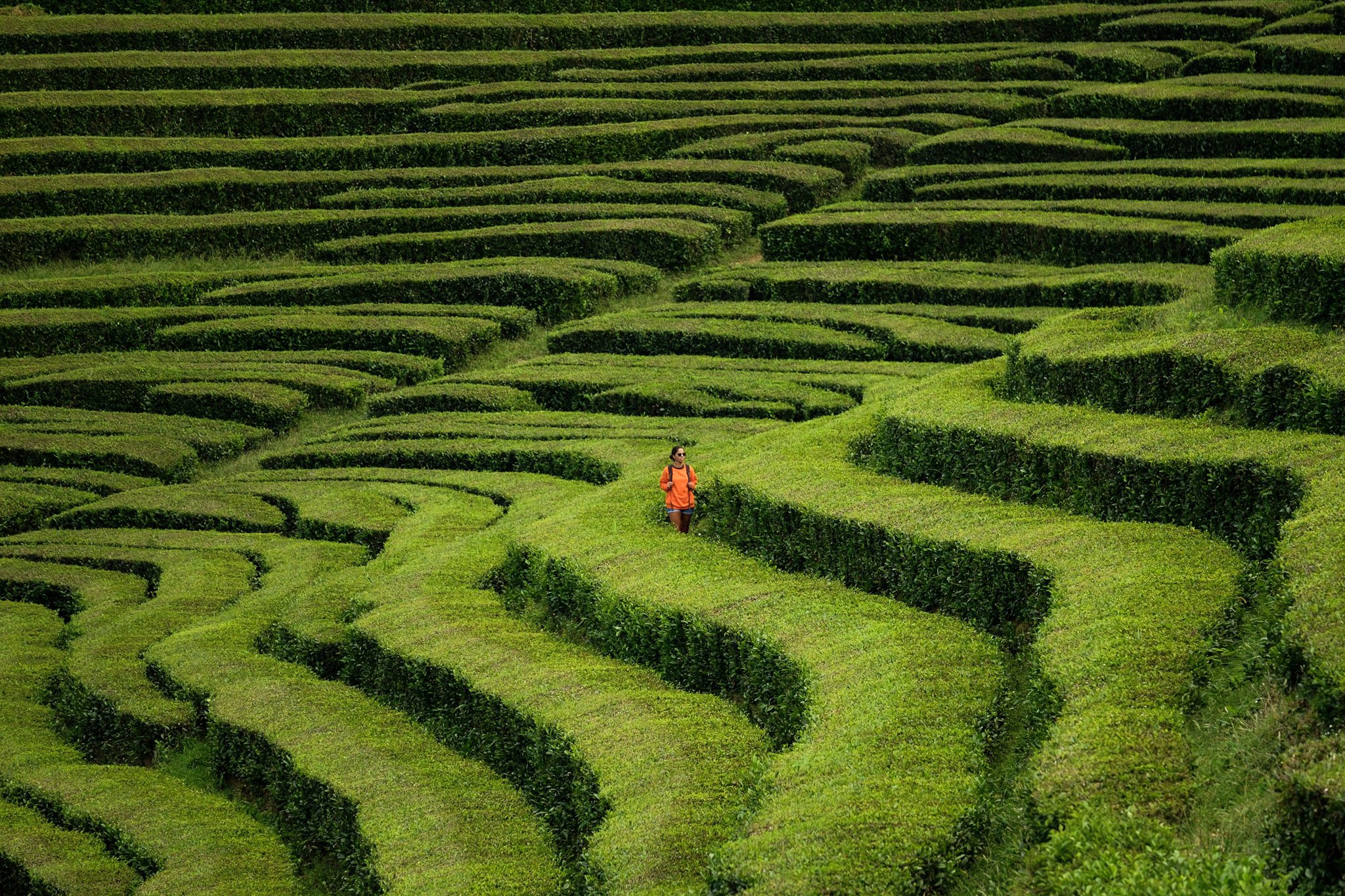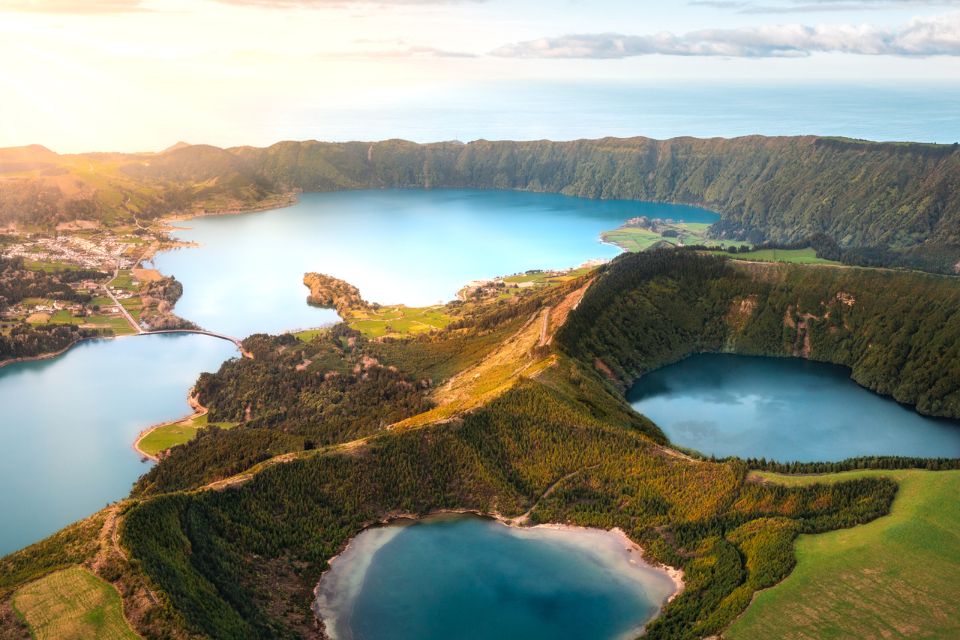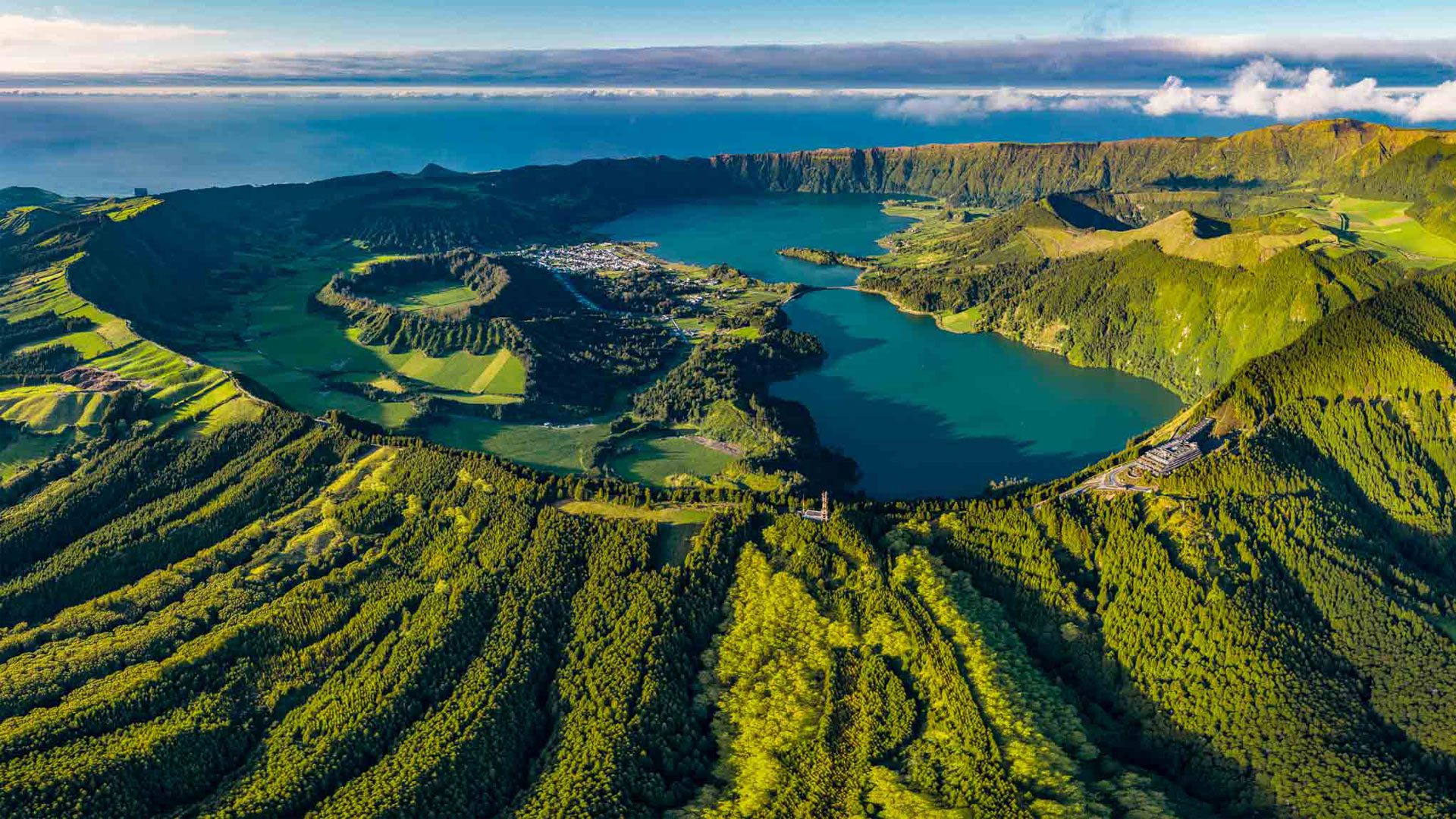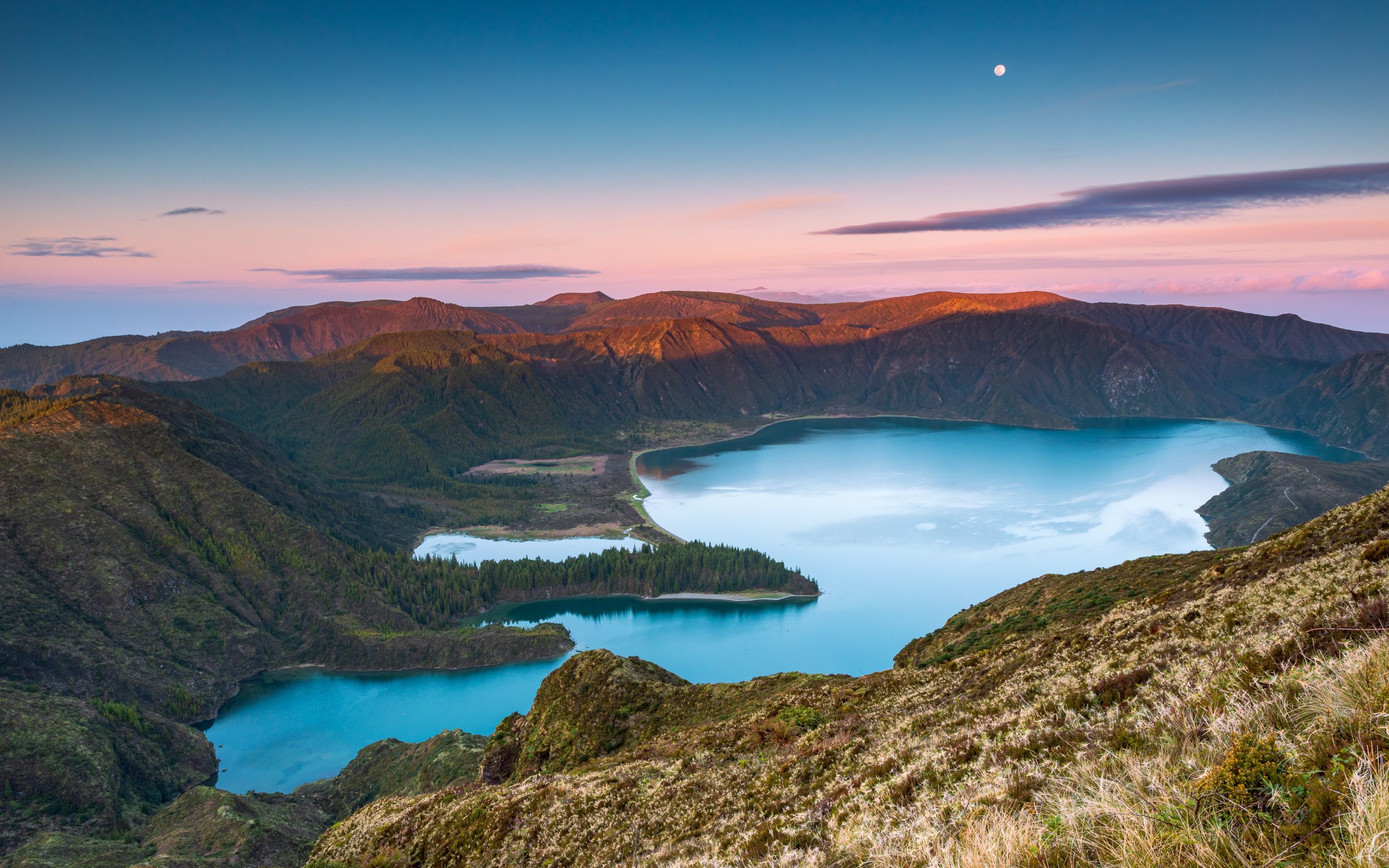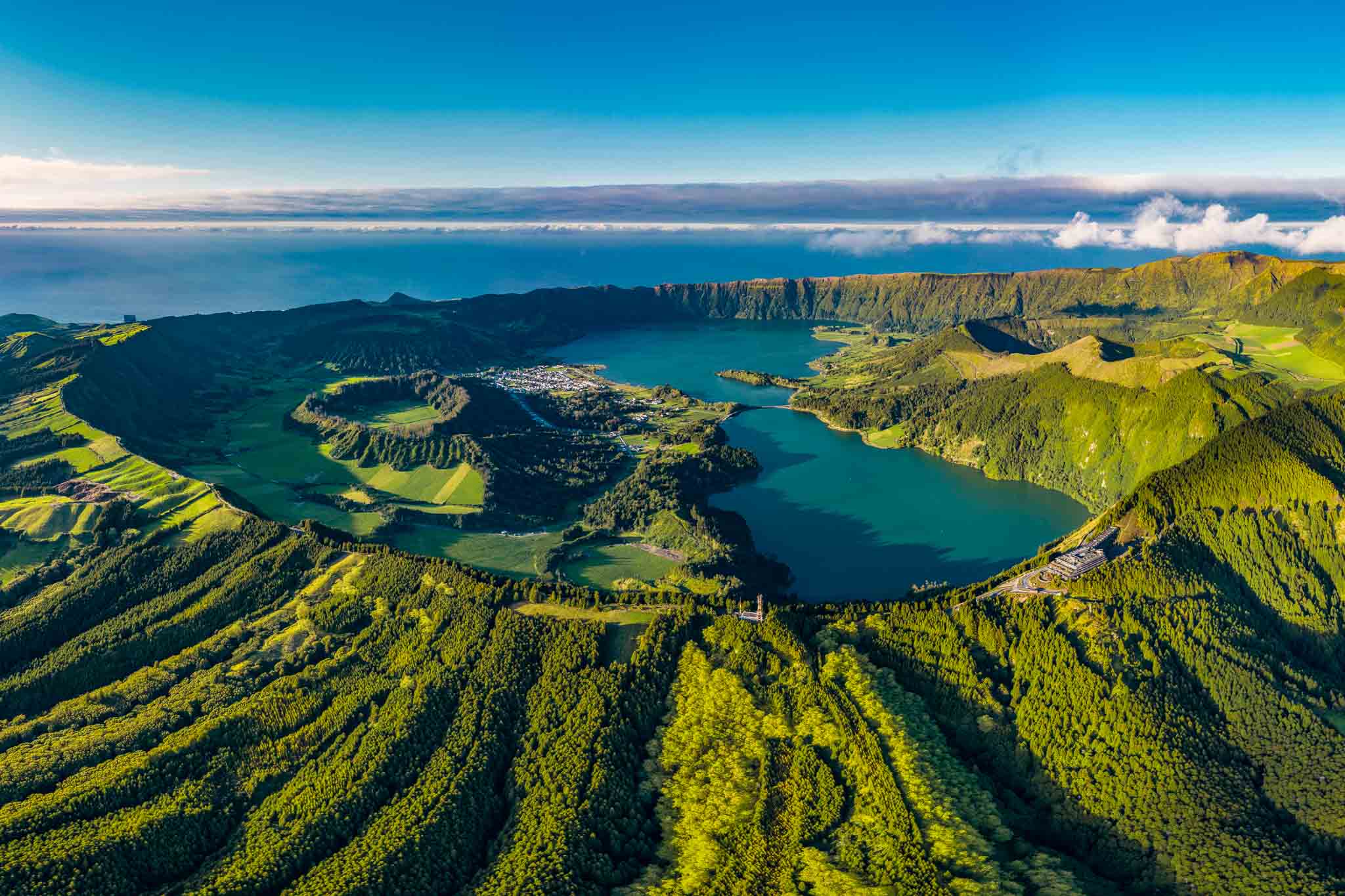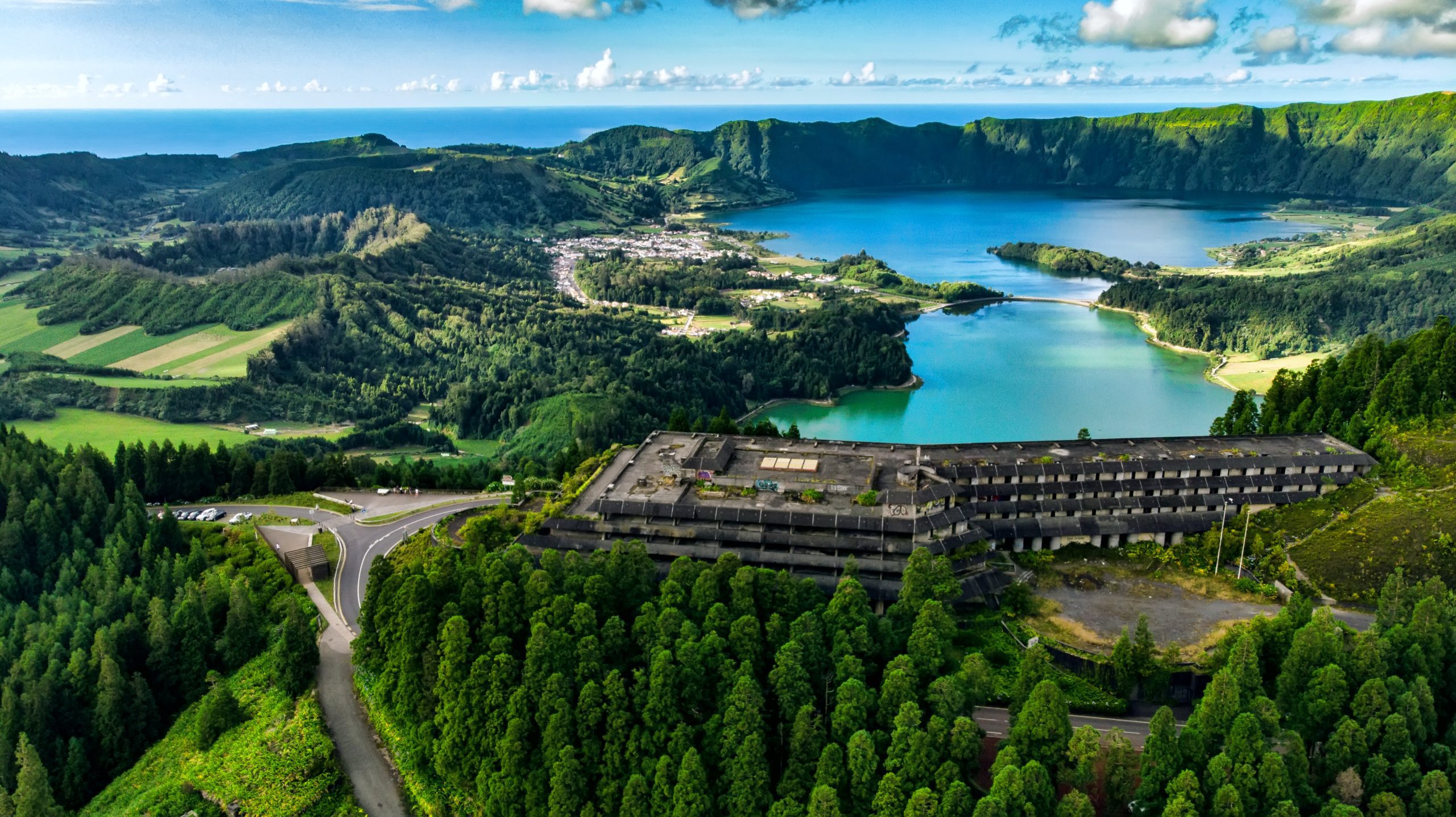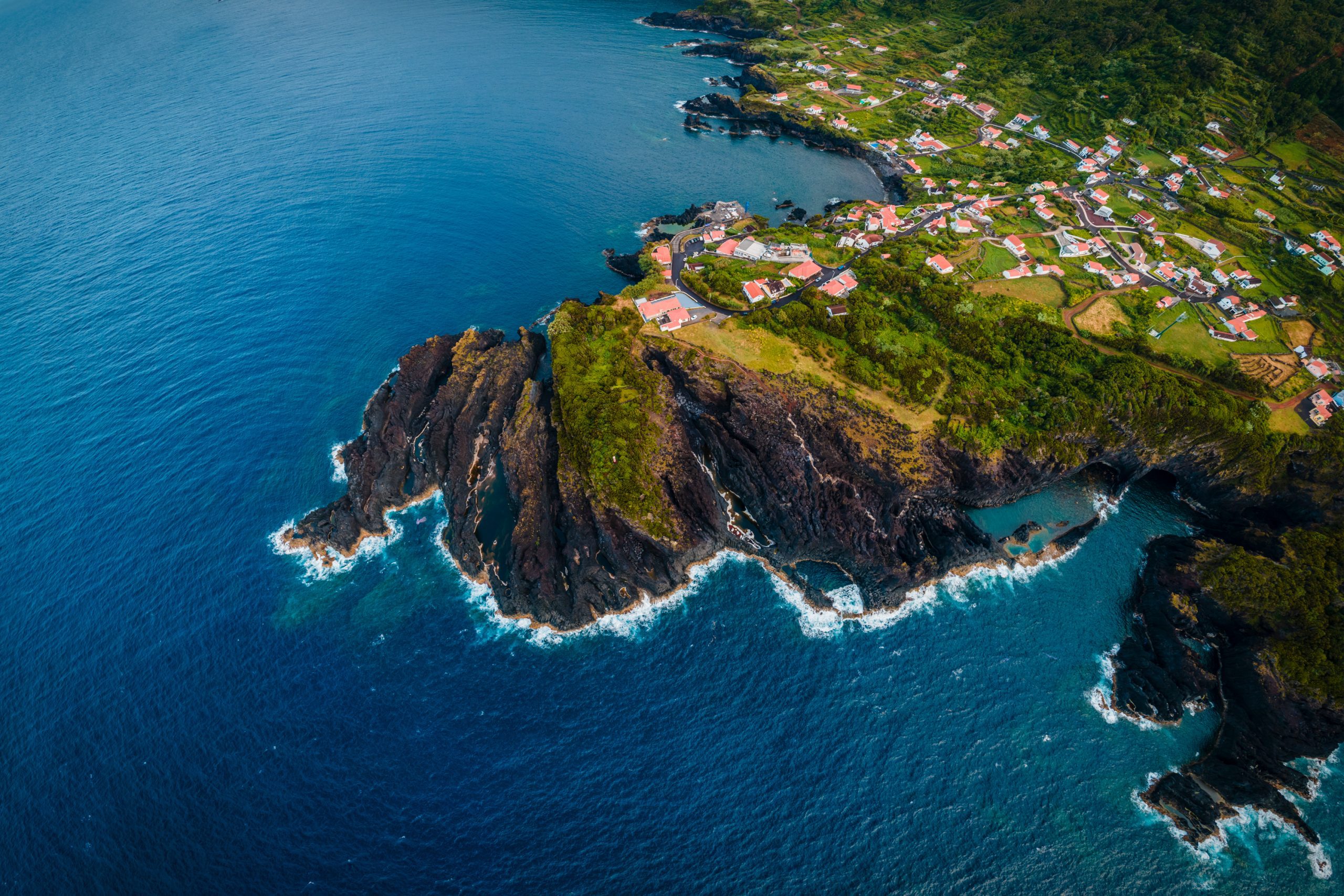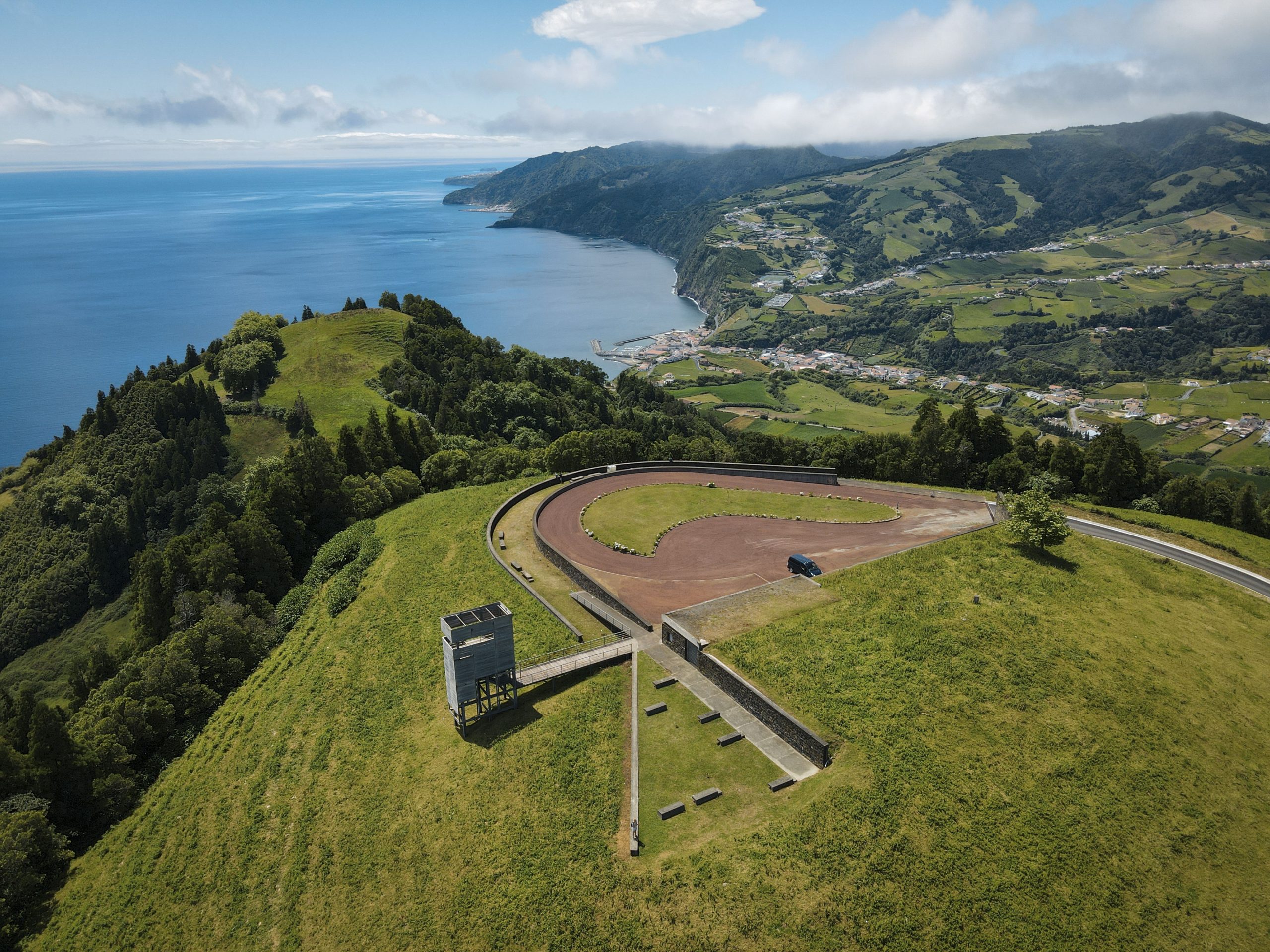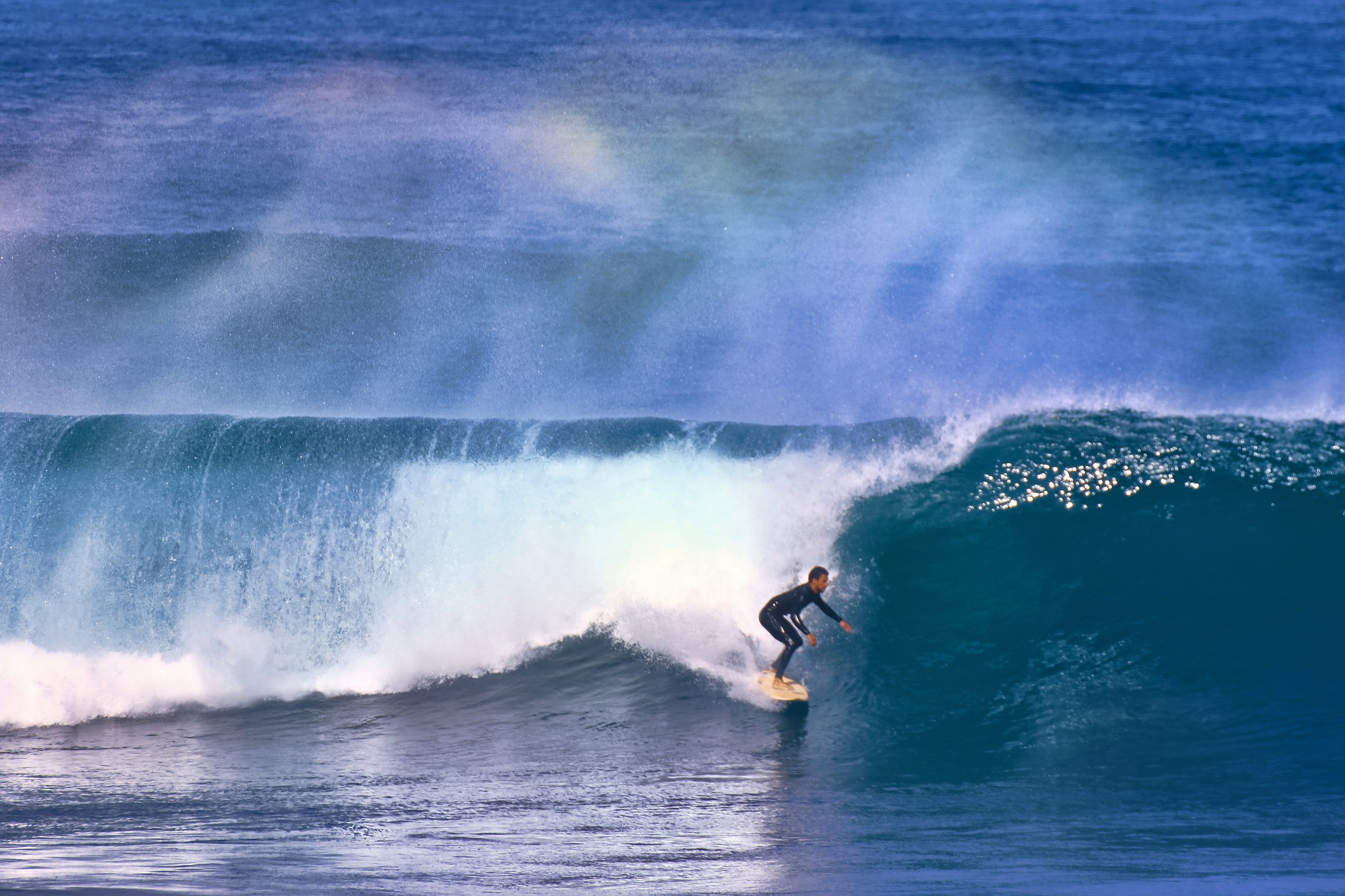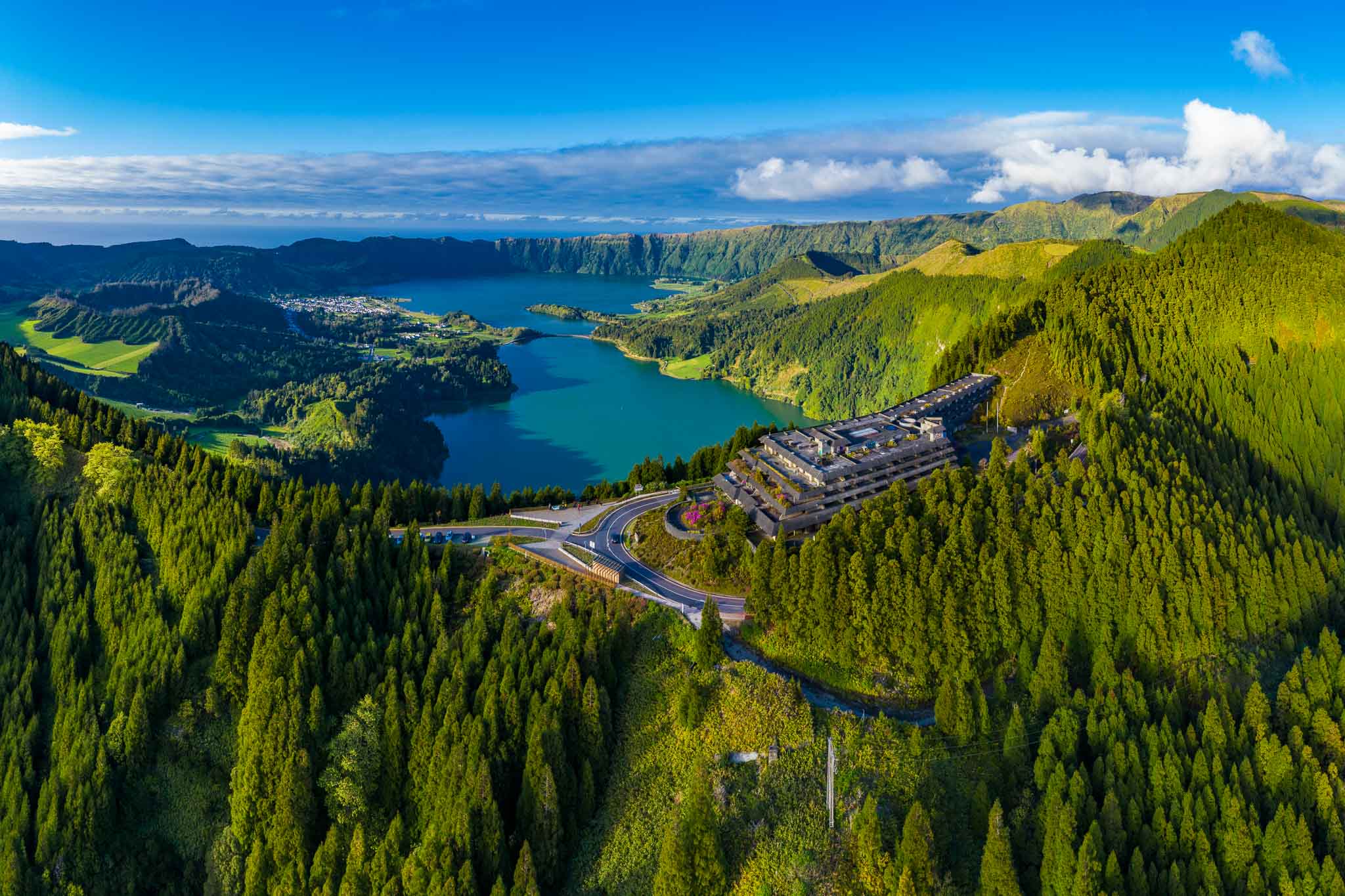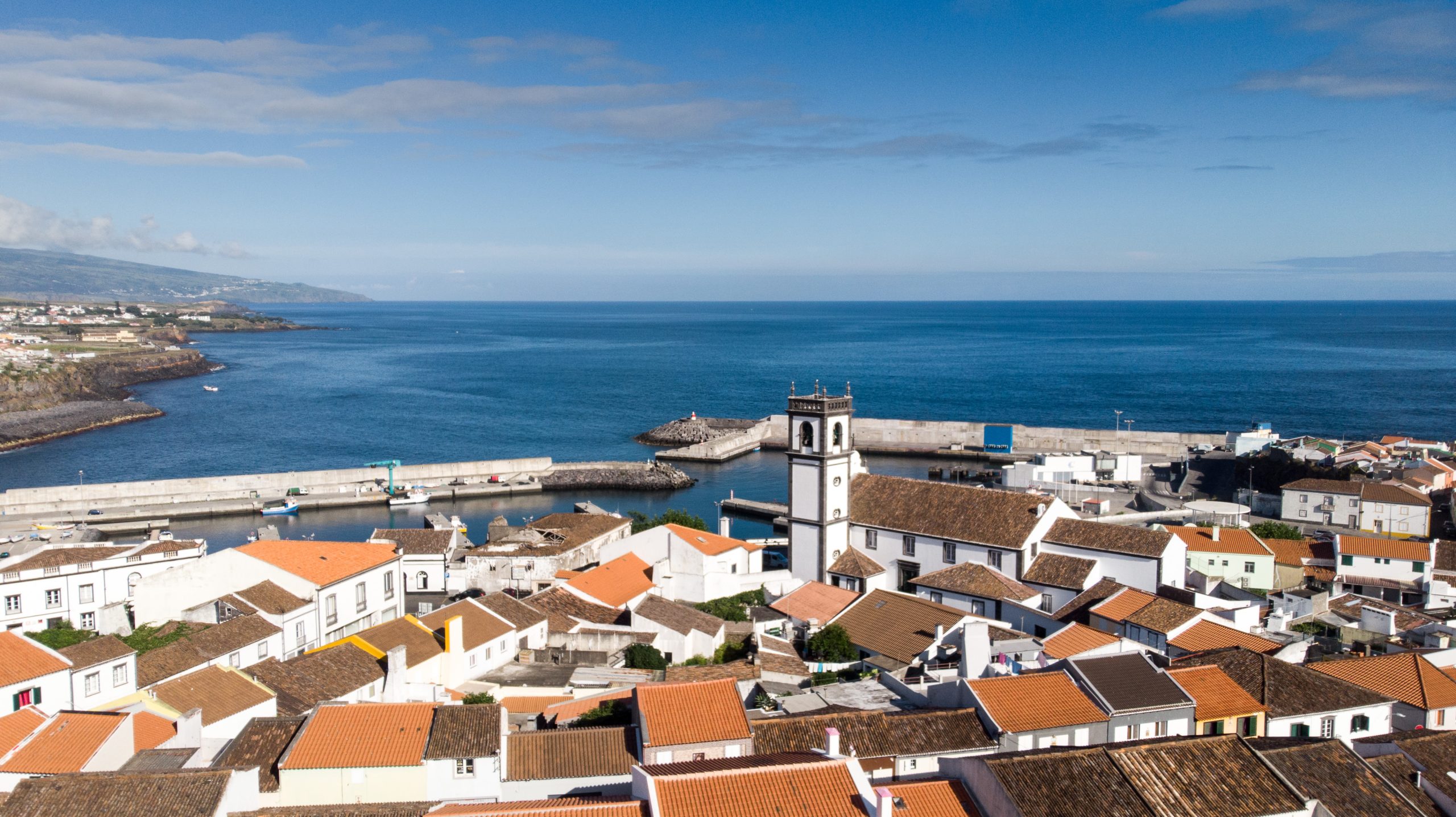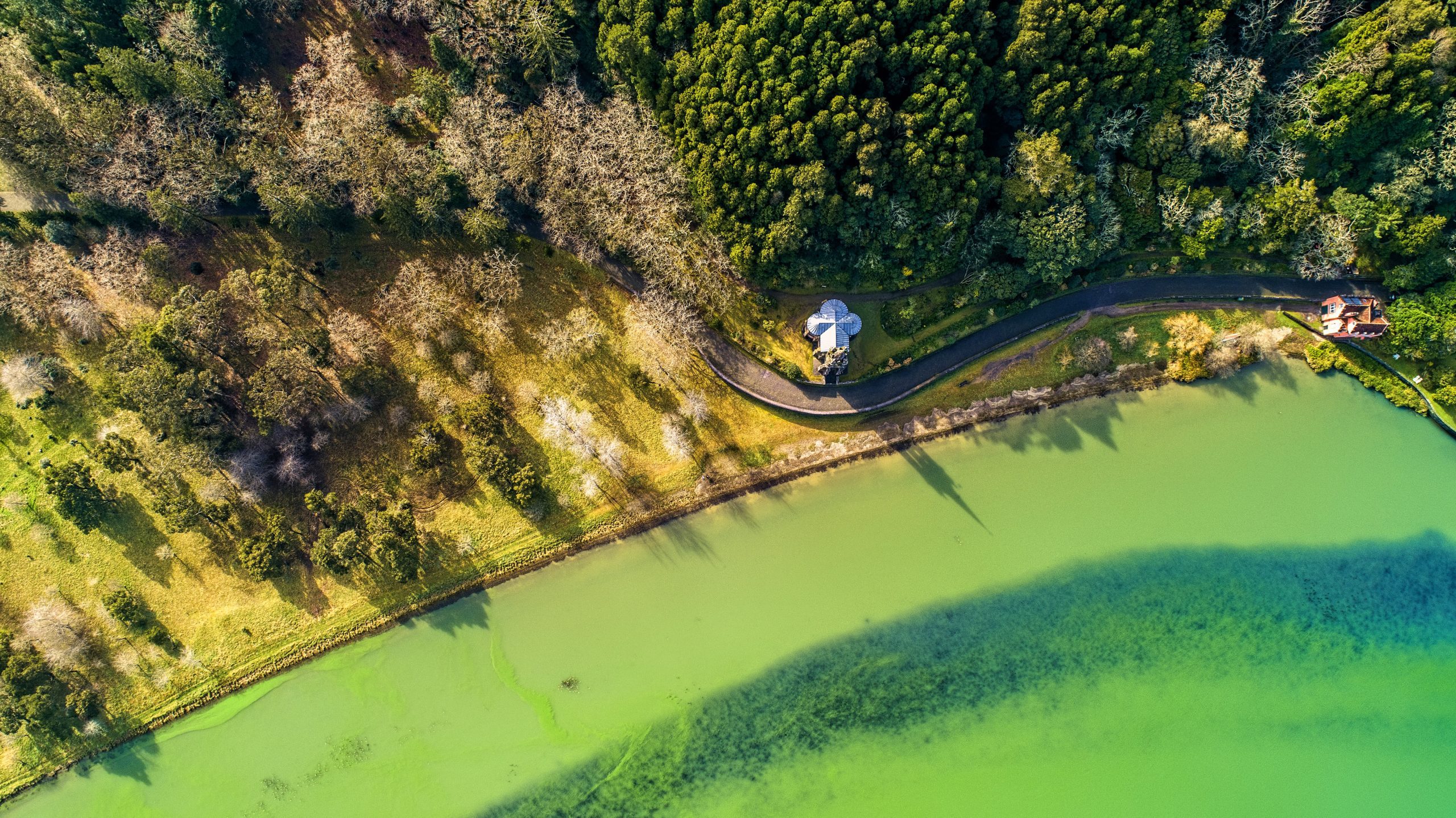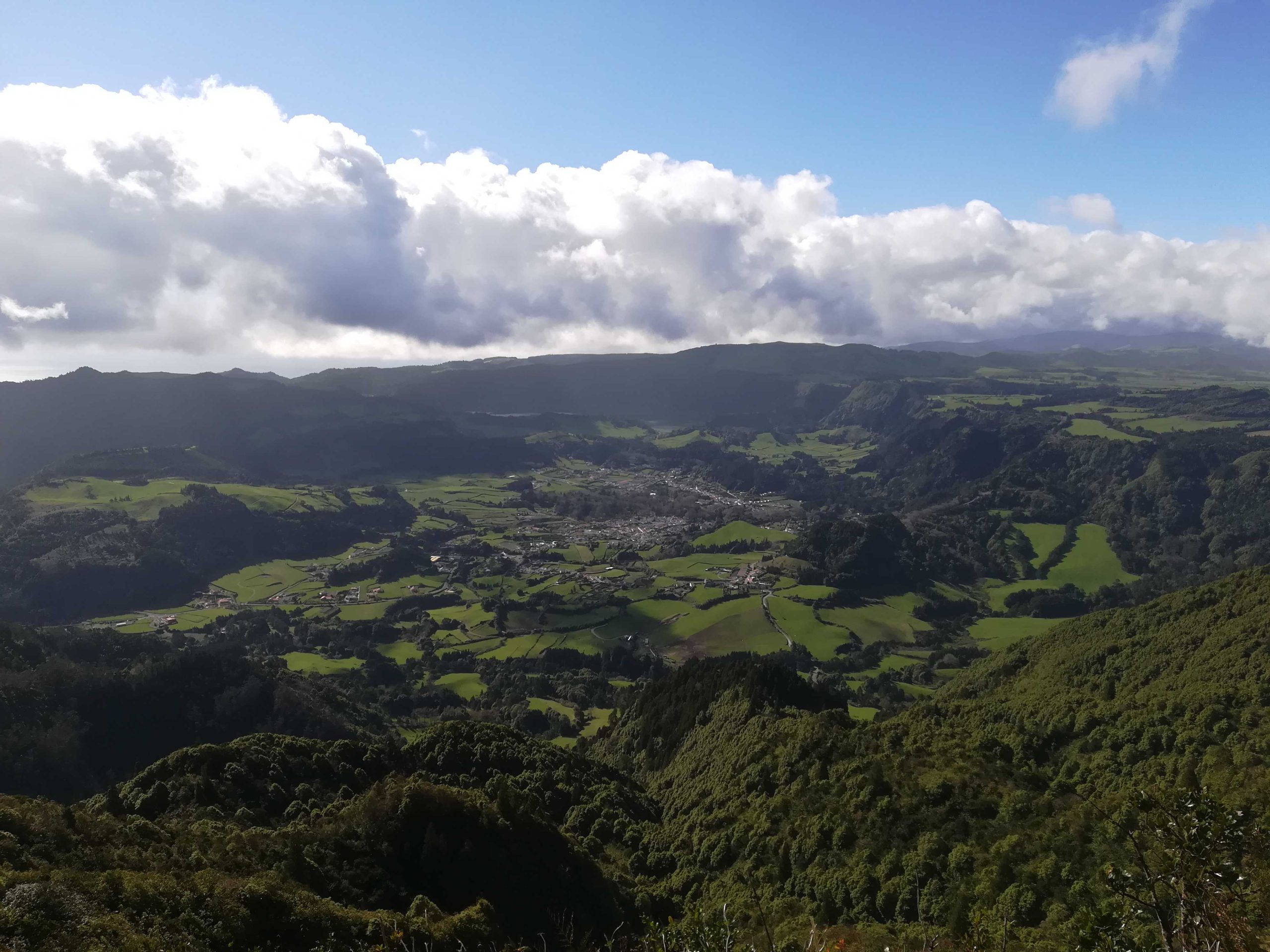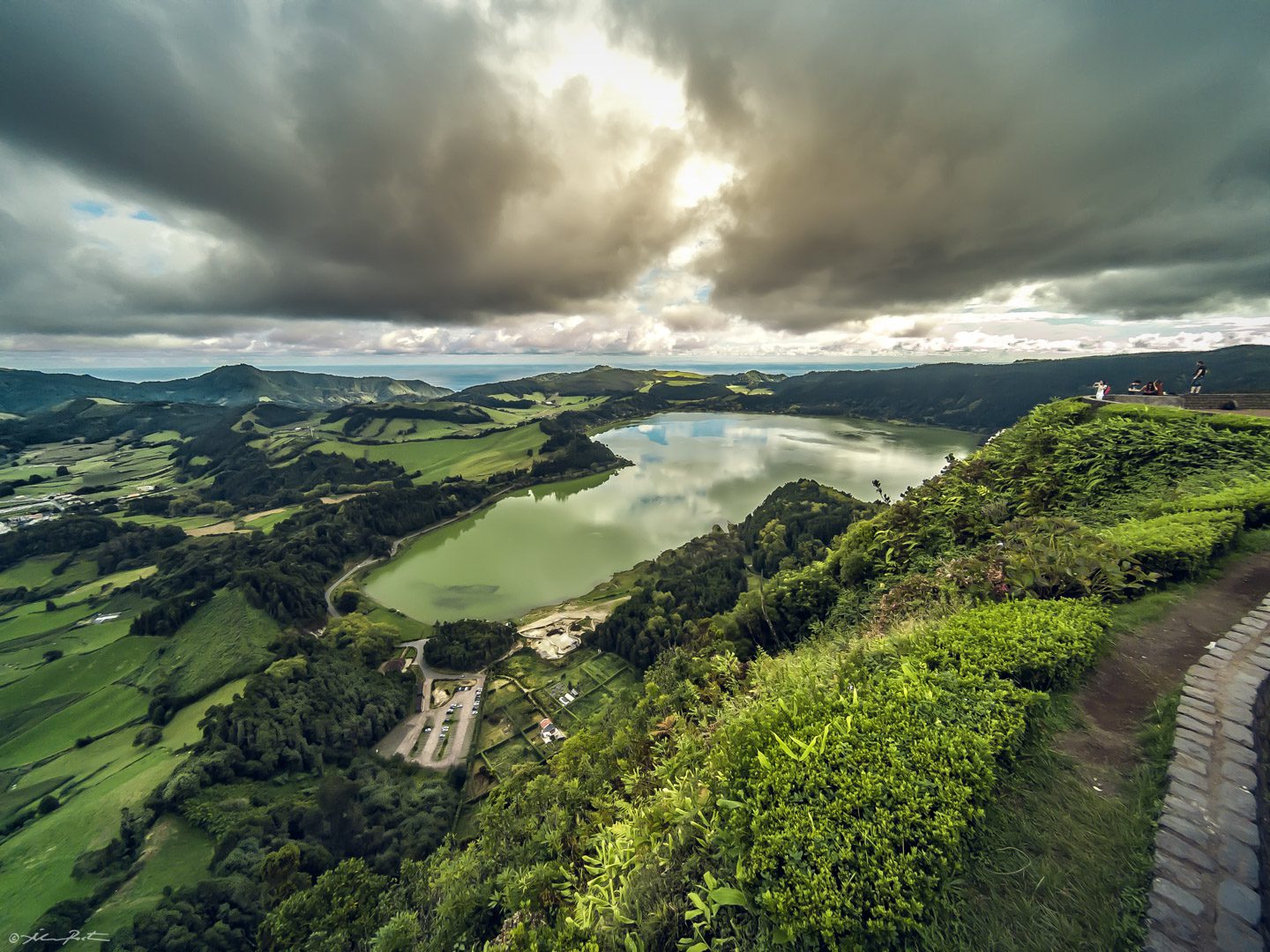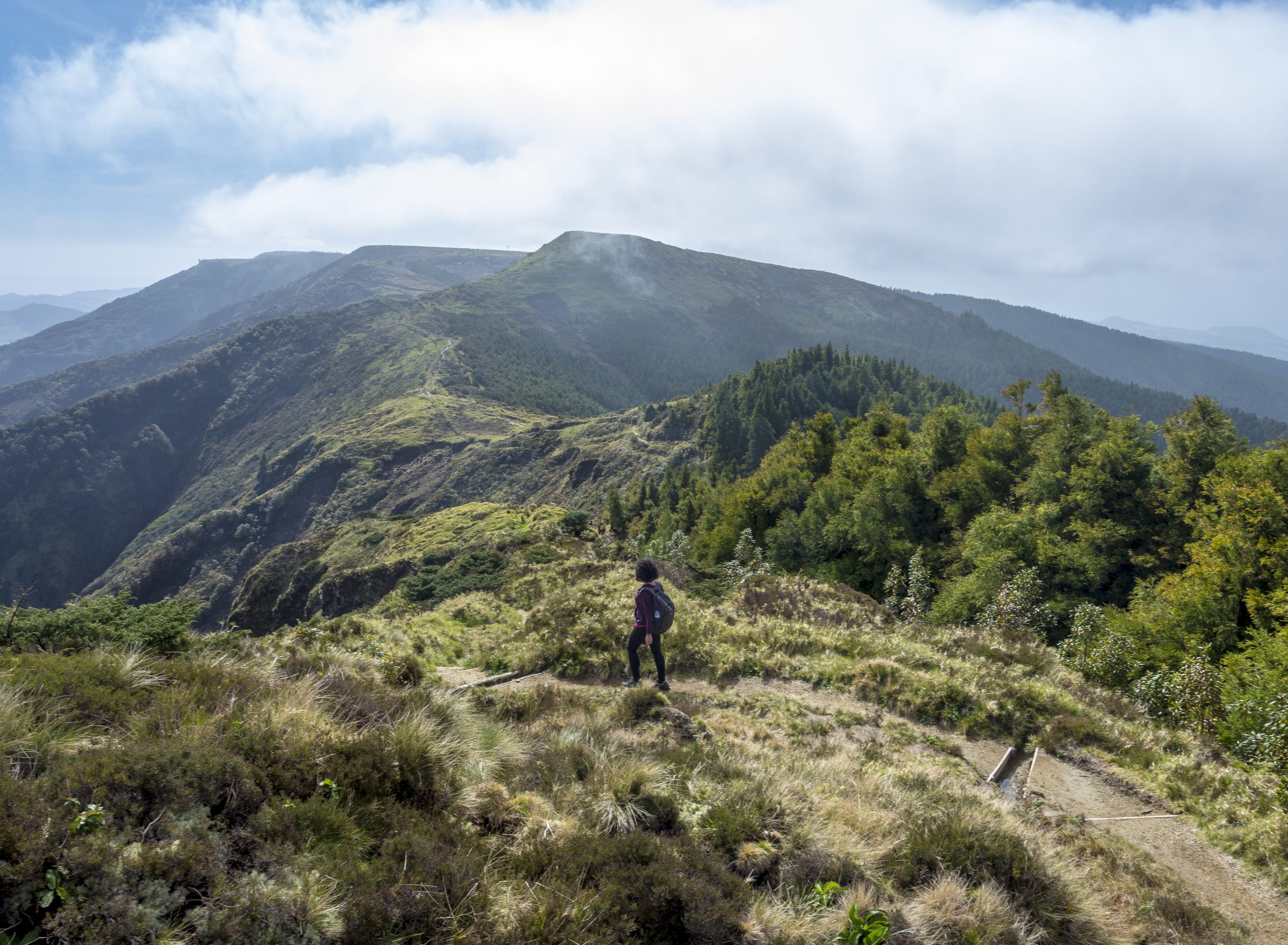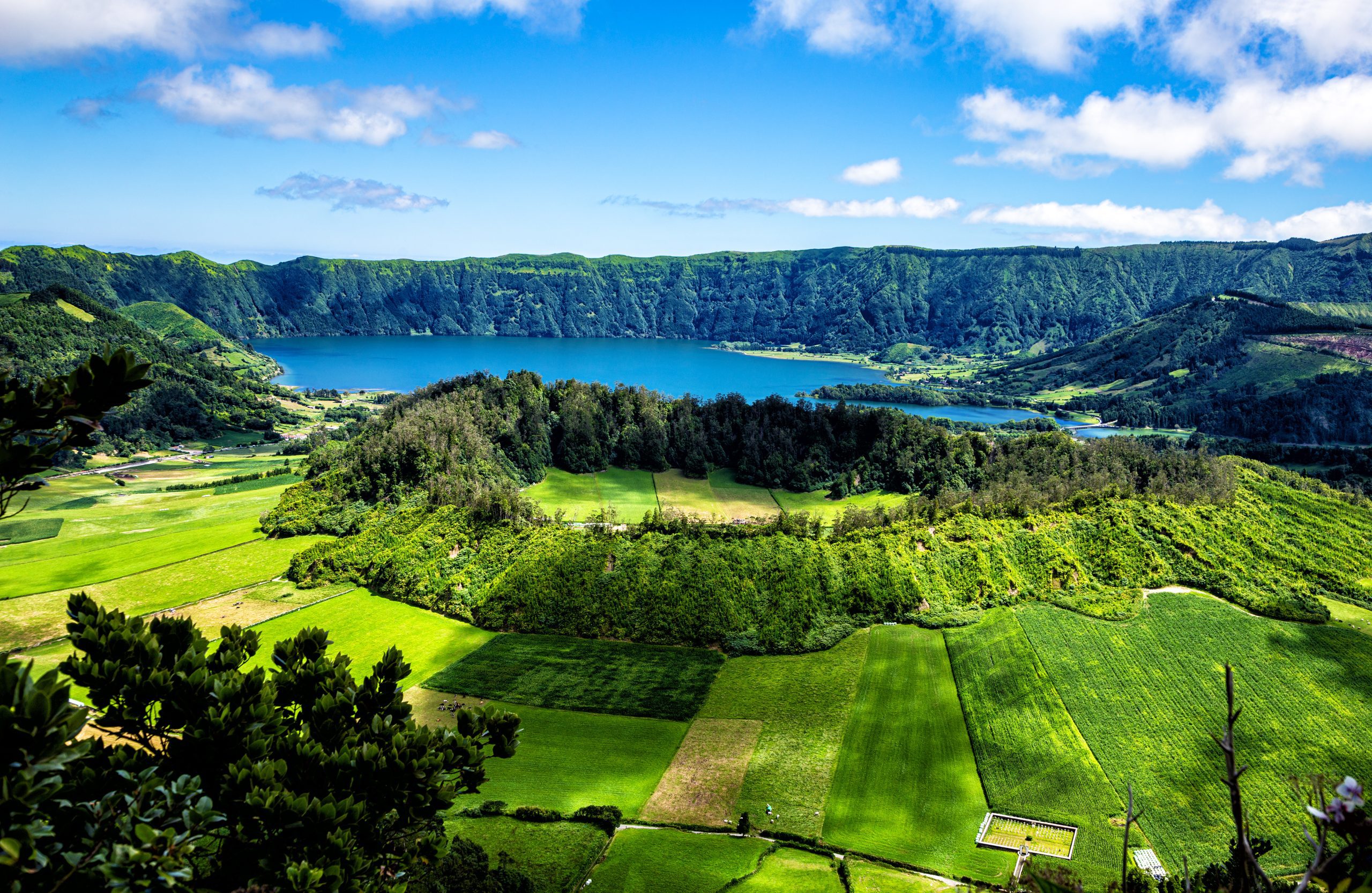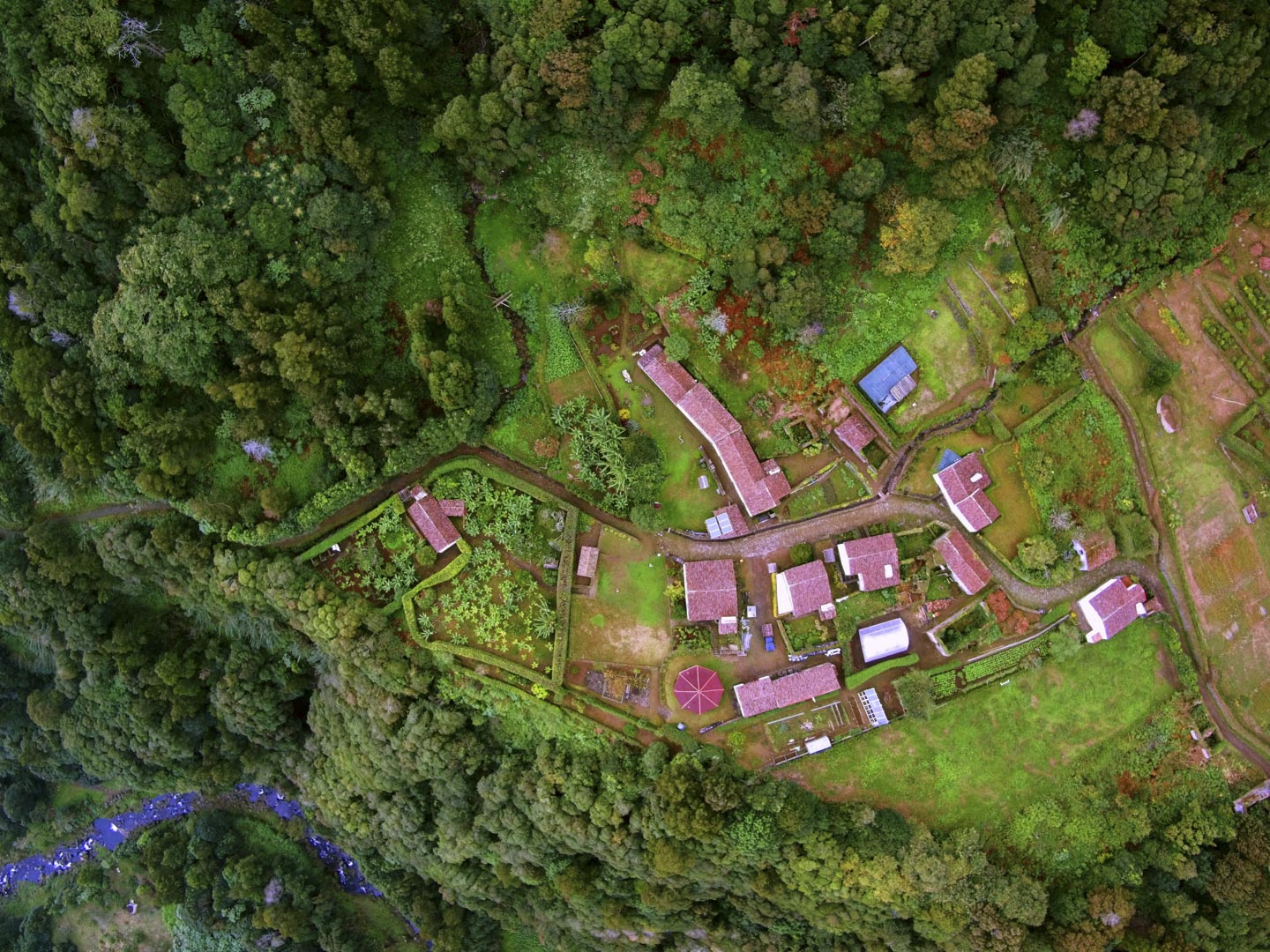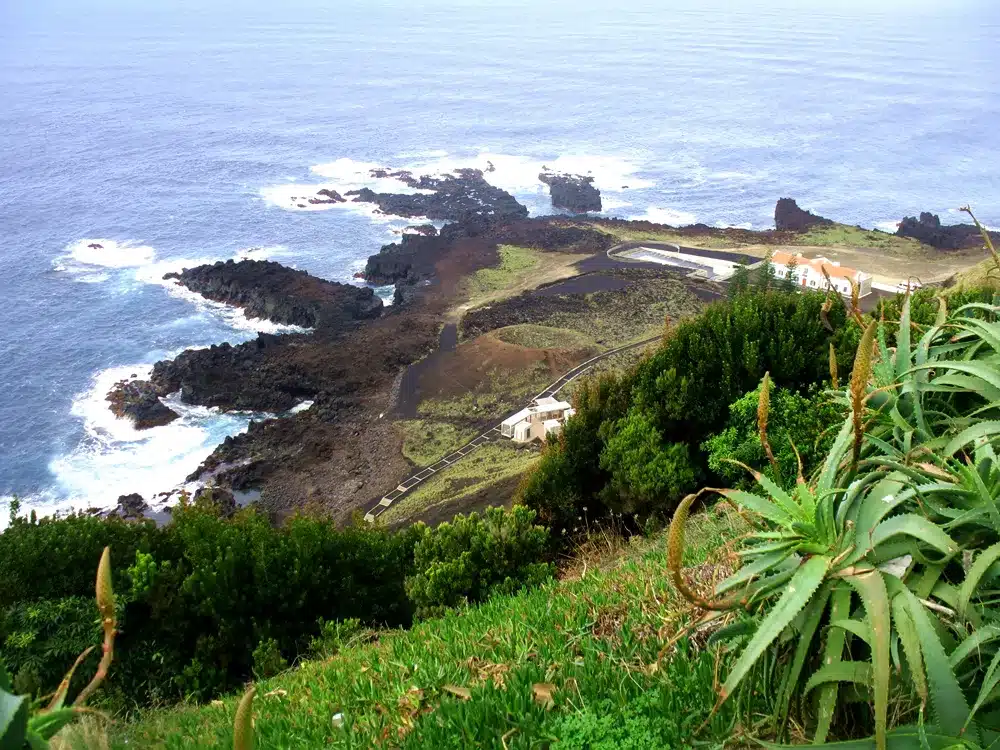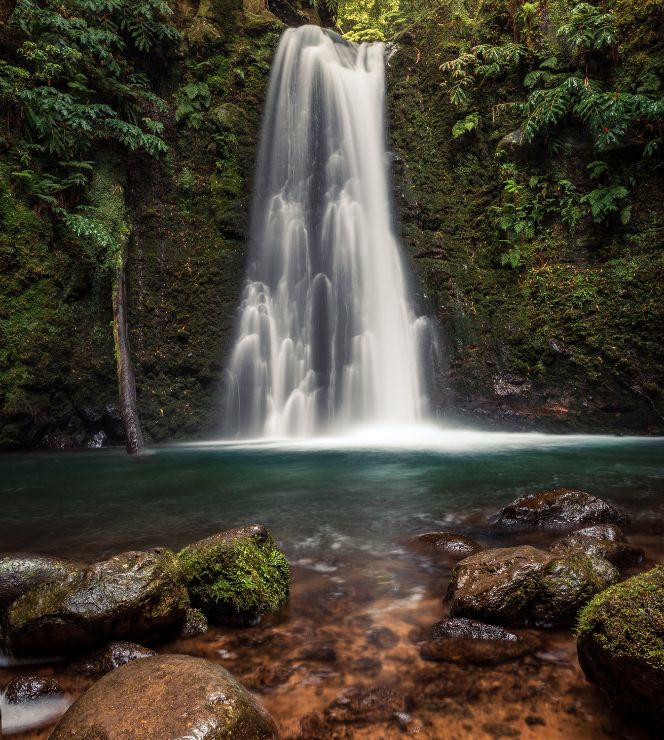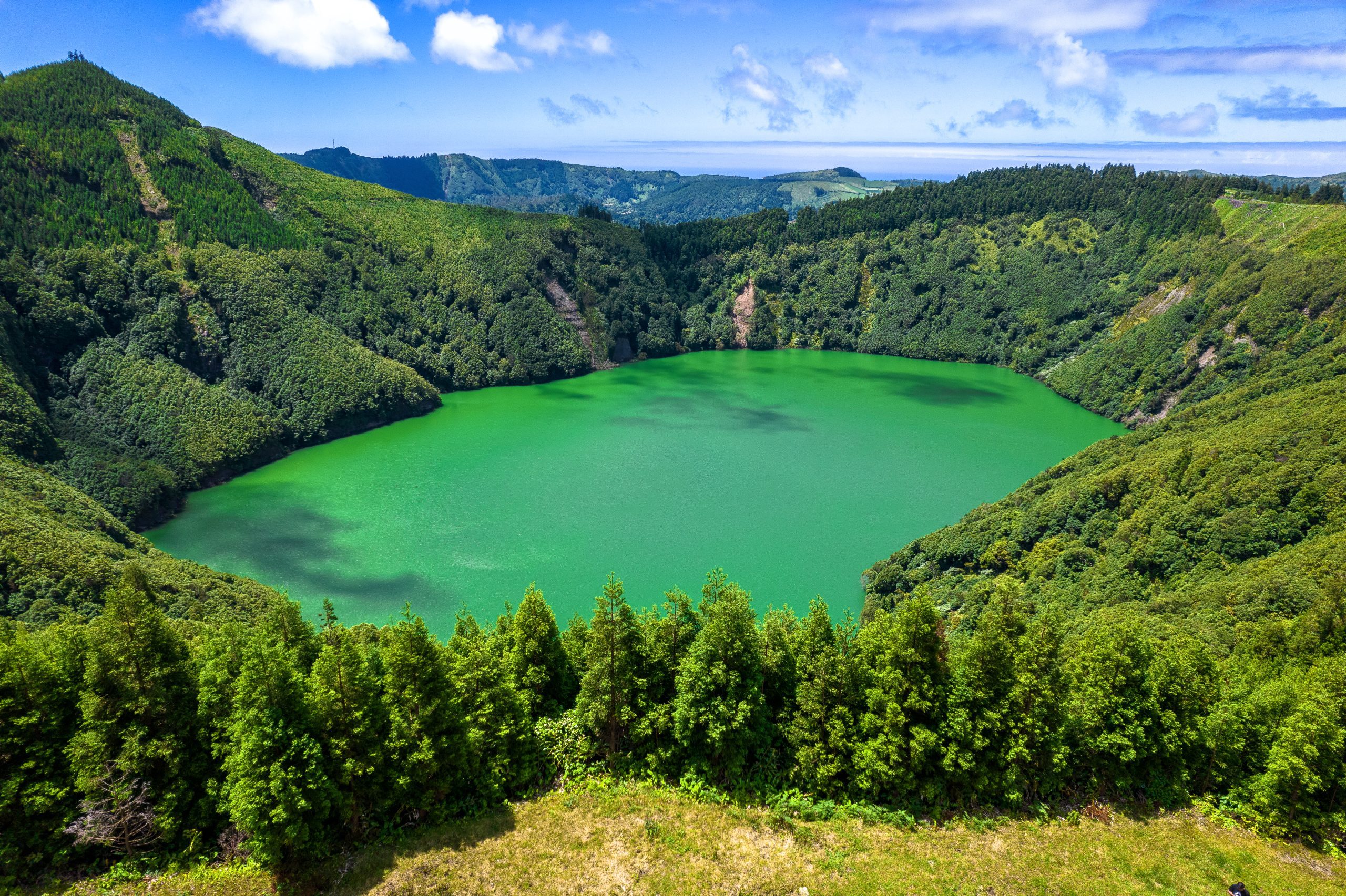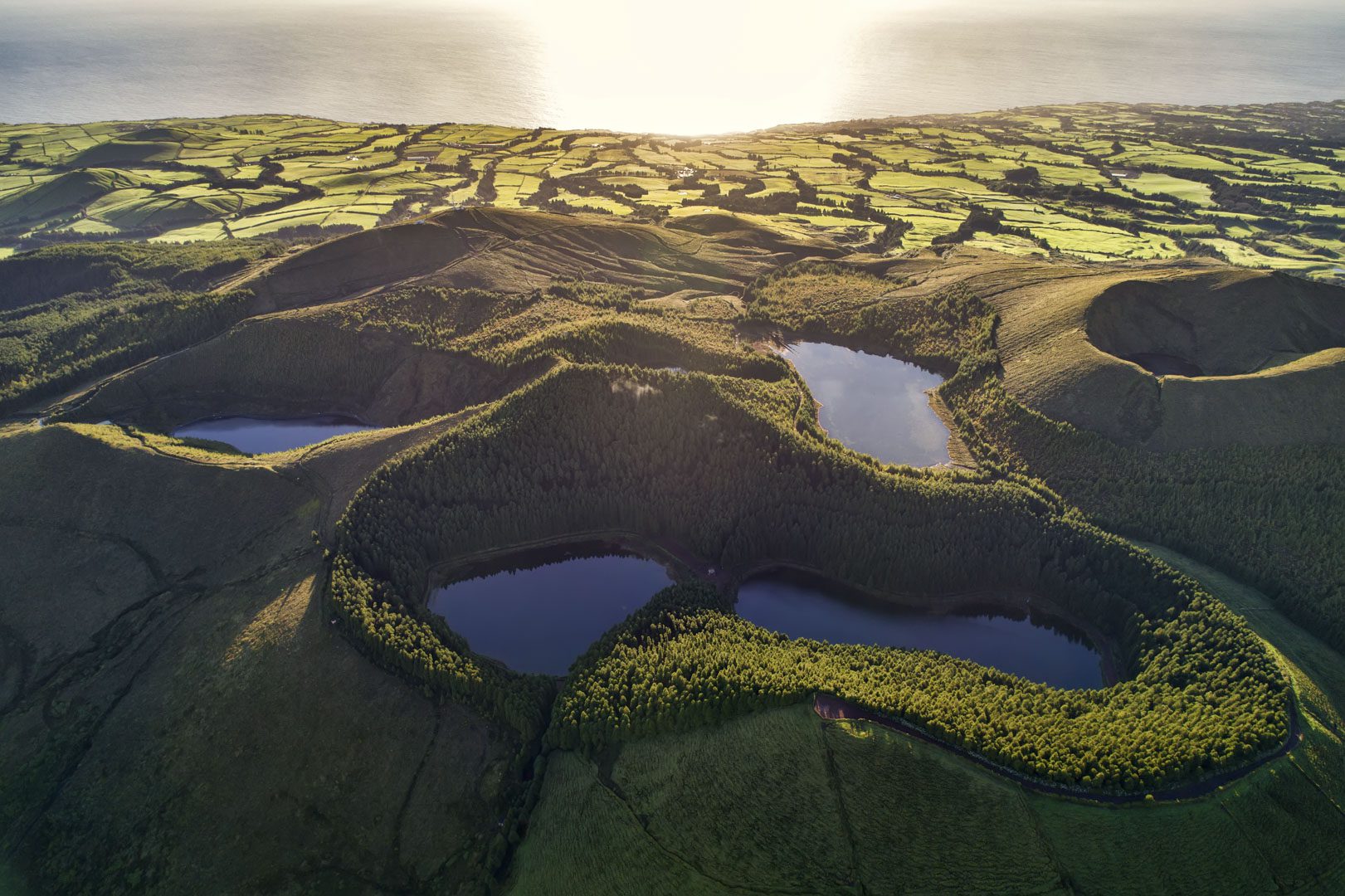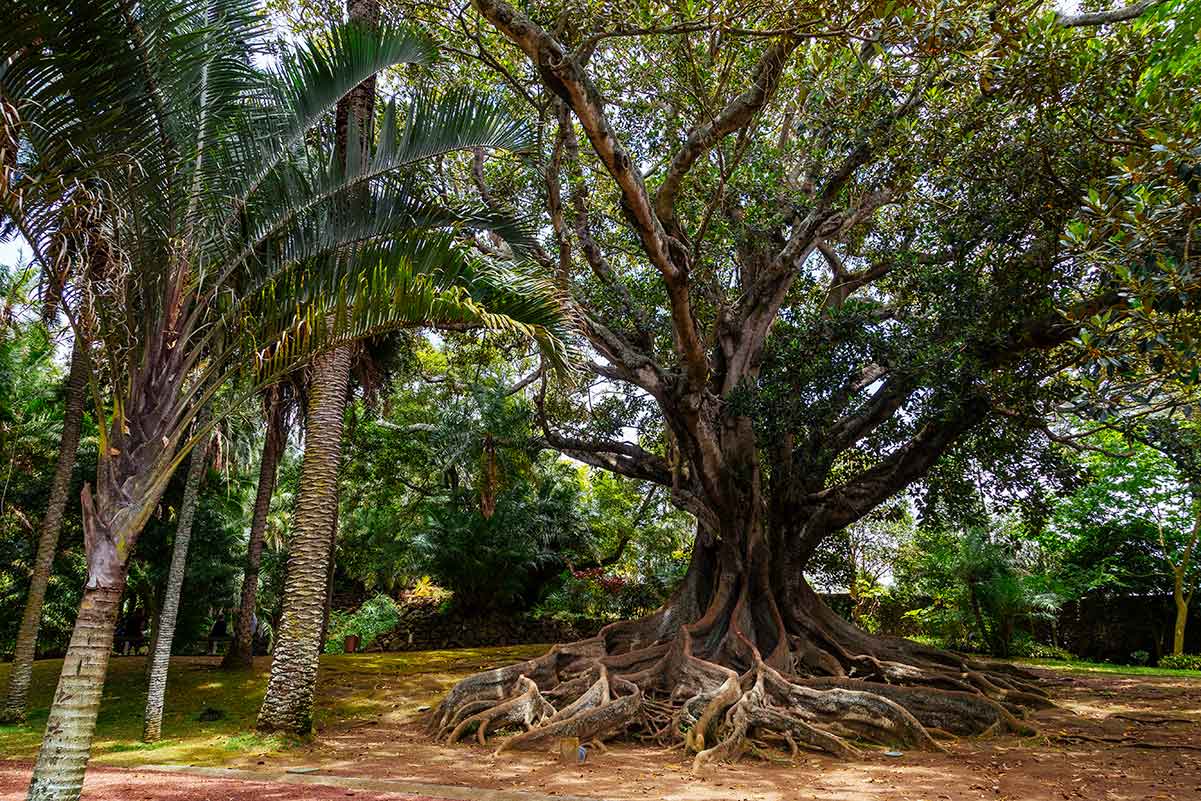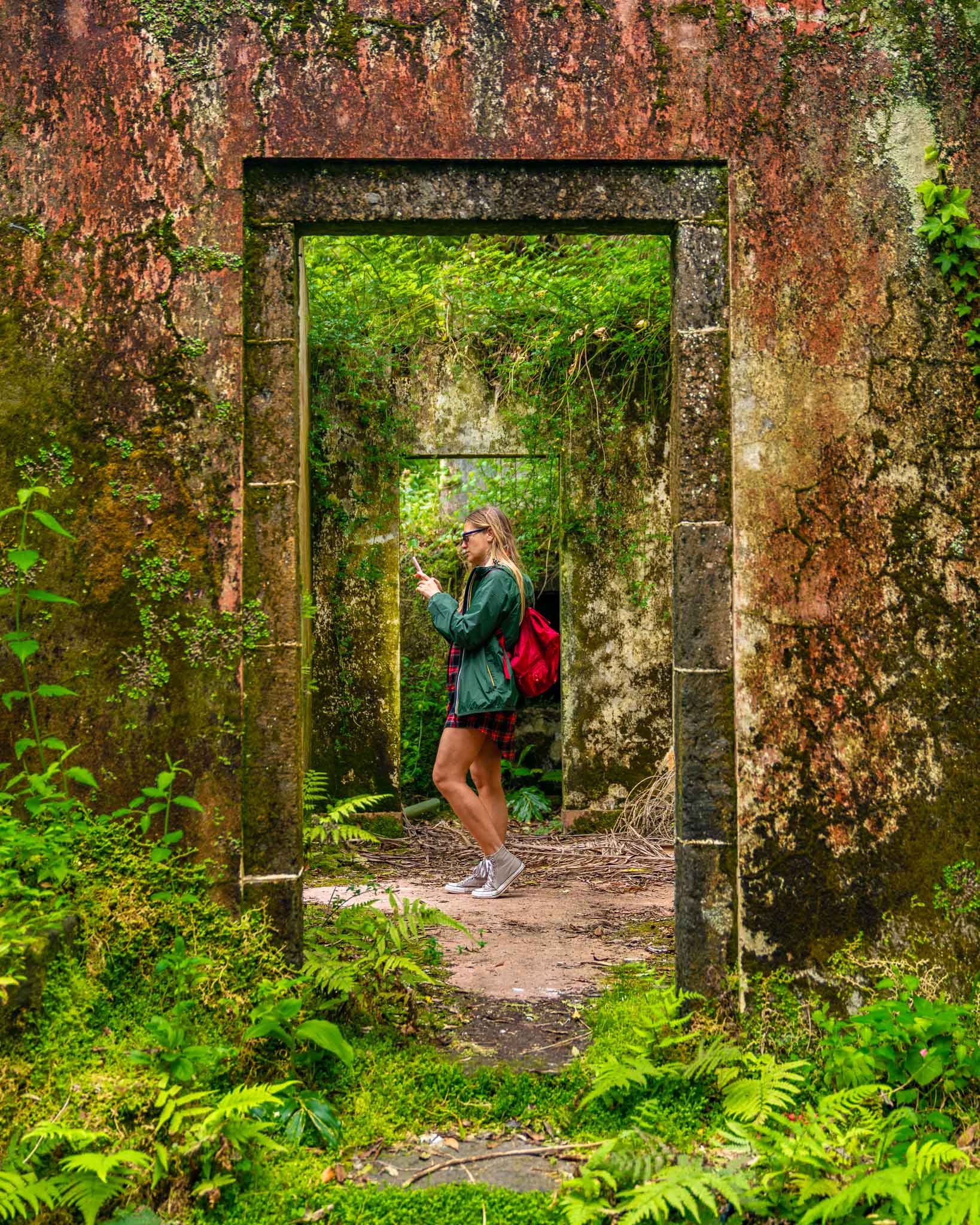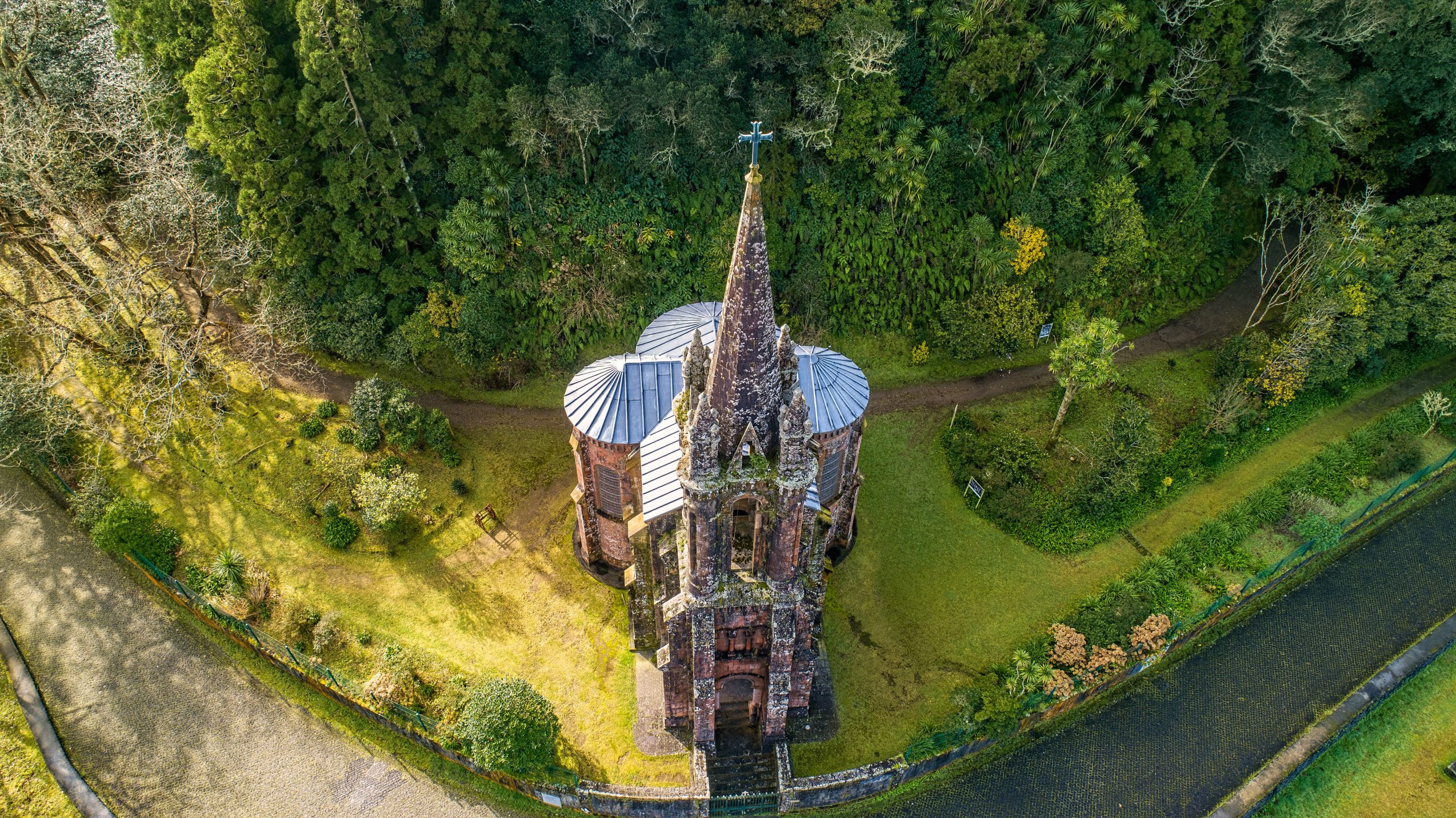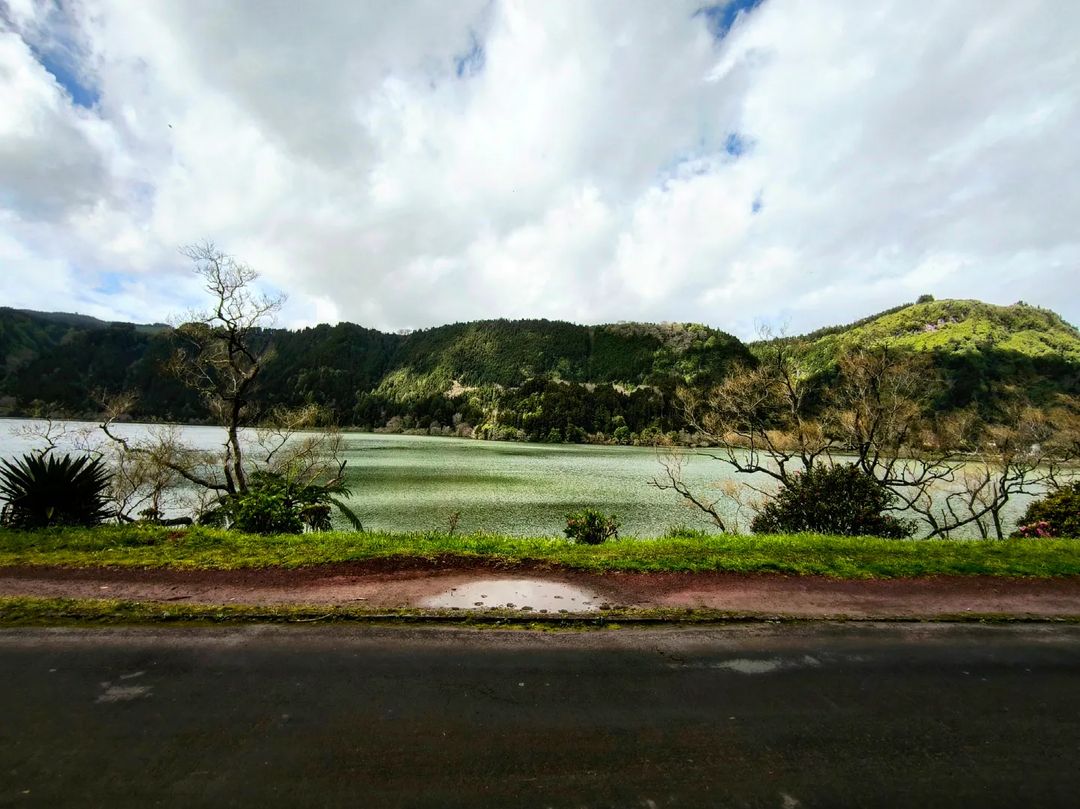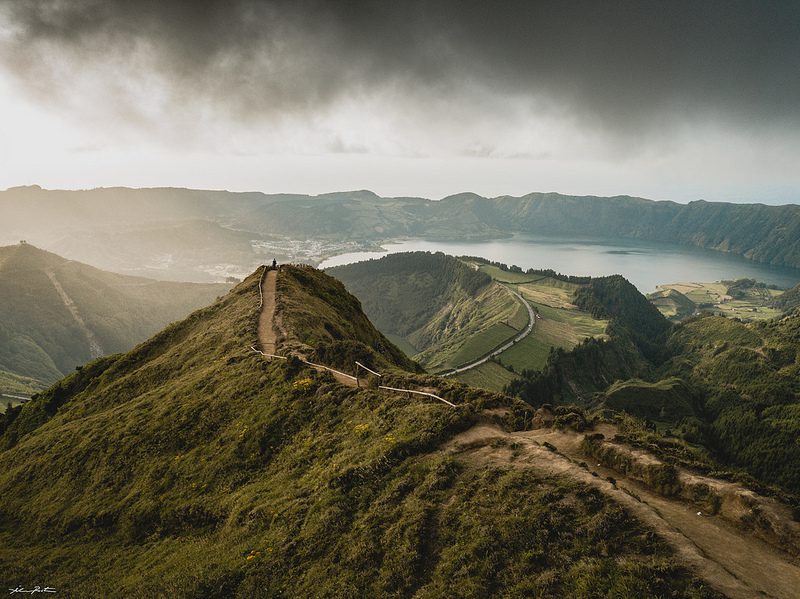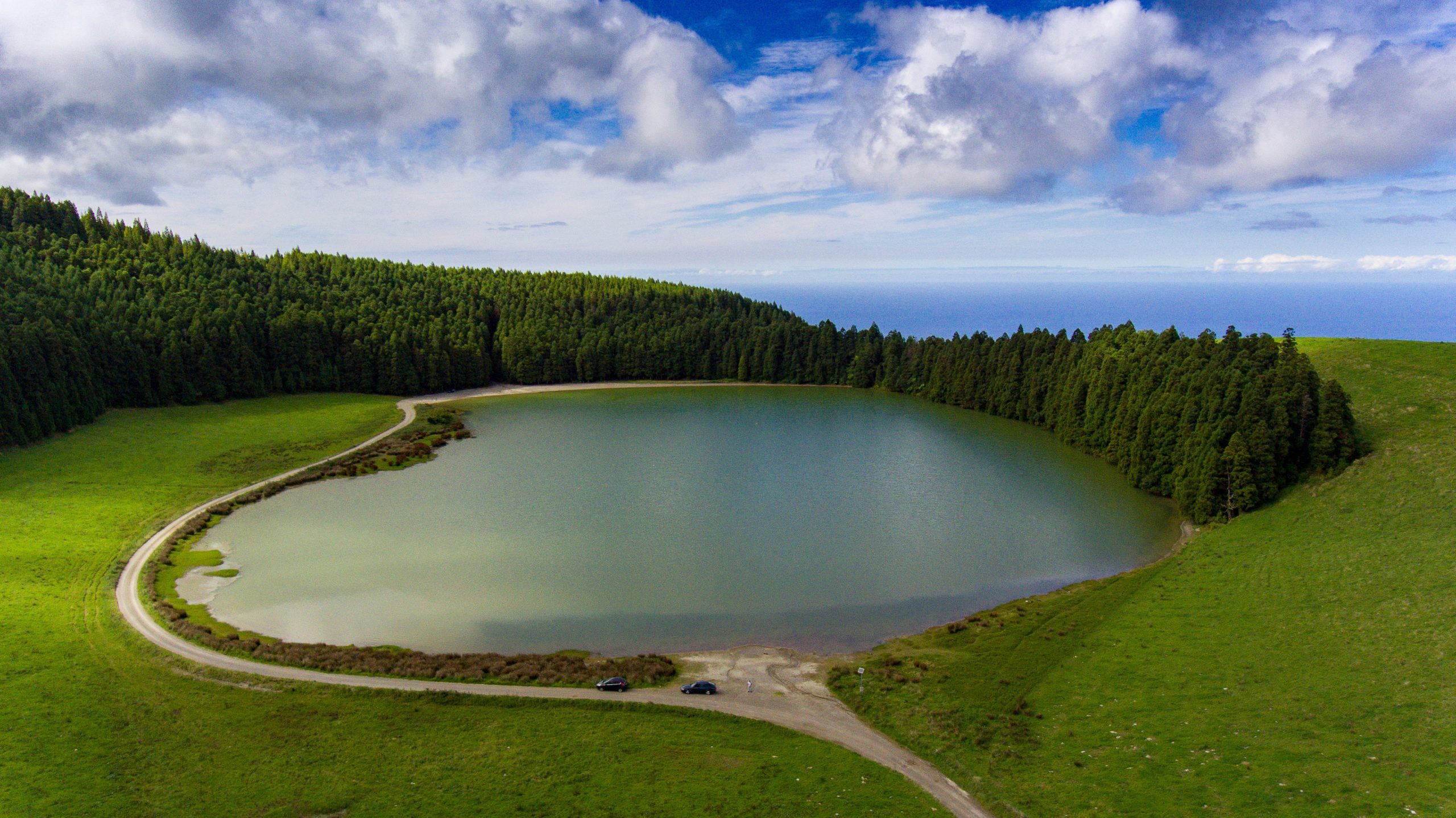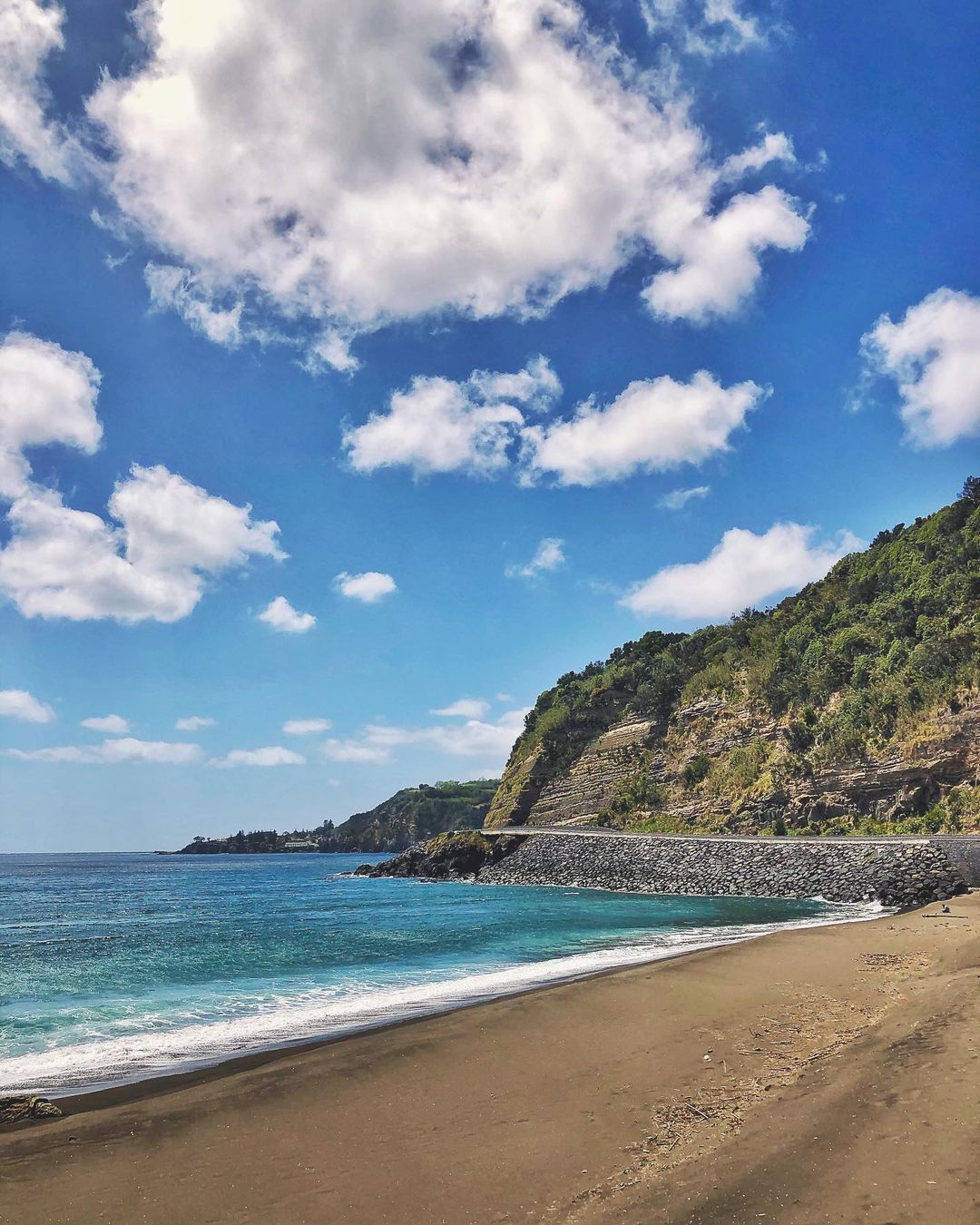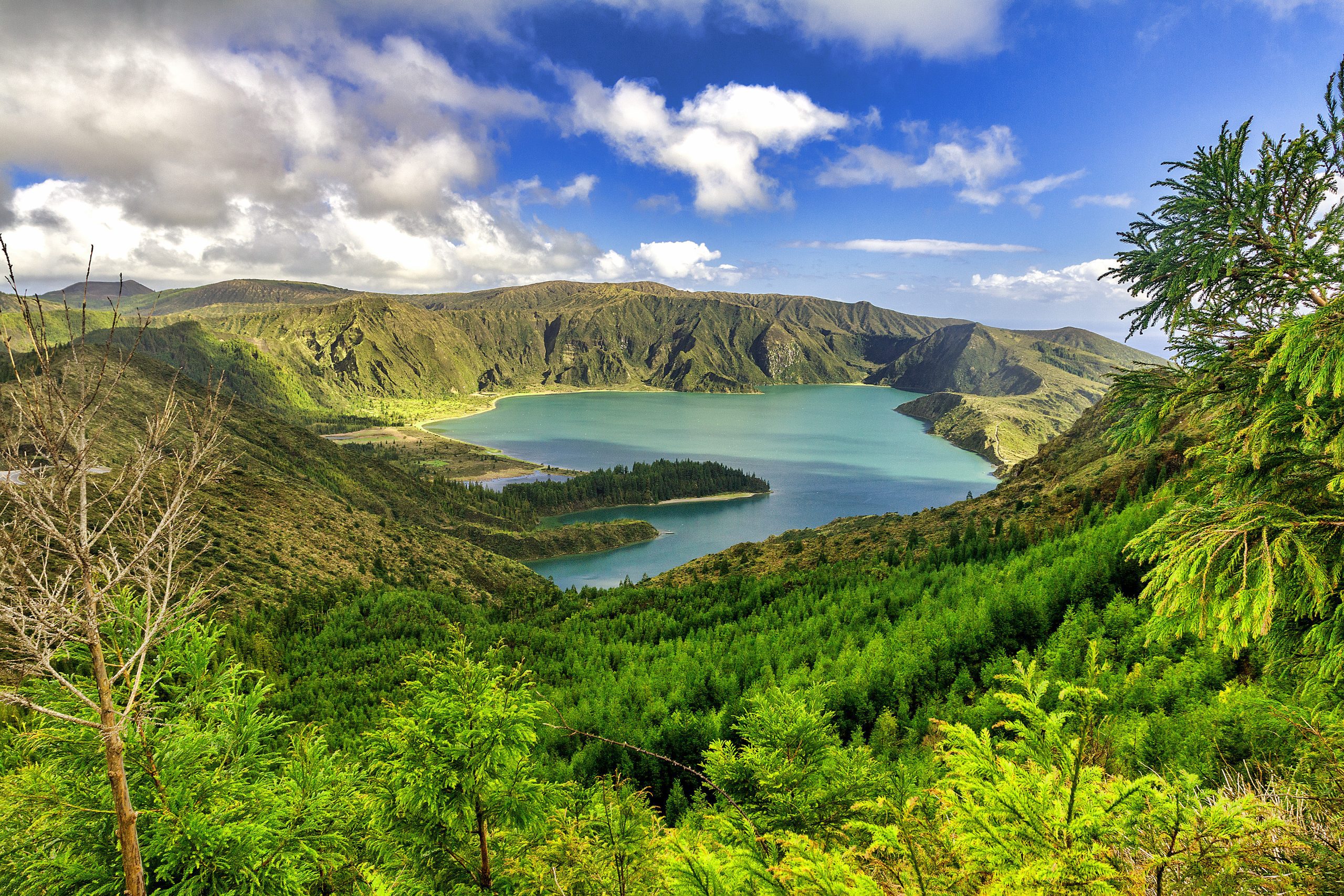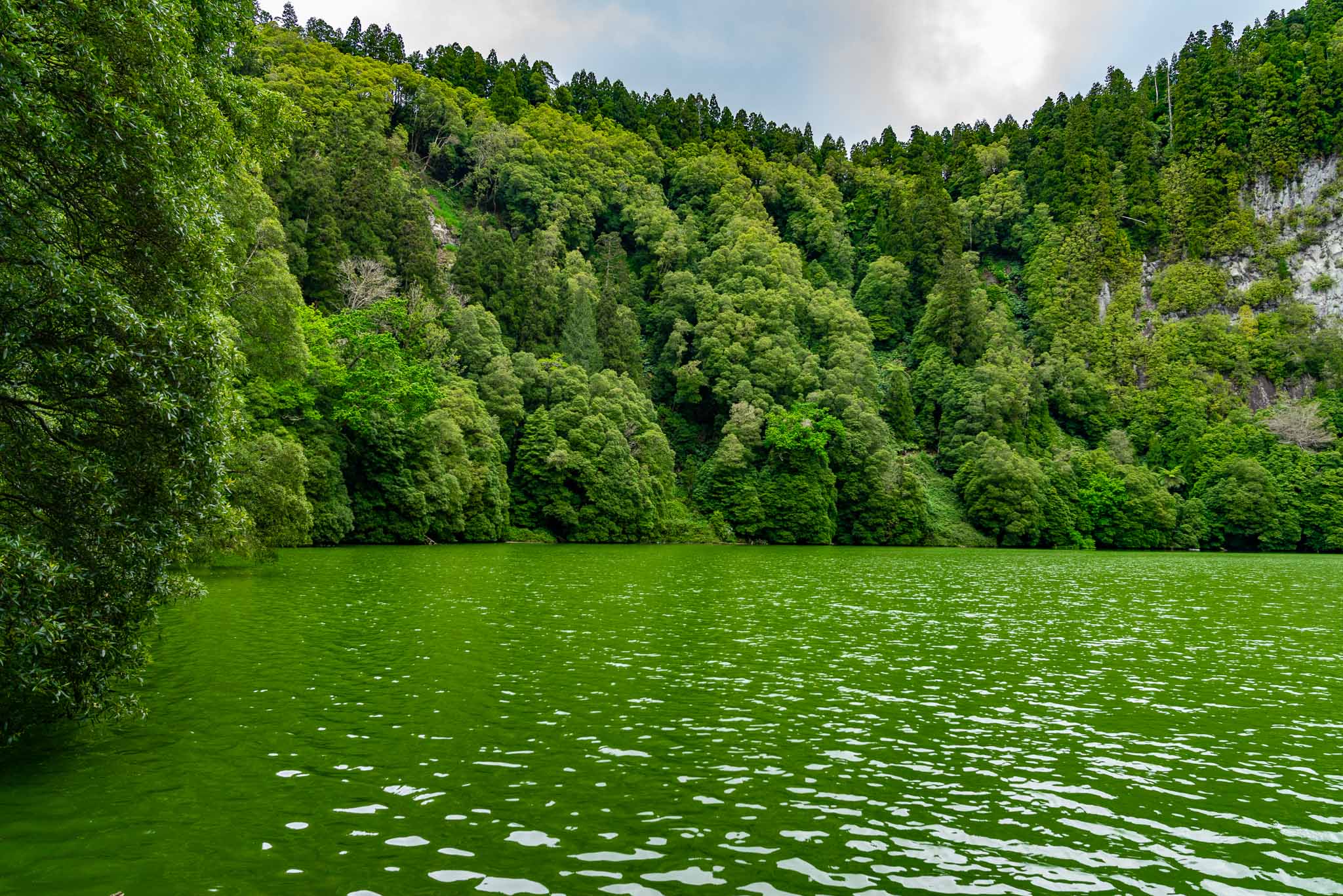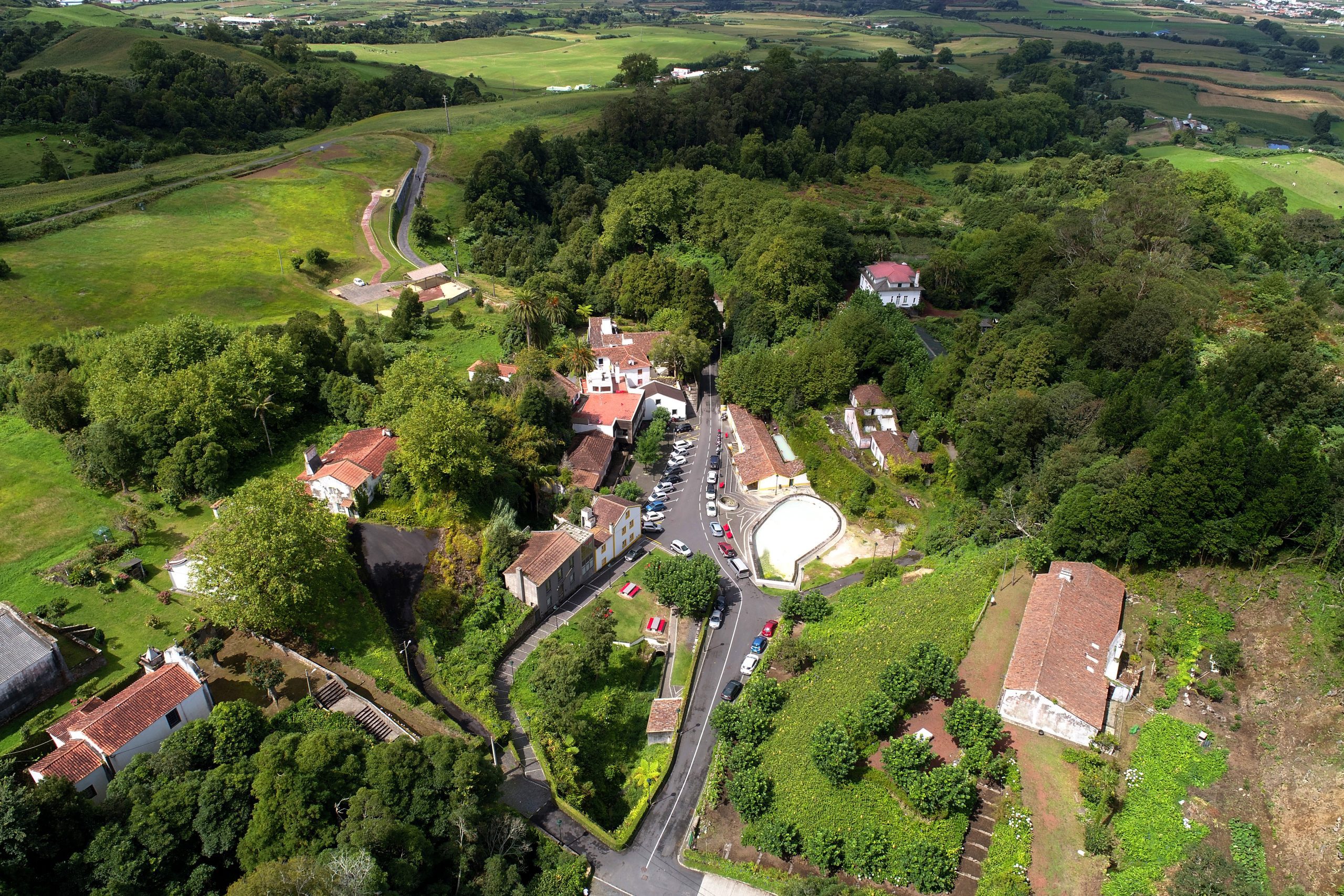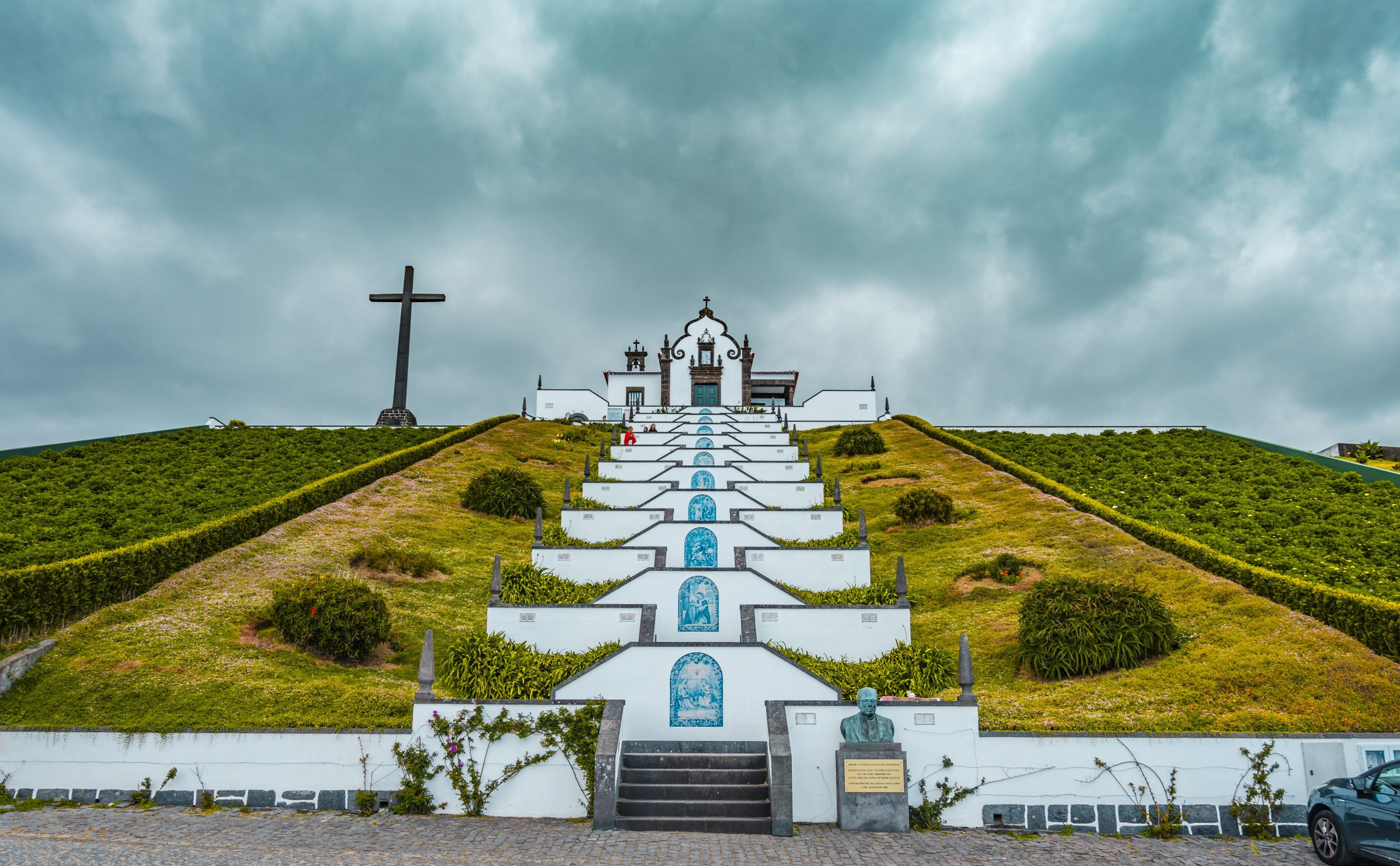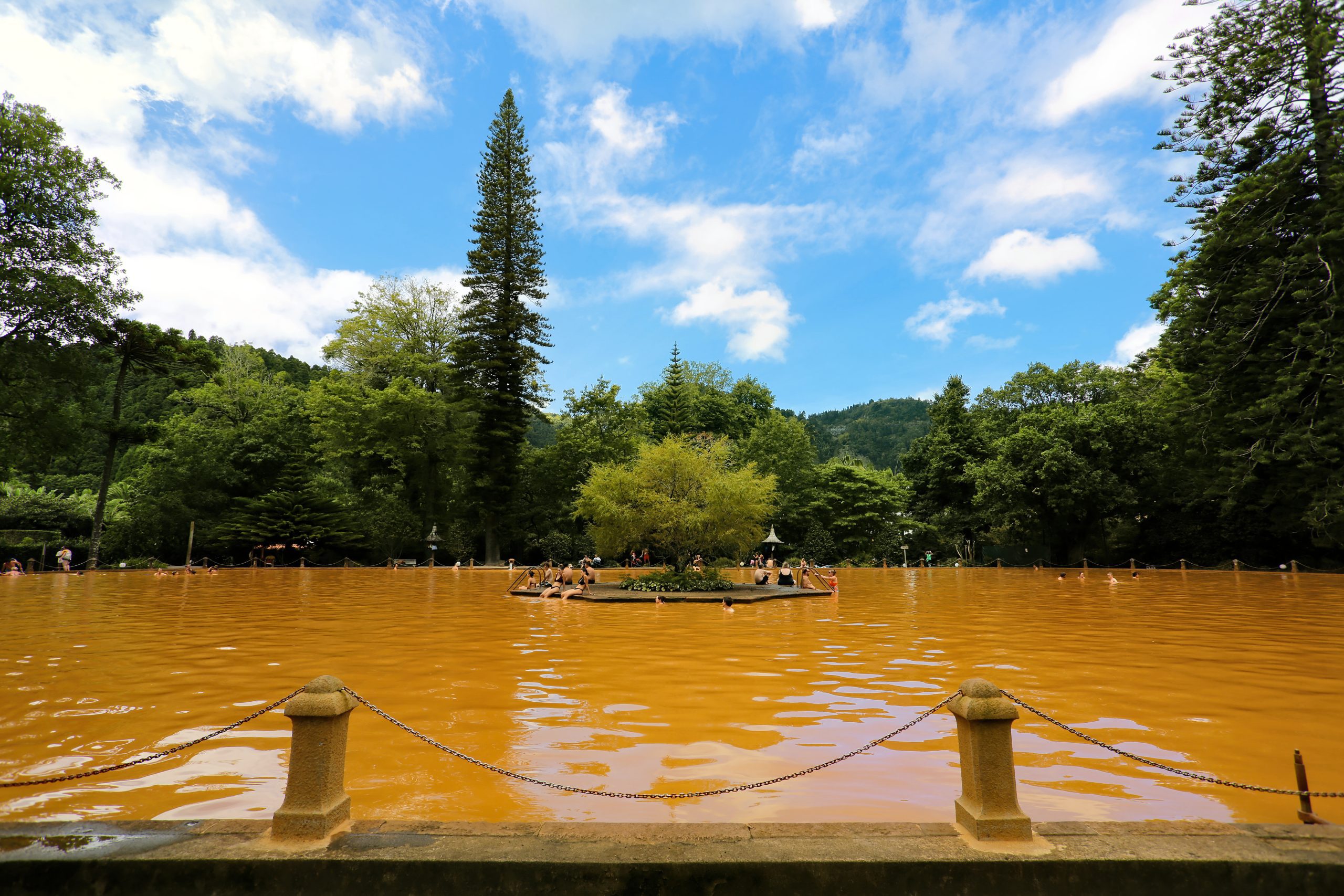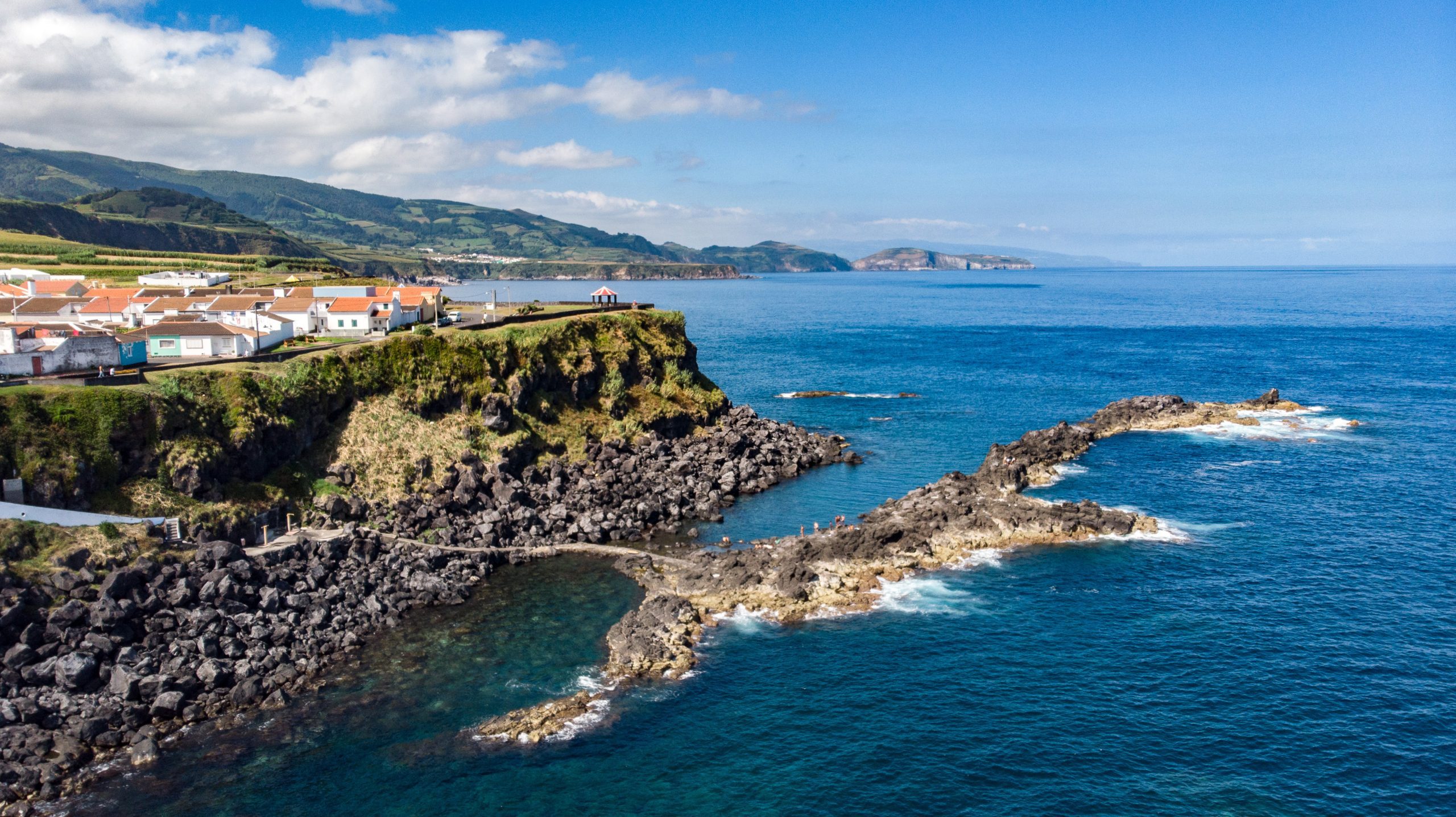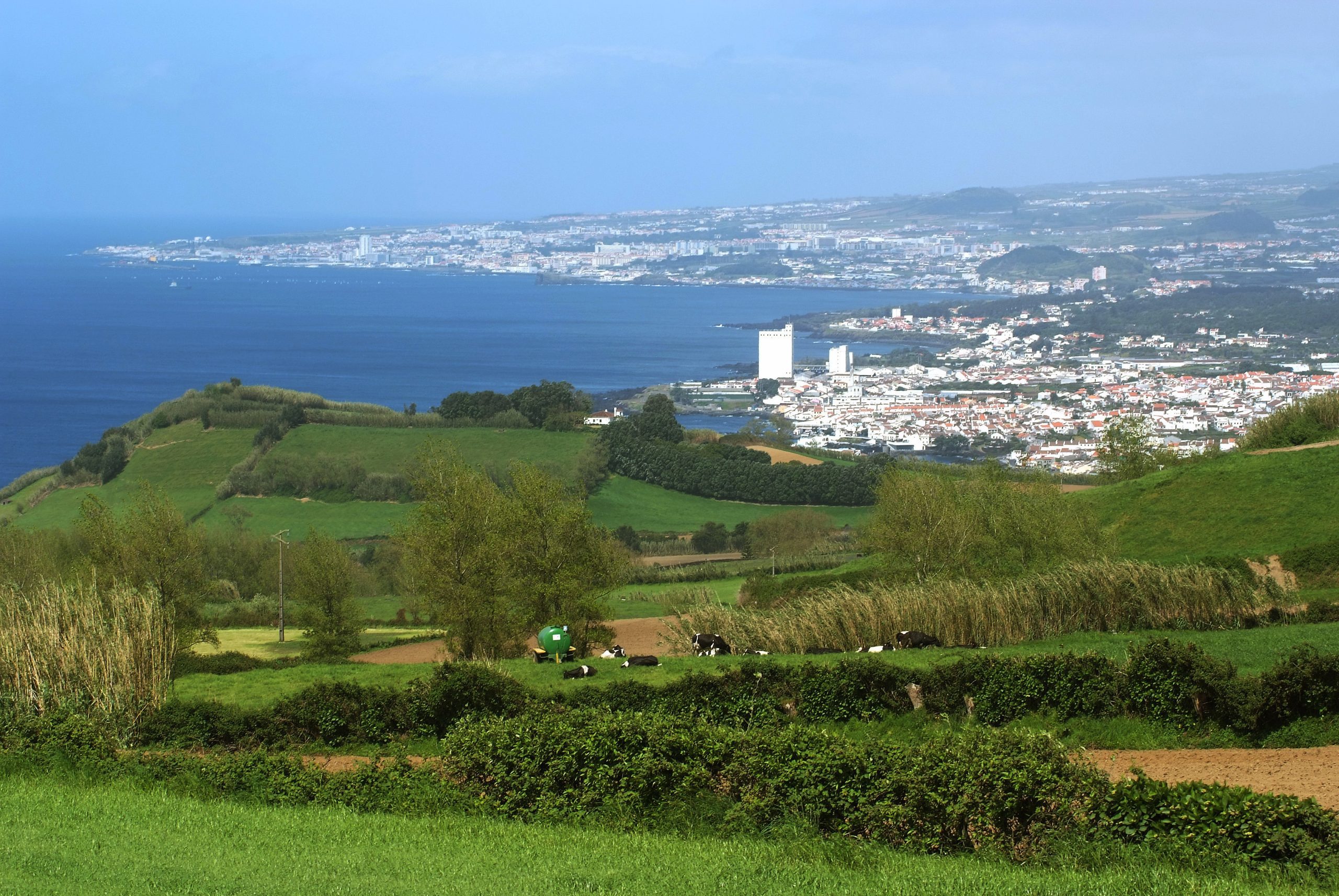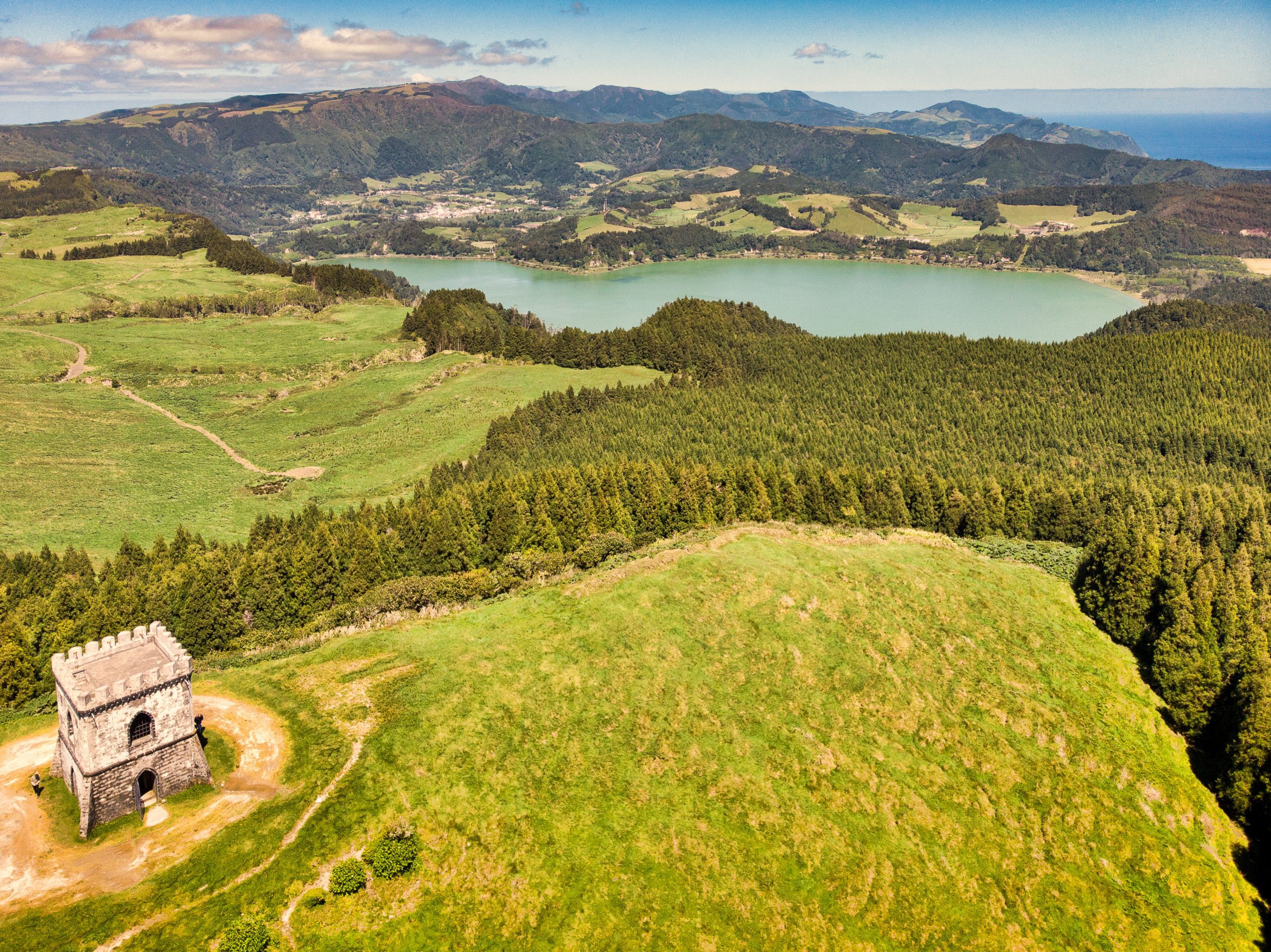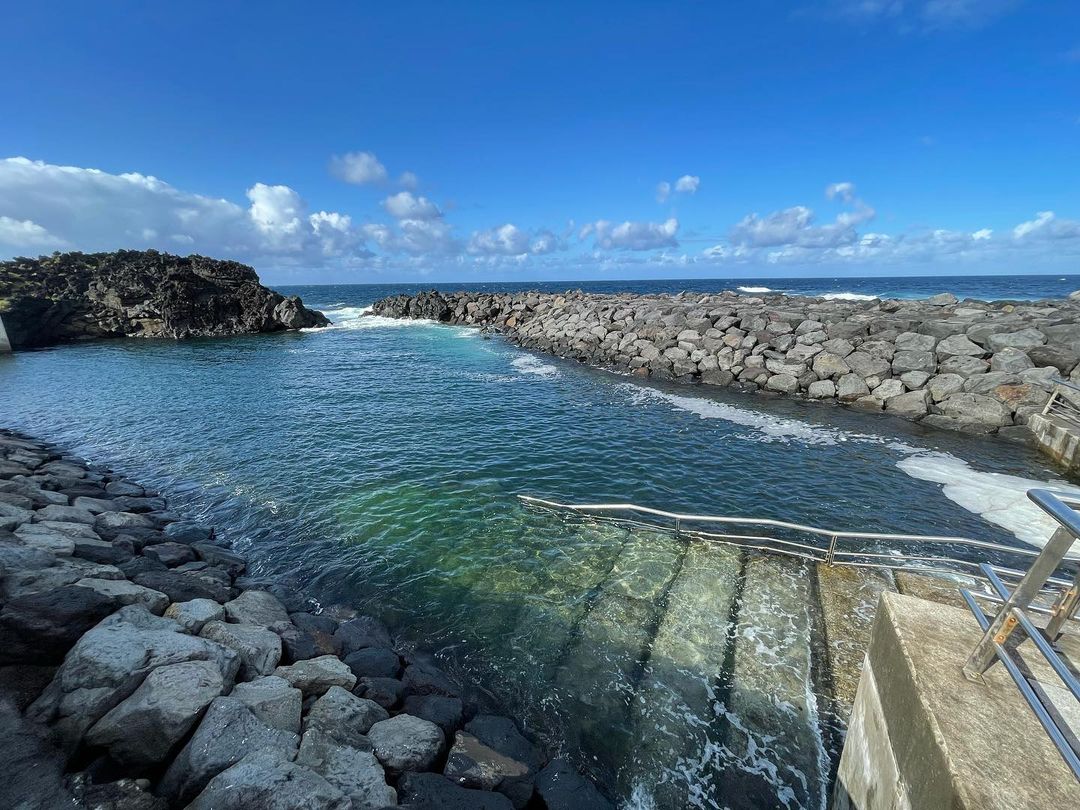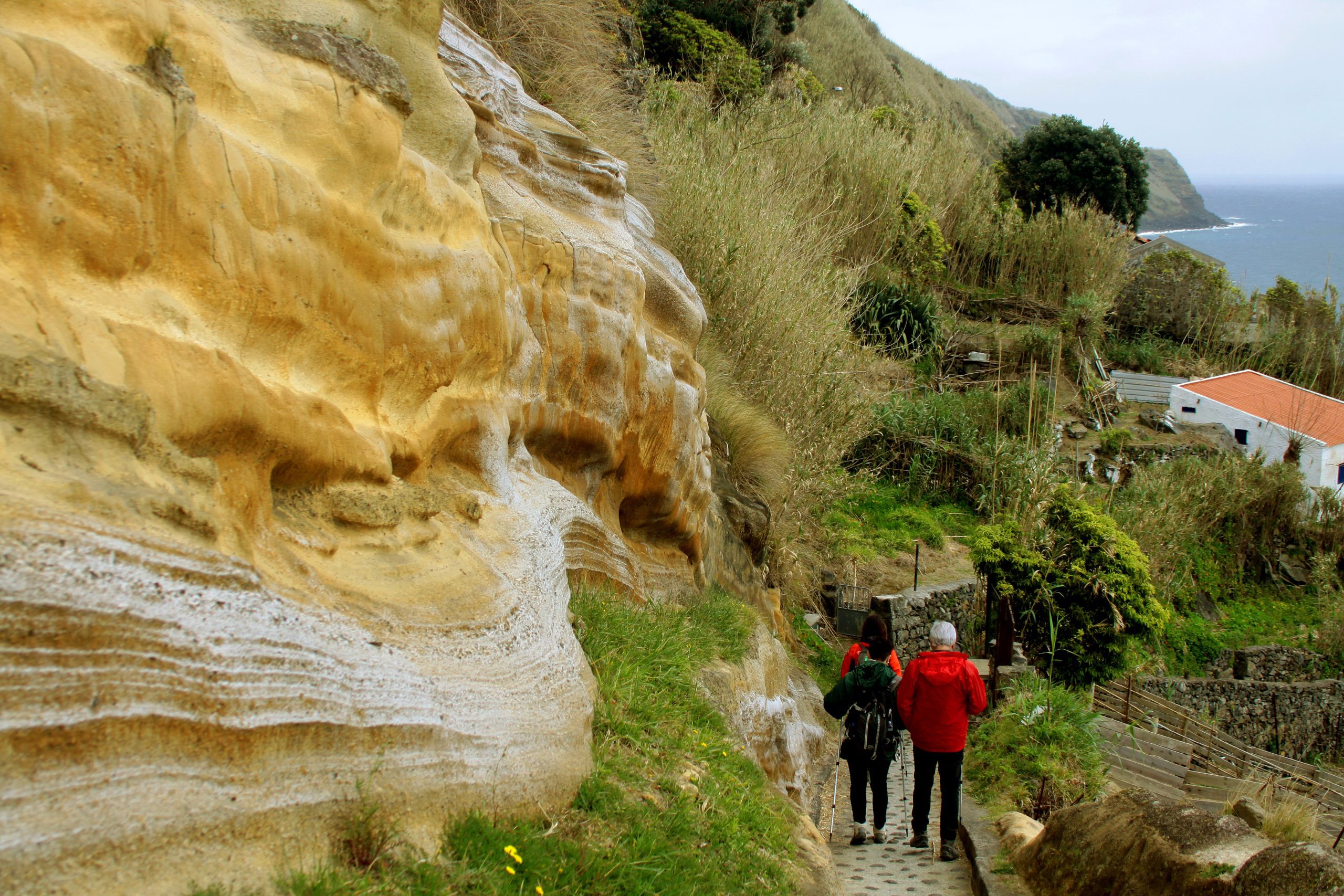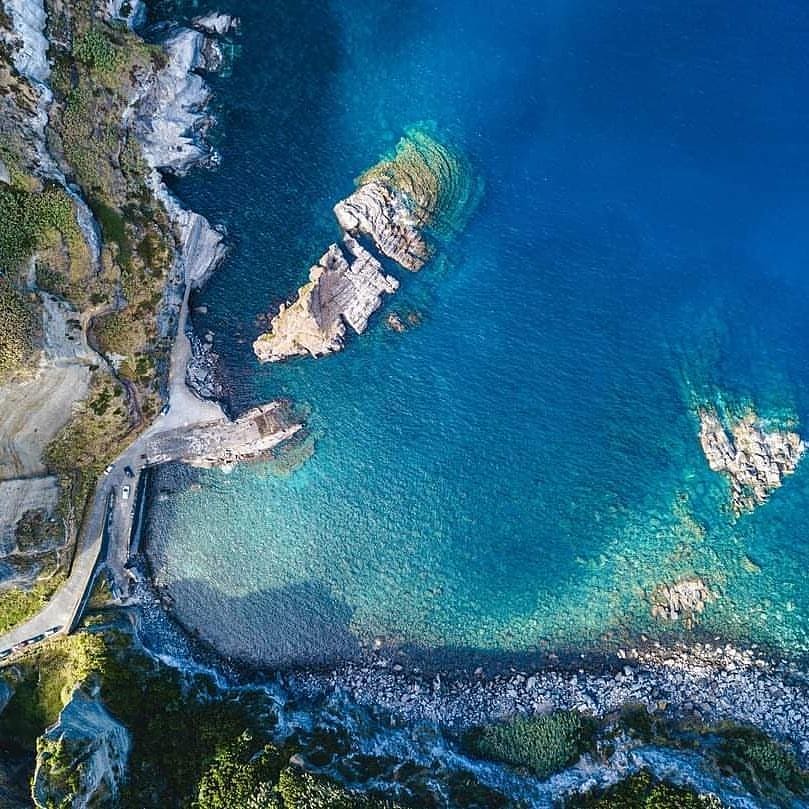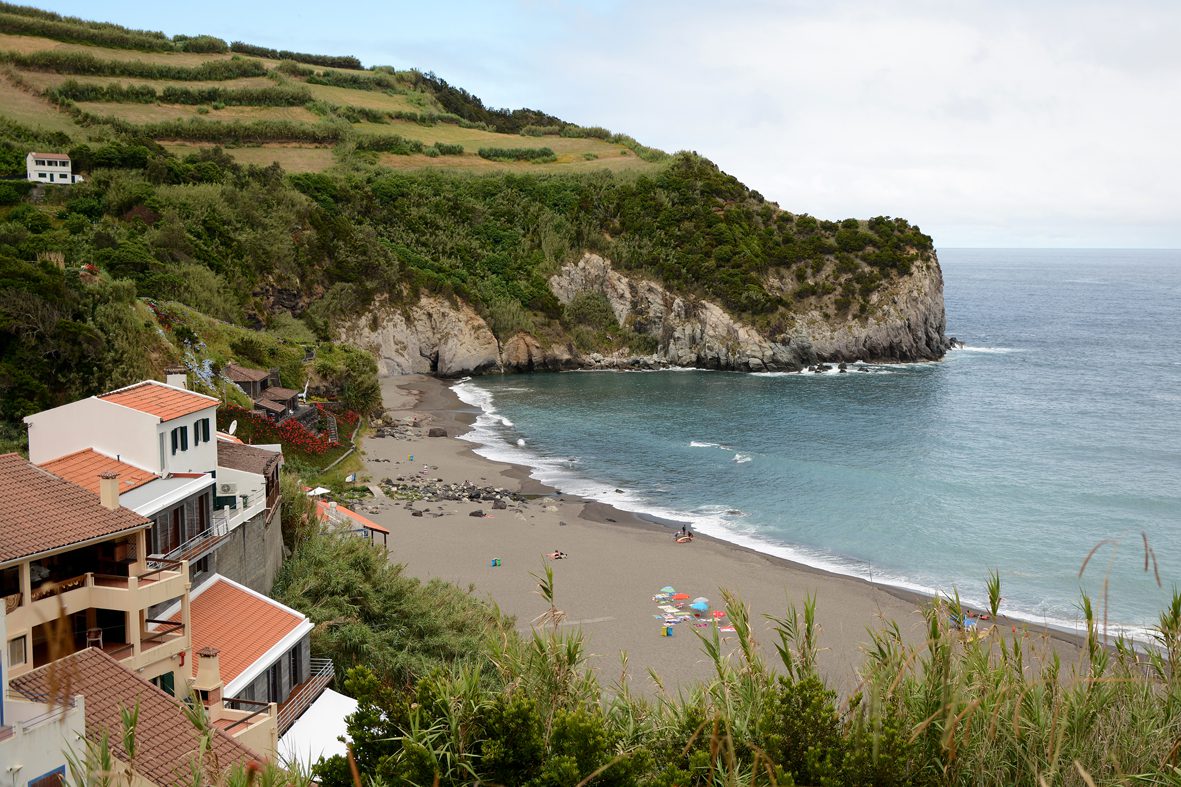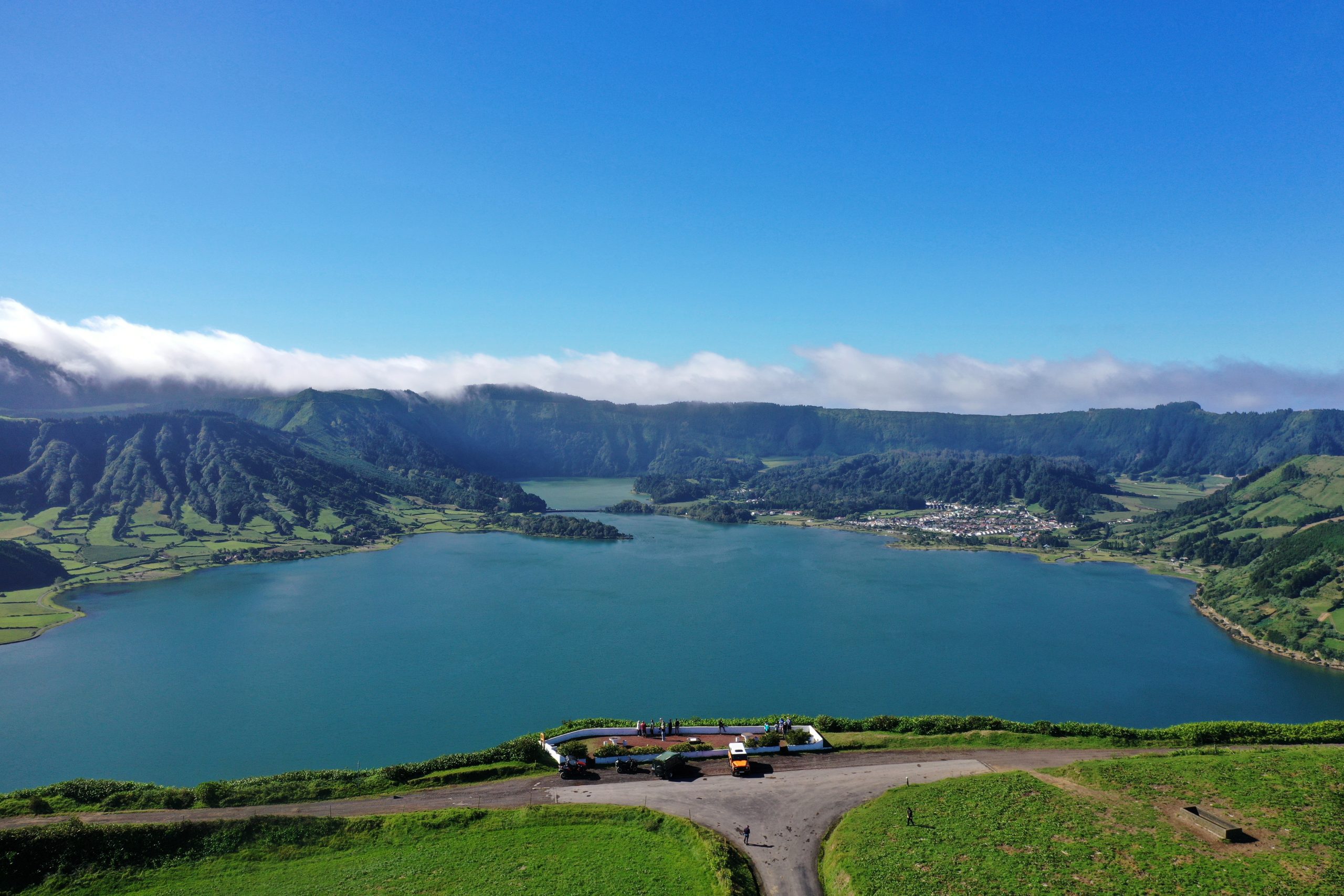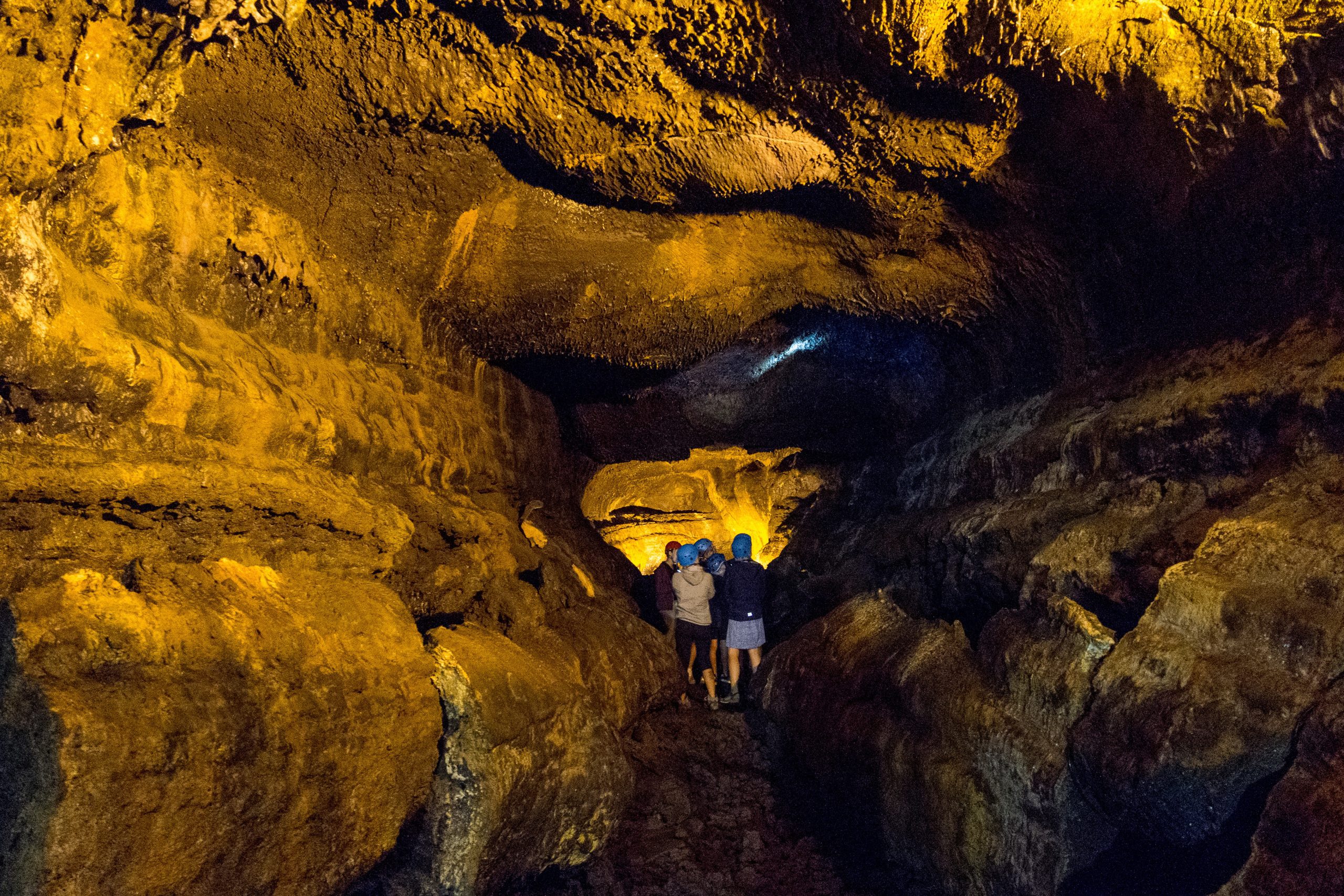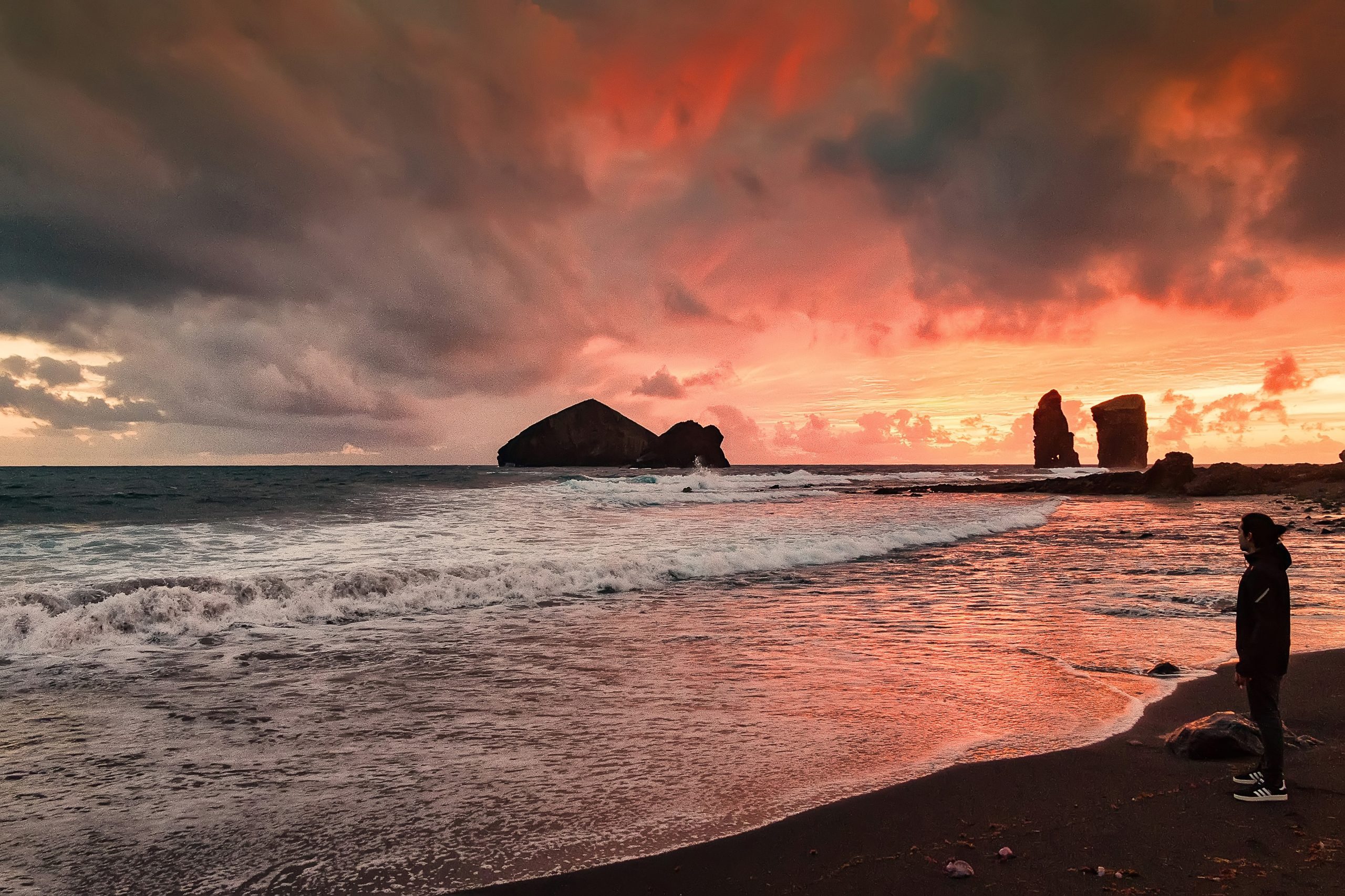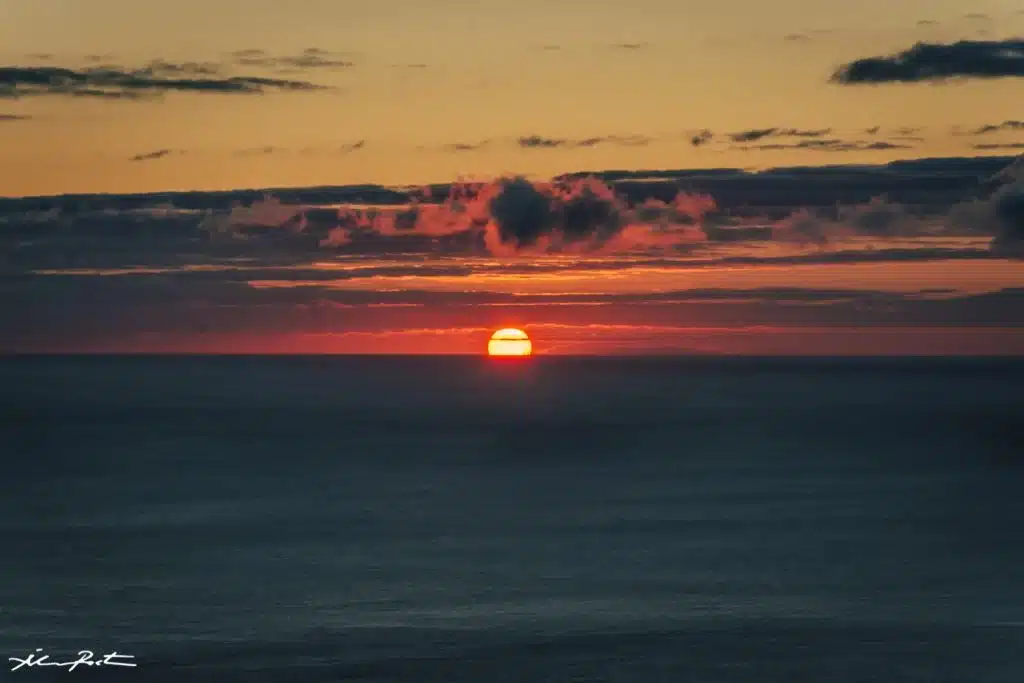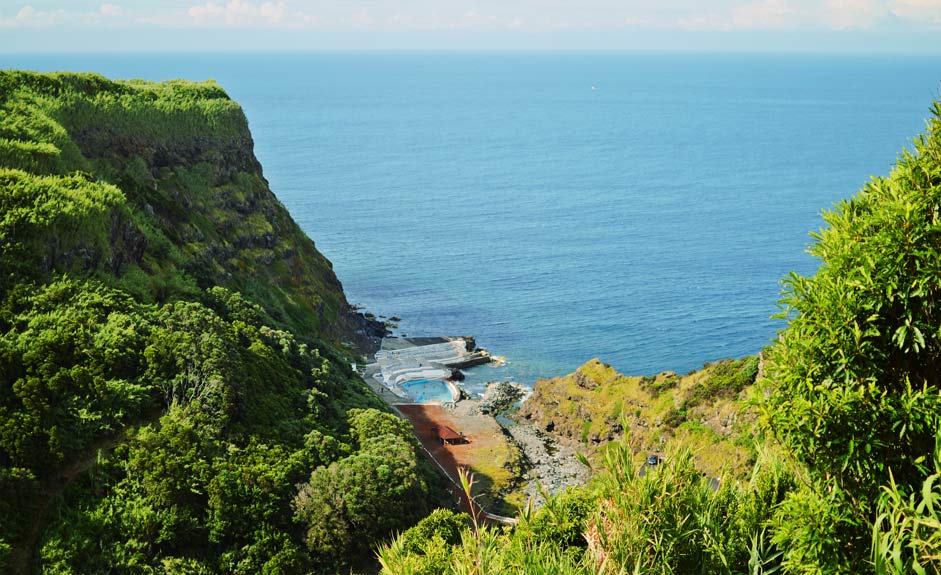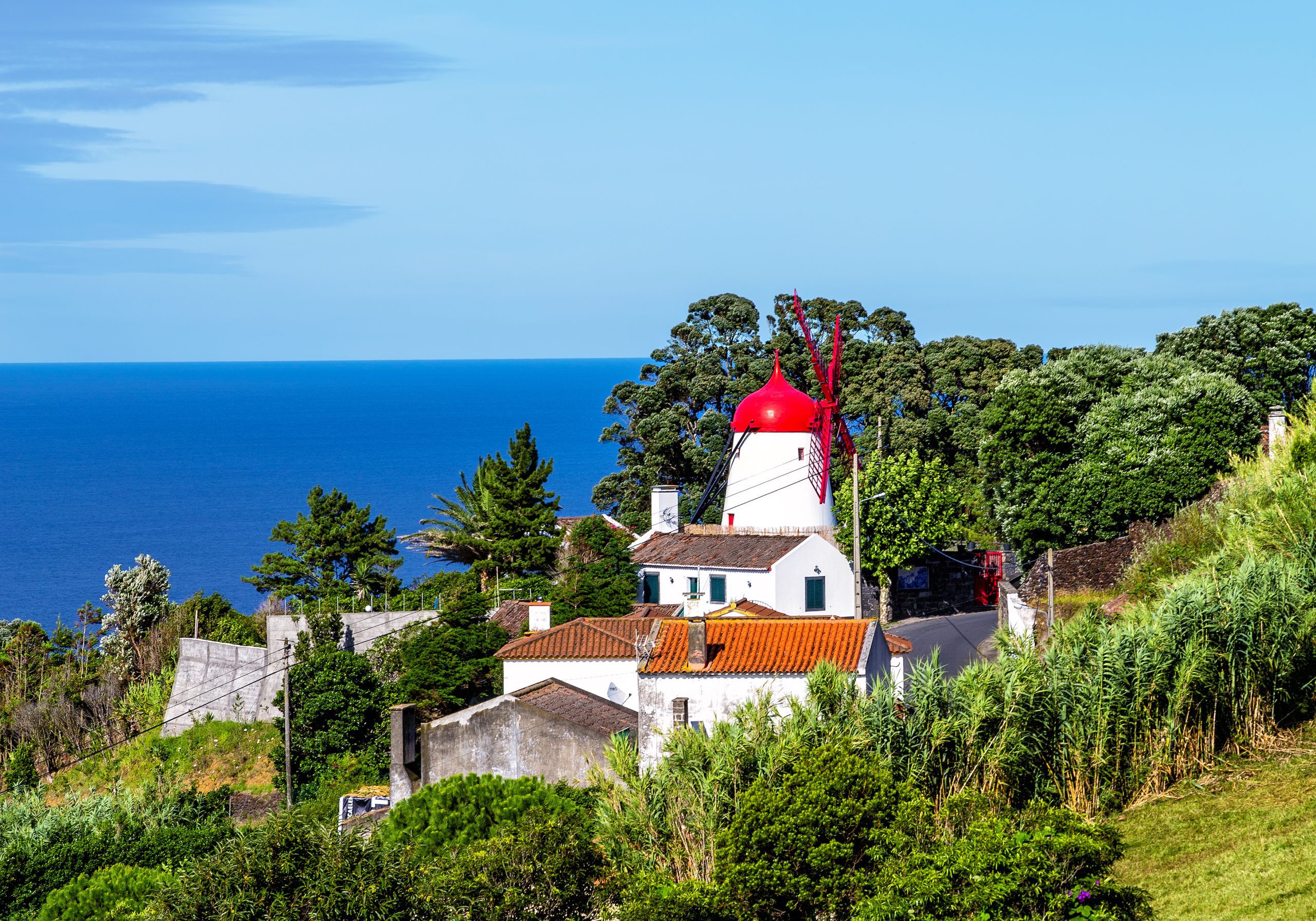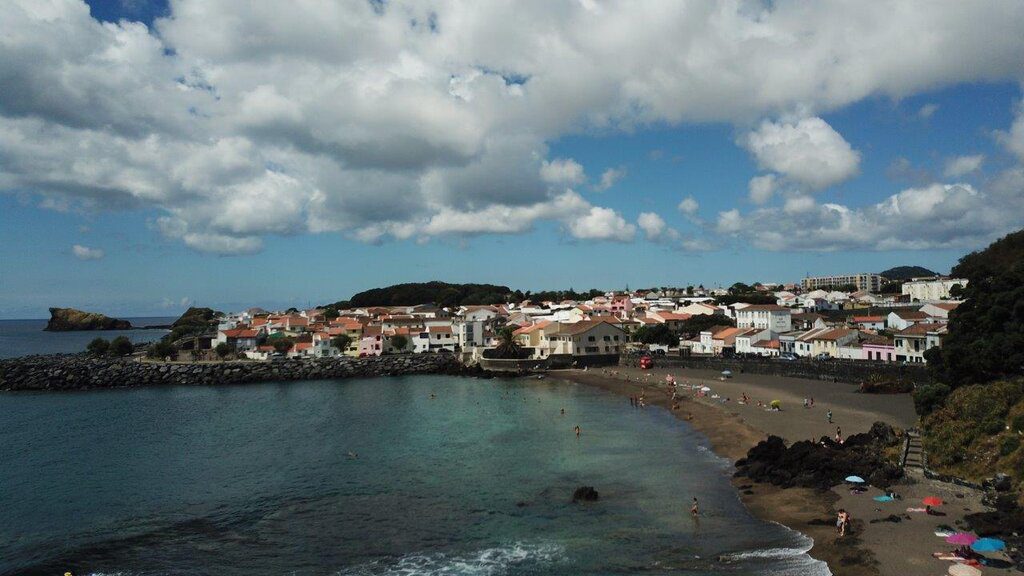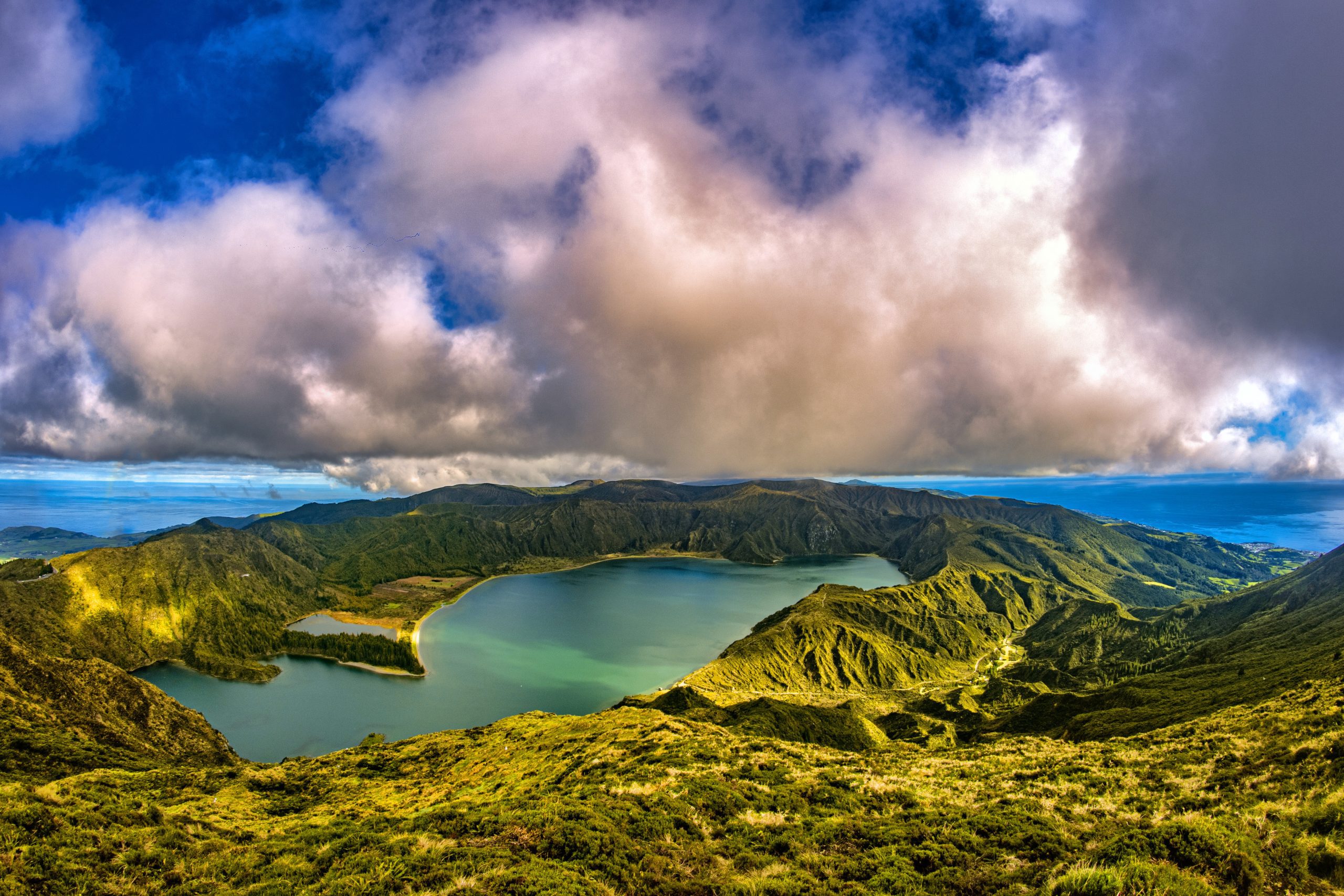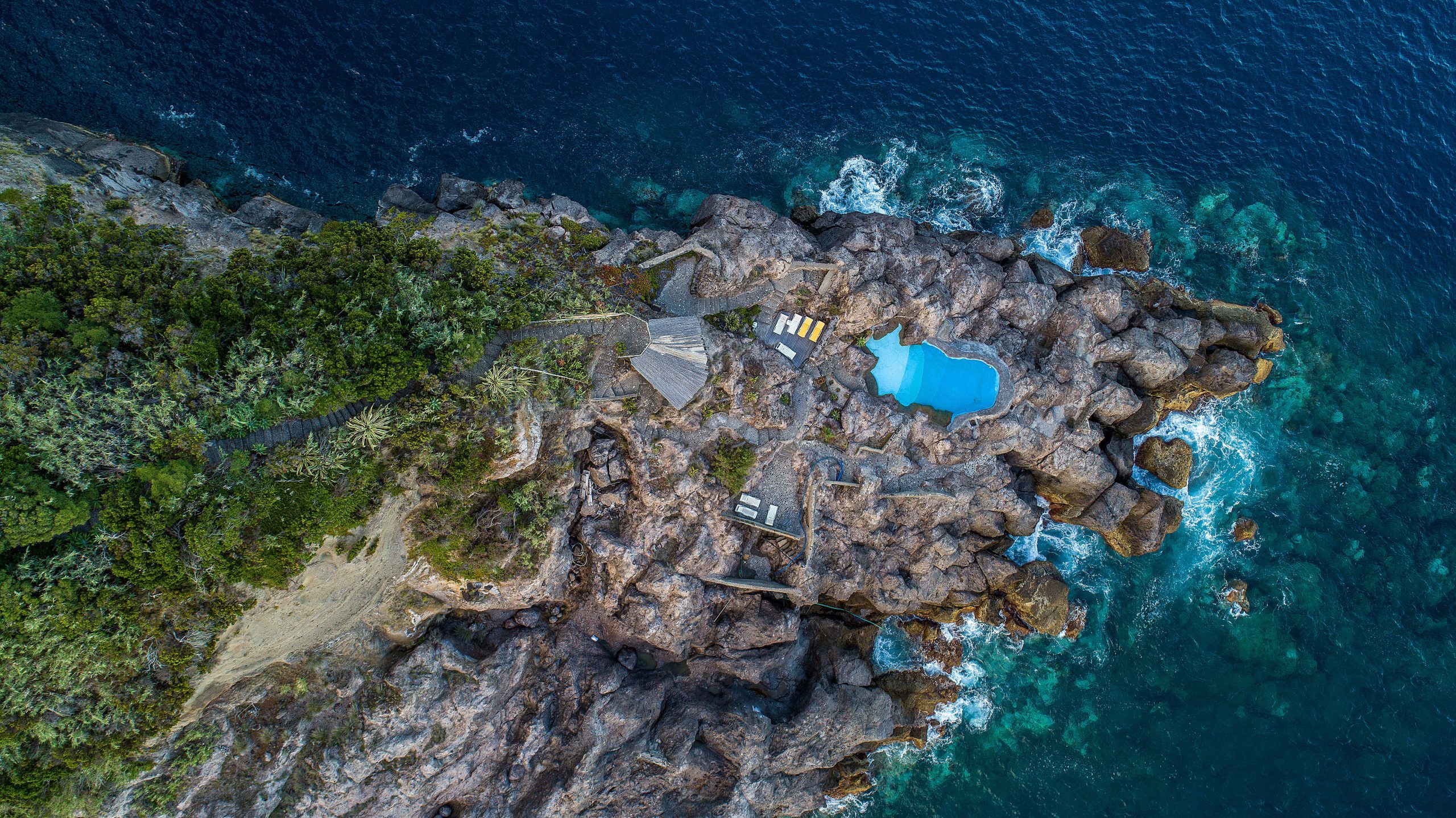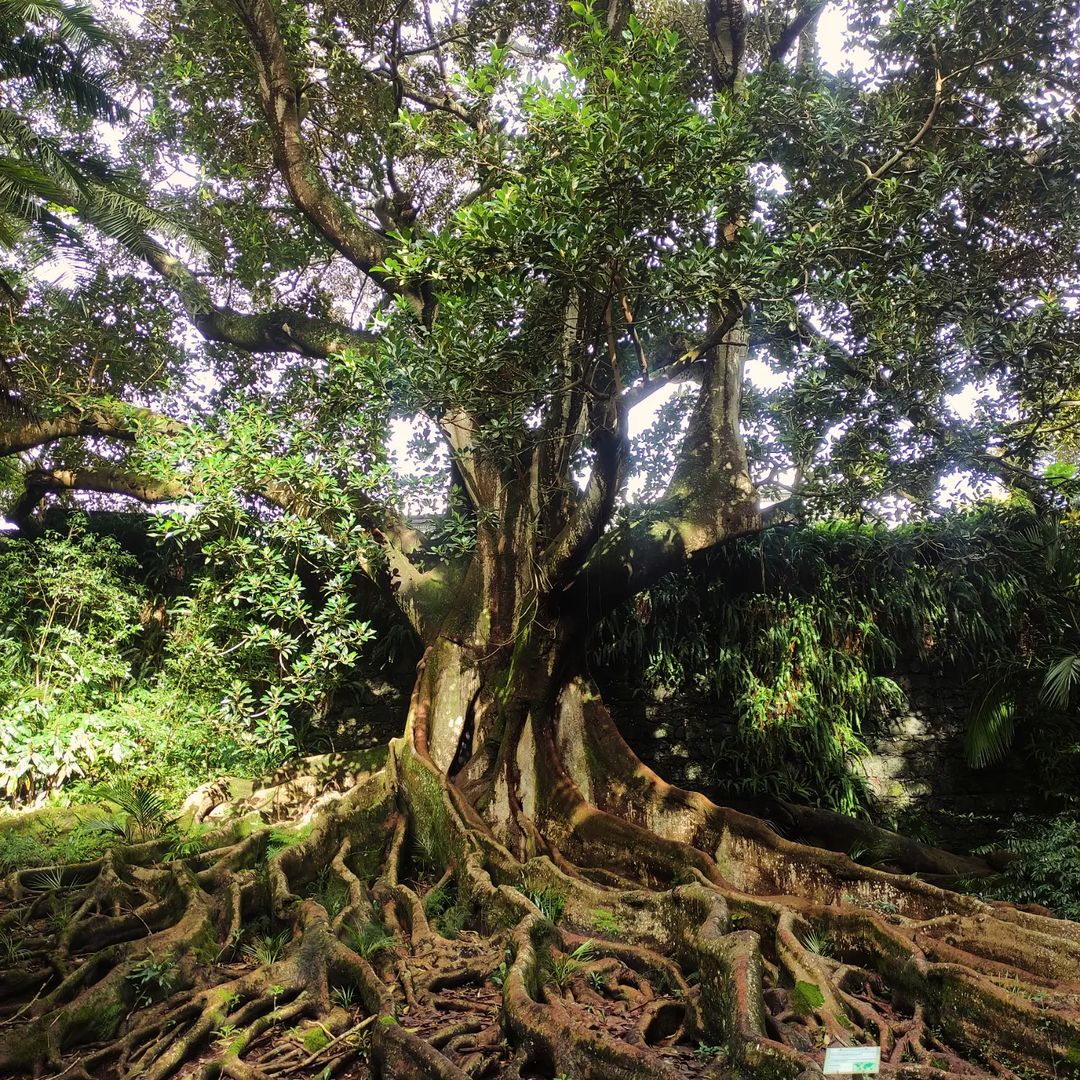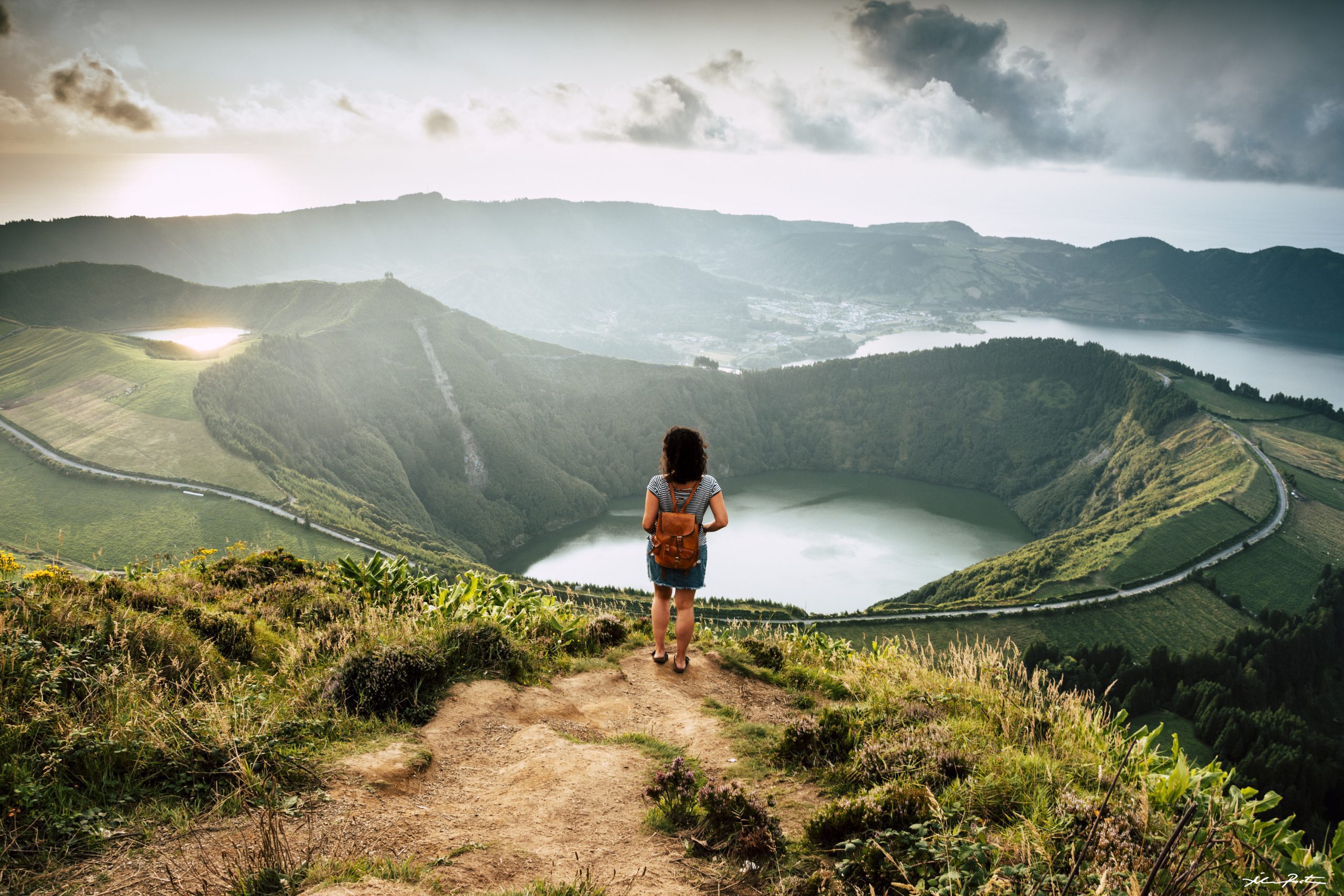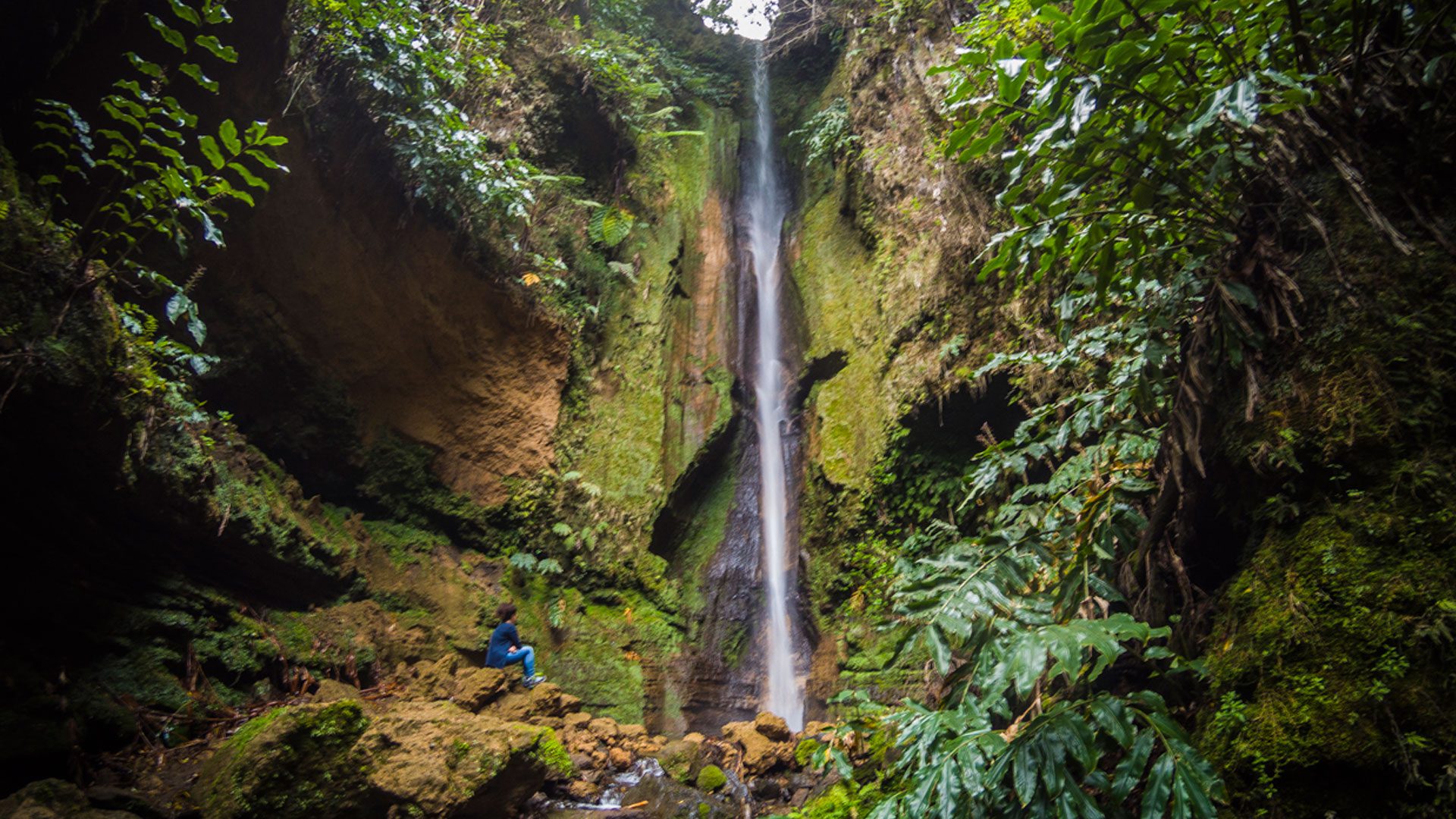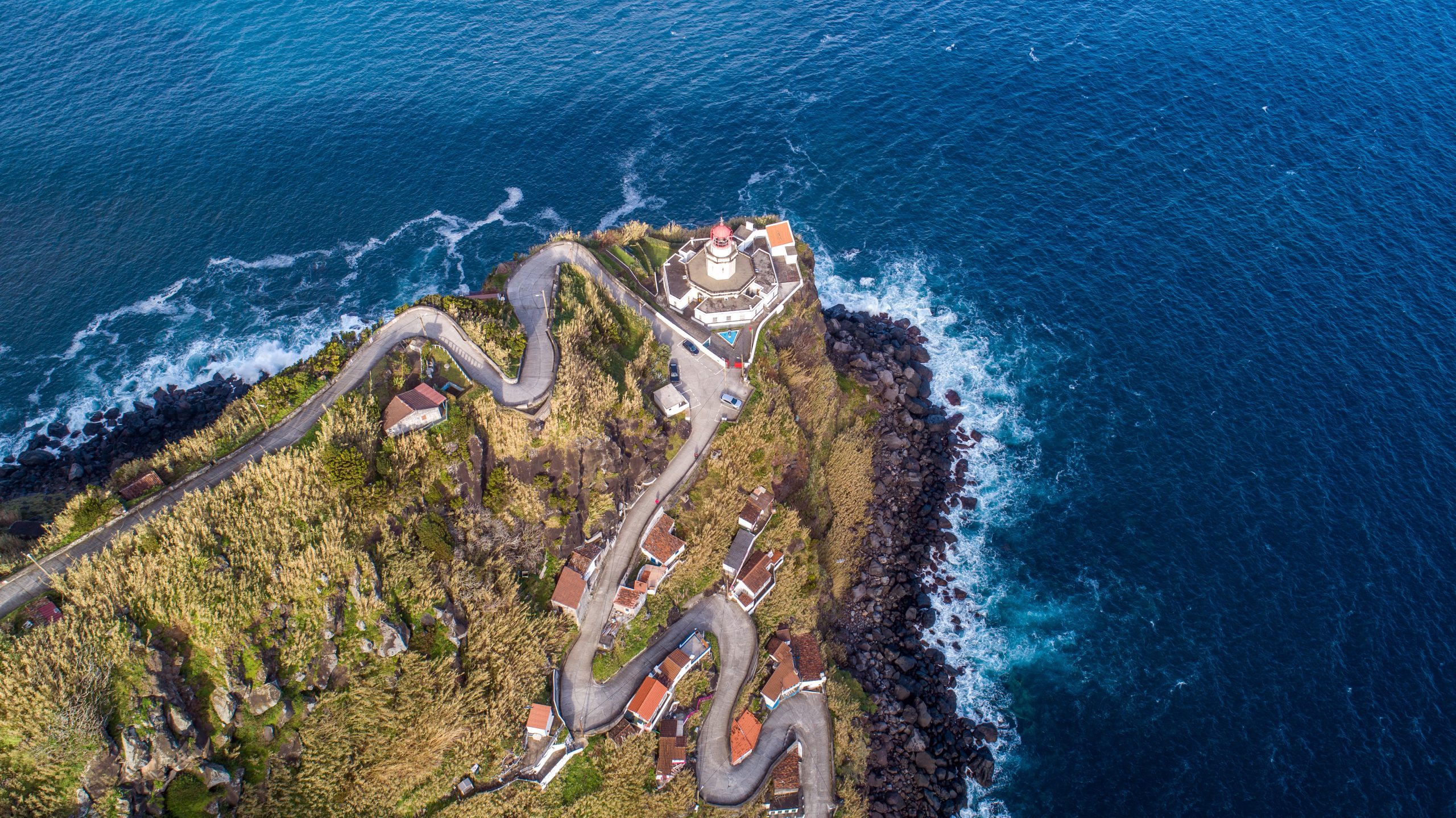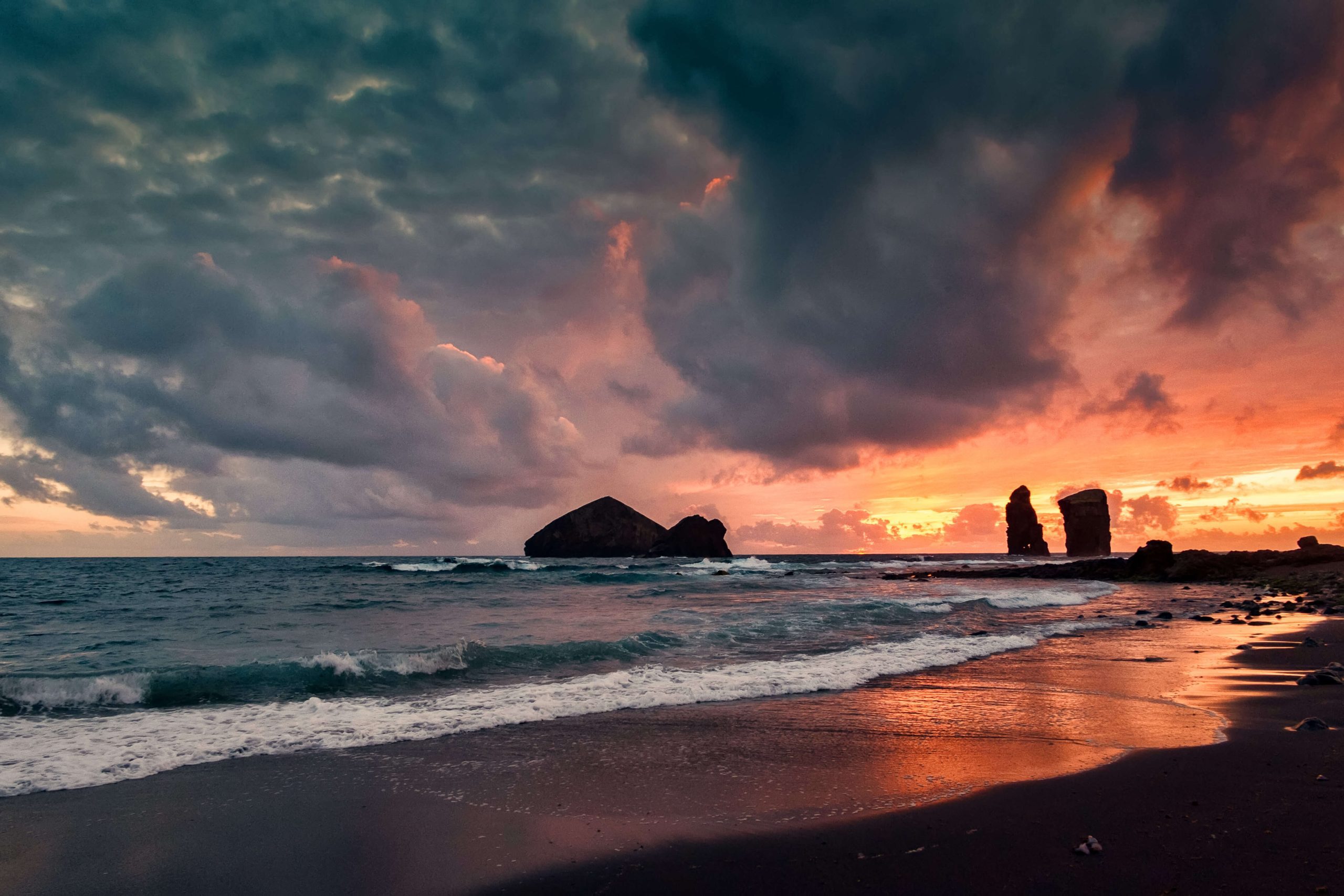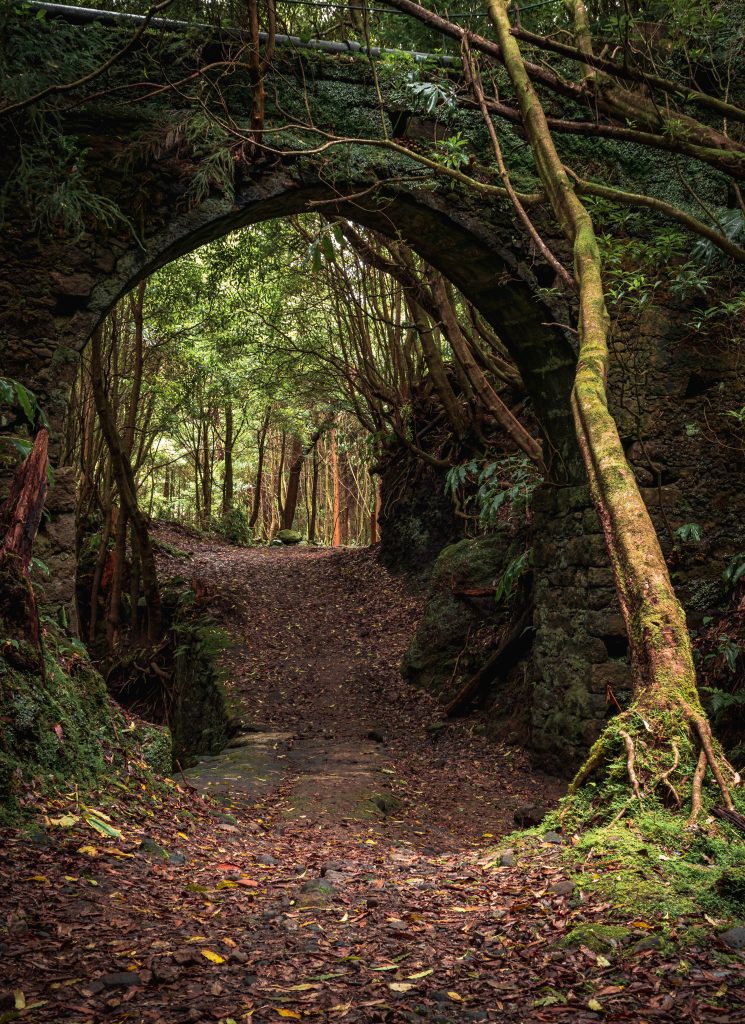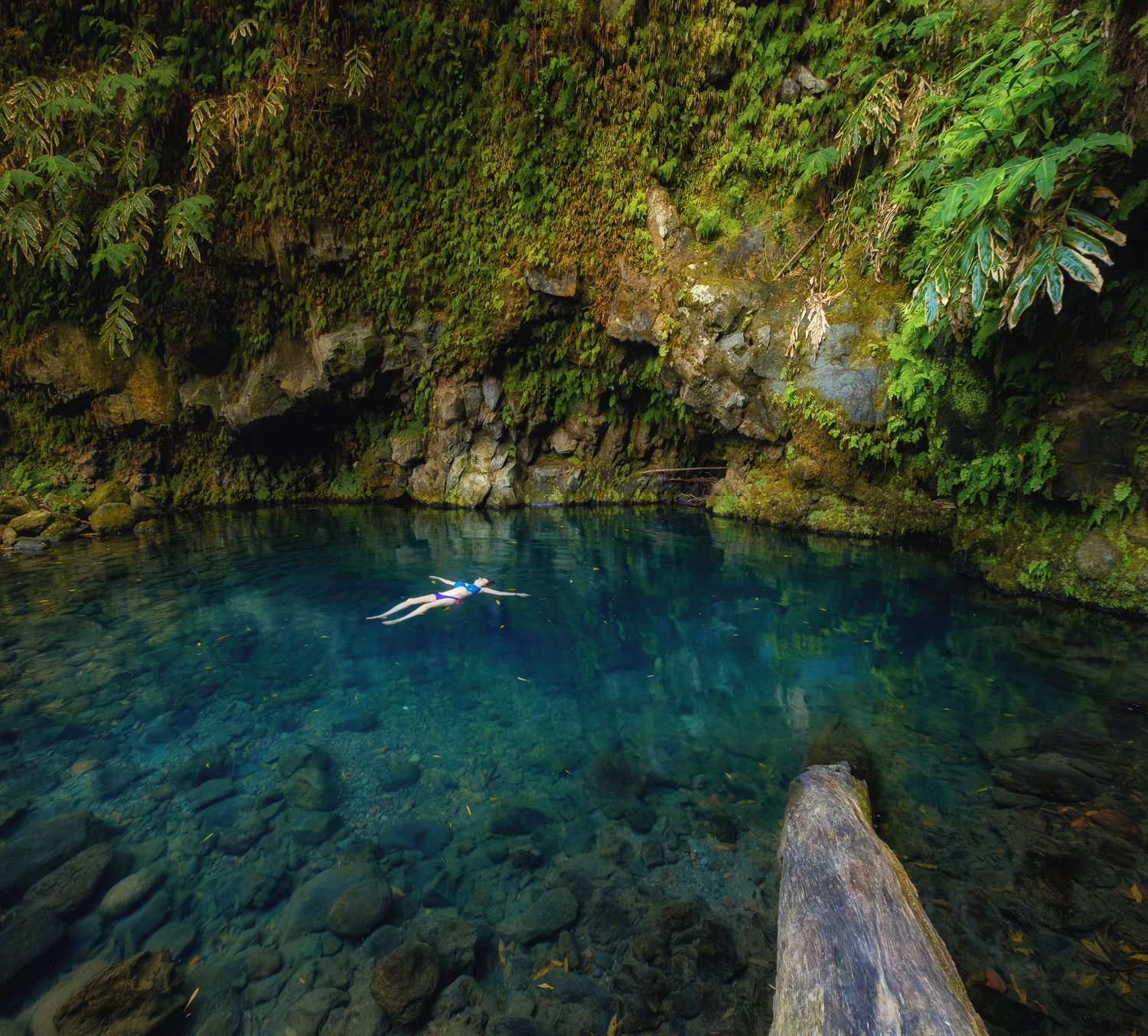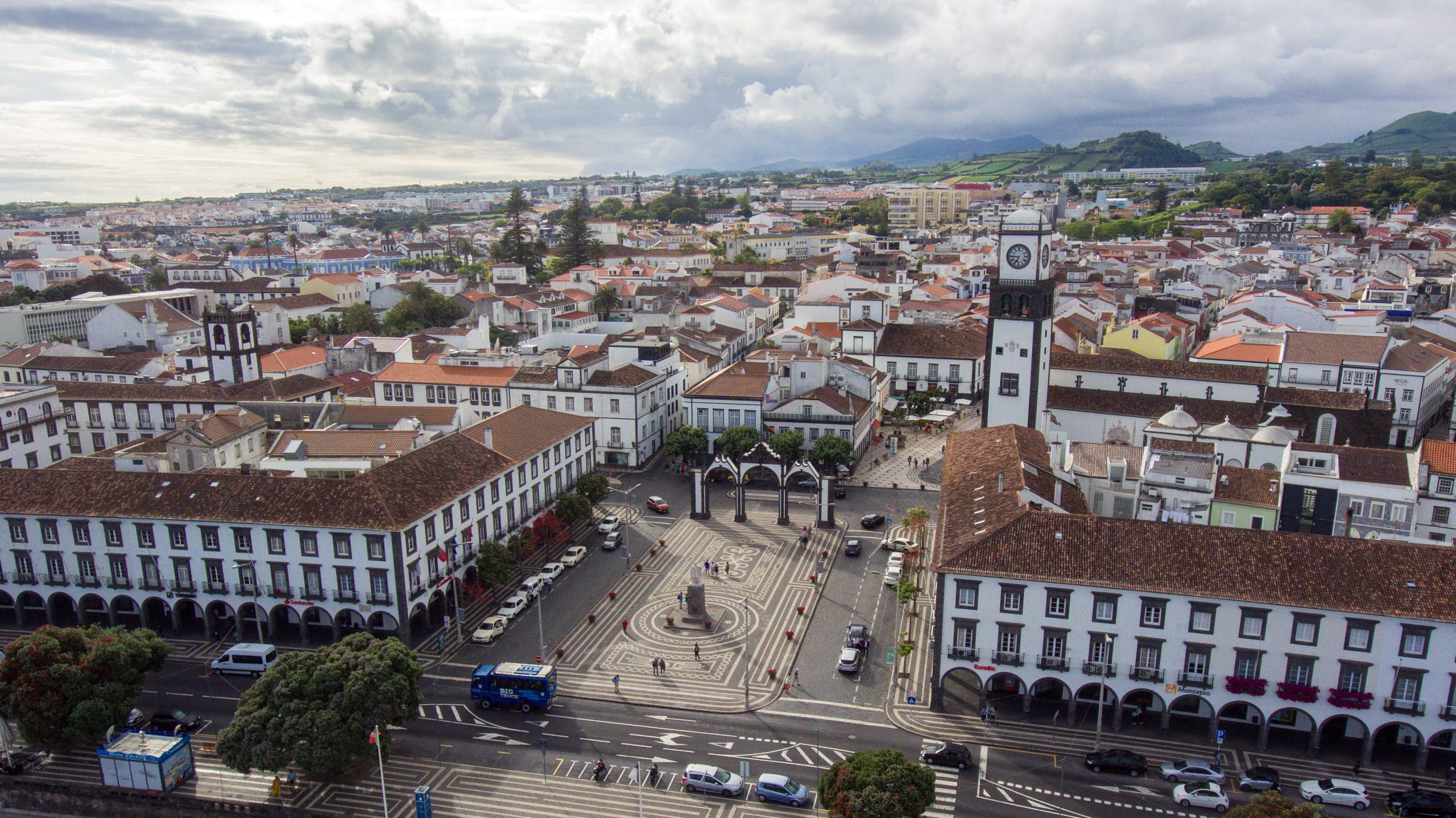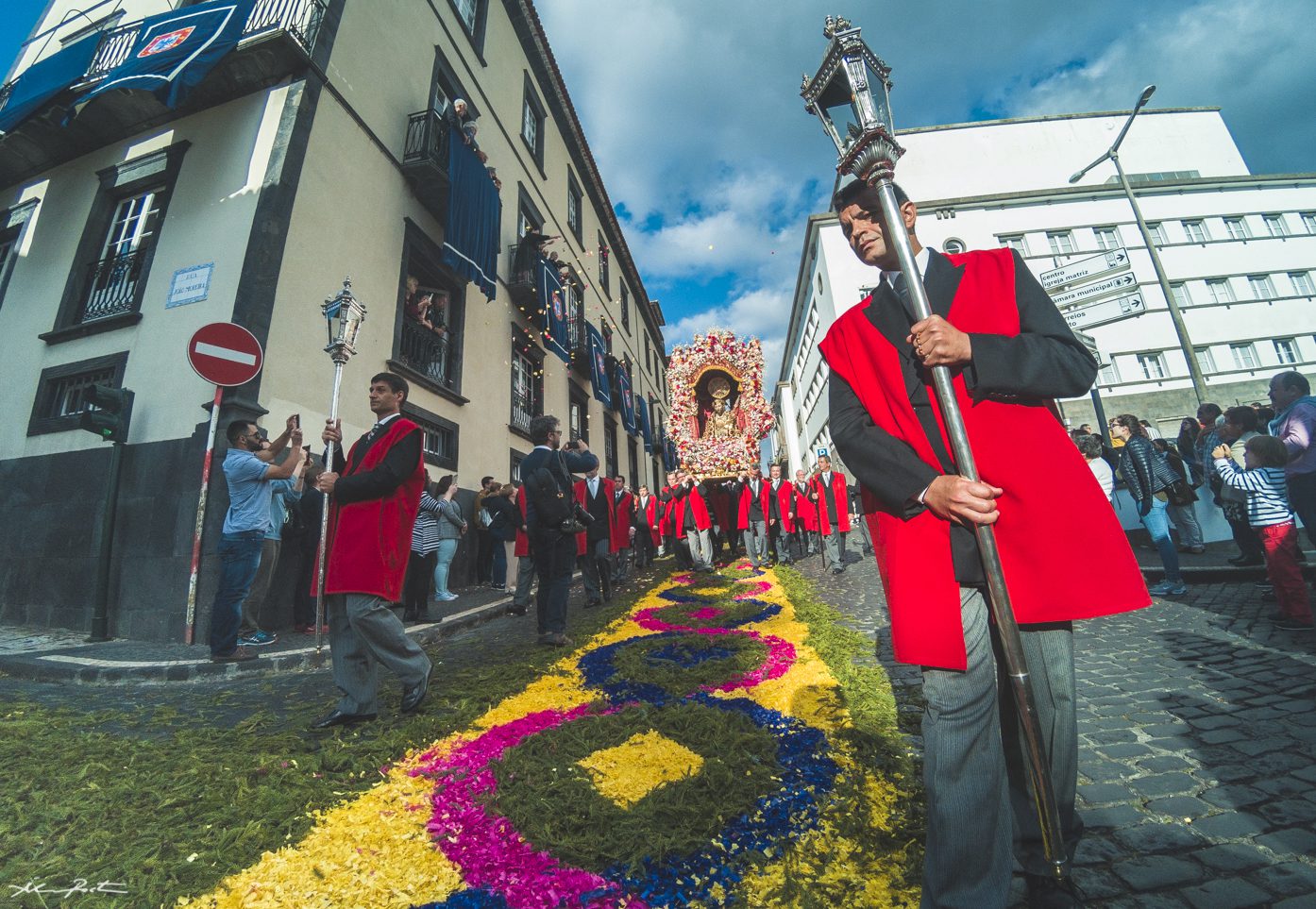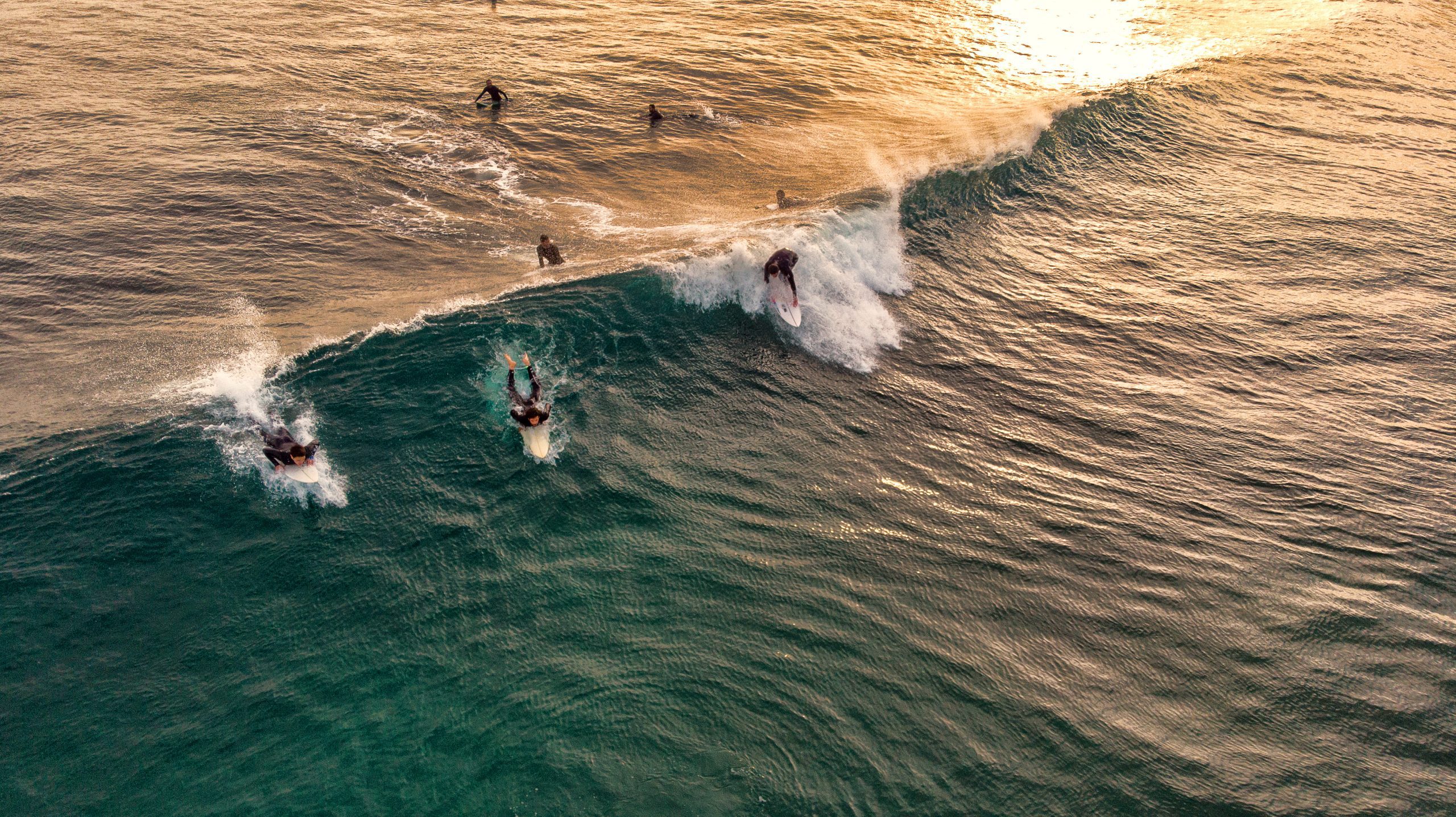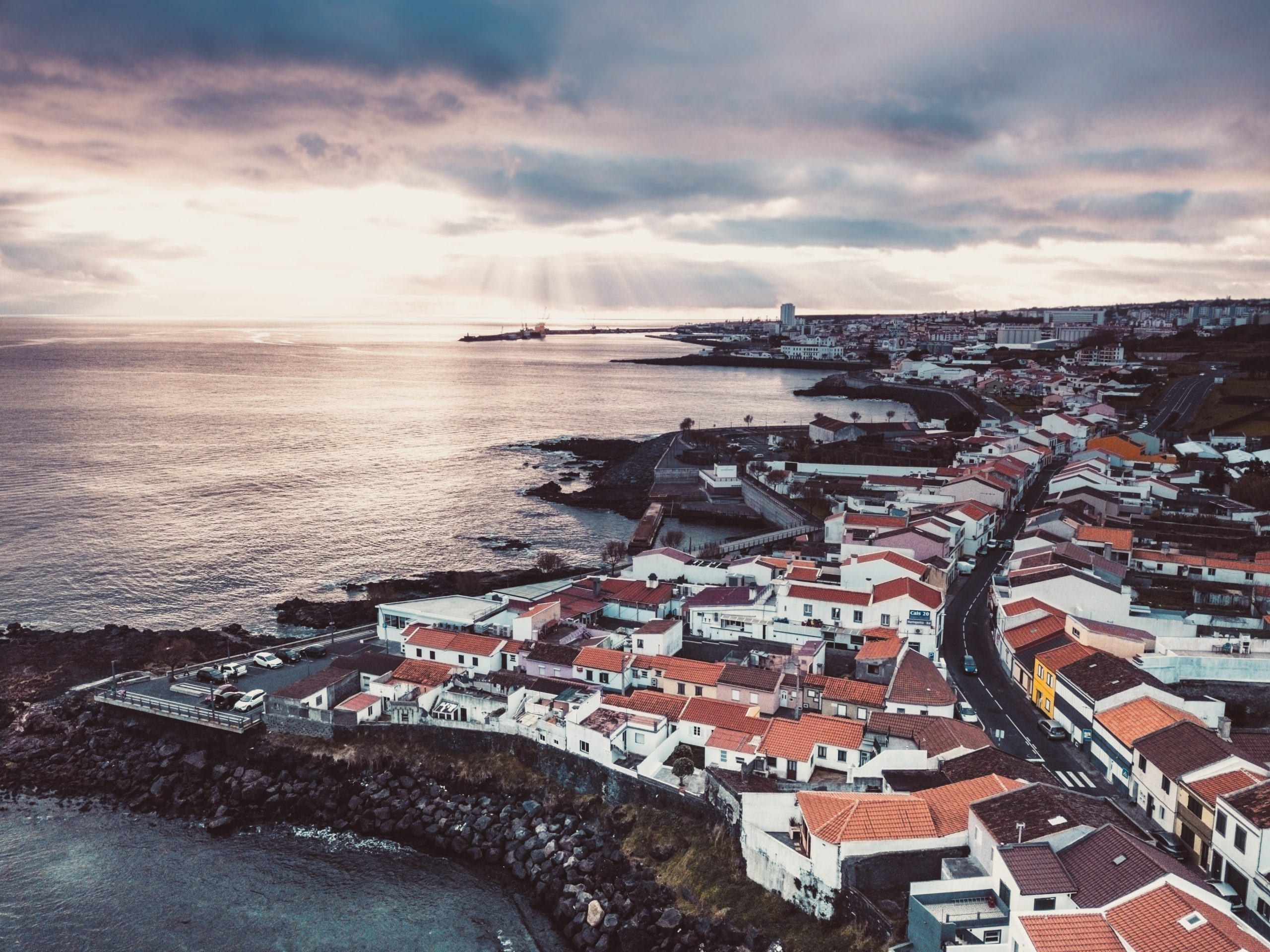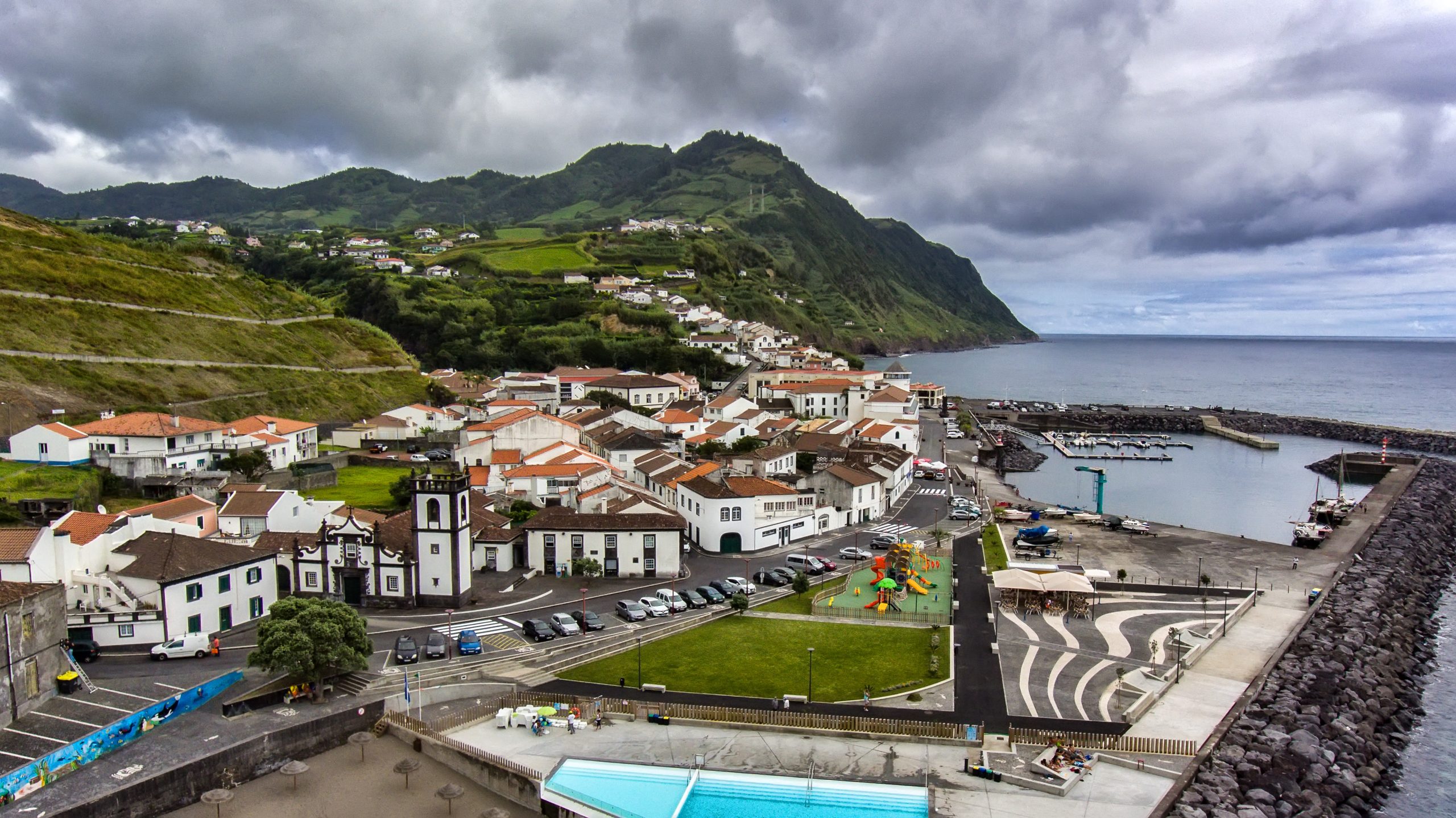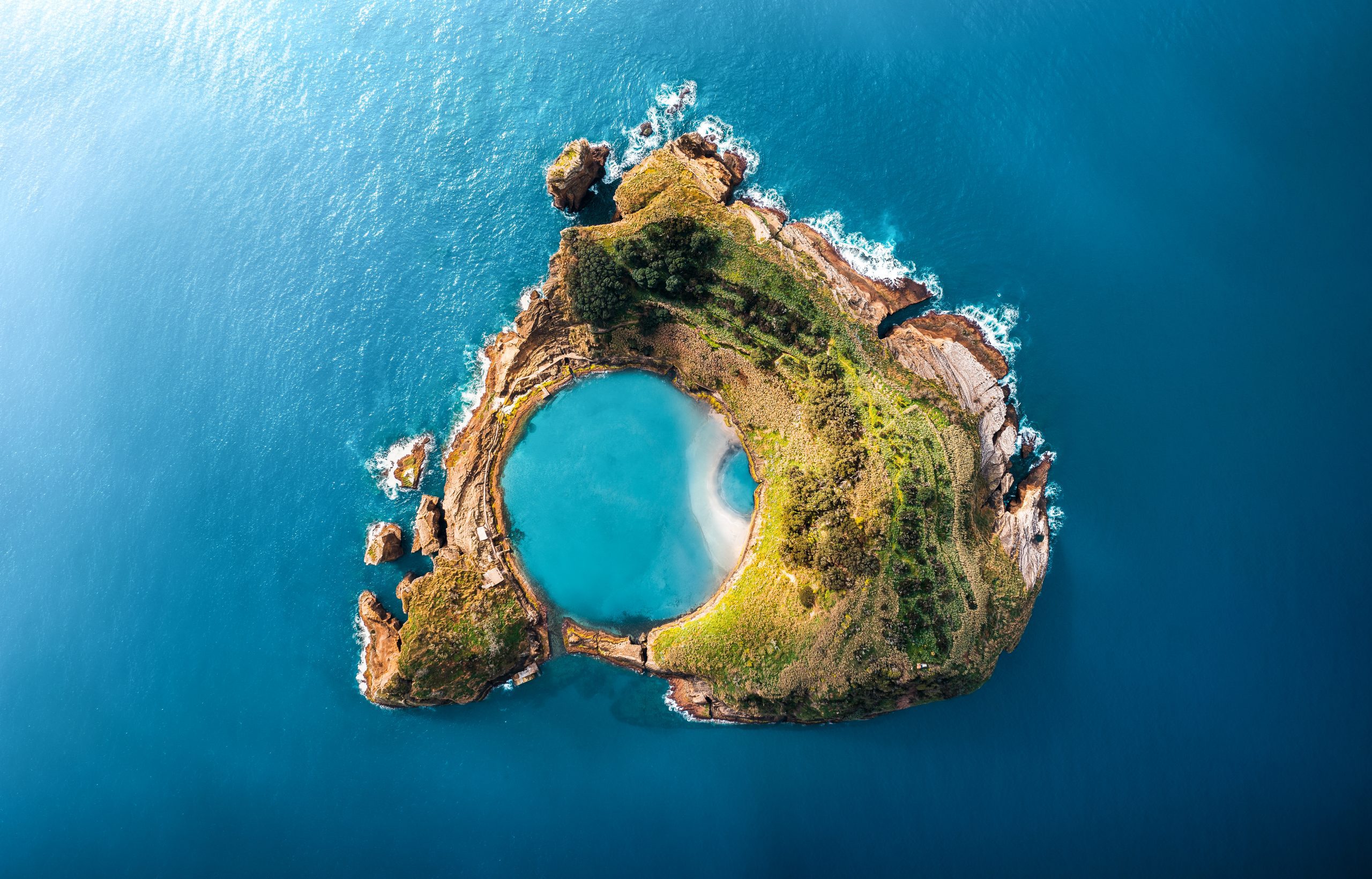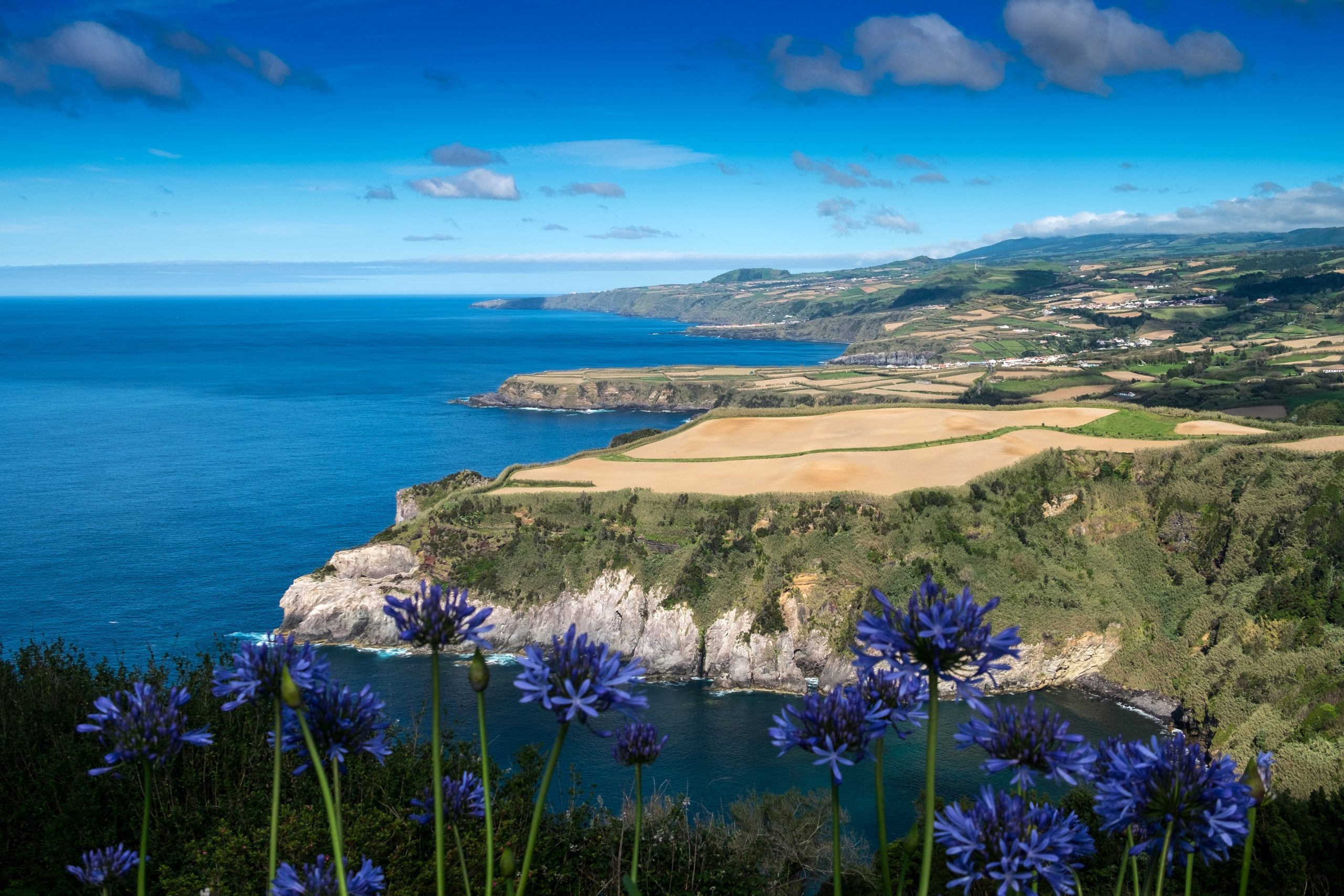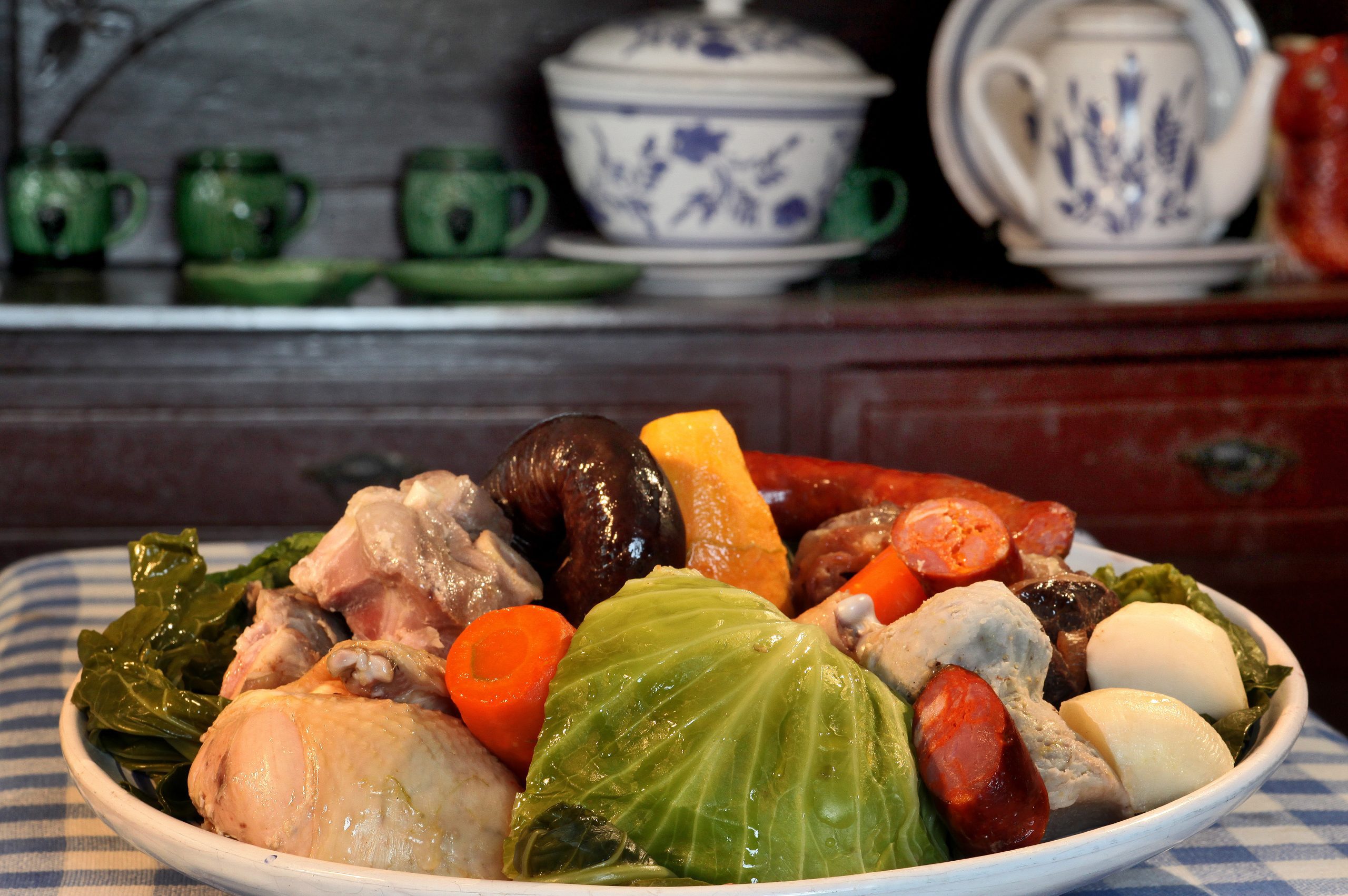Faial da Terra is a picturesque village on the southeast coast of São Miguel Island in the Azores. Known for its natural beauty and tranquil atmosphere, this small locality enchants visitors with its stunning landscapes, scenic trails, and rich cultural heritage.
Its main attractions are the Salto do Prego Waterfall, a popular hiking destination, and the traditional stone houses, which reflect the region’s history and rustic charm. Faial da Terra is a true haven for those seeking an authentic connection with Azorean nature and tradition.
What is Faial da Terra

Faial da Terra is a parish in São Miguel, known locally as the “Nativity Scene of the Island.” Its residents mainly depend on agricultural activities for their livelihood. This parish boasts several unique features, including its fertile lands, proximity to the sea, and the main bathing areas of São Miguel.
During your visit to Faial da Terra, we recommend exploring the Salto do Prego Trail, the unforgettable Aldeia do Sanguinho, and the imposing Salto do Prego Waterfall.
History & Geography
Historians believe settlers established Faial da Terra as one of the first places on the island in the early sixteenth century. Faial da Terra got its name from the abundant presence of the small “Faia-da-Terra” tree (Murcia Faya). This species, native to the Macaronesian Azores, dominated the island’s low-lying forests.
Culture & Festivities
The festivities in honor of the patron saint, Nossa Senhora Mãe de Deus, occur on the first weekend of September. The celebrations in honor of Corpo de Deus also highlight this first settlement. Many emigrants visit the town during these times of the year to spend the festivals with family. Other summer festivals and carnival dances, such as the green and yellow ball, attract residents from all over the island and visitors to the beloved village of Povoação.
Additionally, Povoação is well-known for its typical sweet: “Fofas da Povoação”. A local created this recipe and passed it down to the family. The dough, resembling that of an éclair, contains fennel and allows for filling with lemon or vanilla. A drizzle of chocolate finishes it off with an extra sweet touch.
Fauna & Flora
It is possible to find numerous species, like:
- Heather (Erica Azorica);
- Ivy (hedera Azorica);
- Florist daisy (Erigeron karvinskianus);
- Yam (Colocasia esculenta);
- Hydrangeas (Hydrangea macrophylla);
- Japanese cider (Cryptomeria Thunberg ex Linnaeus).
This area is also home to various wildlife, such as:
- Azores bullfinch(Pyrrhula murina);
- Azorean buzzard (Buteo buteo rothschildi);
- Blackbirds(Turdus Merula Azorensis);
- Other species enjoy the natural wonders that Faial da Terra has to offer.
What to Do at Faial da Terra
Igreja de Nossa Senhora da Graça

The Portuguese church of Nossa Senhora da Graça, constructed in the 17th century in Ponta Delgada, belonged to the former Convent of the Hermits of St. Augustine or Gracianos. Religious activity continued there until 1832, when the Religious Orders dissolved. The church removed all its liturgical objects and repurposed the space for various institutions.
Over the years, the former church and convent space housed the gymnasium of the high school of Ponta Delgada, the judicial court, the secretariat of finance, and the municipal library. Eventually, the Free Academy of Arts of Ponta Delgada occupied the space. Currently, the old church space remains closed and unused.
Miradouro da Lomba do Cavaleiro

At the Lomba do Cavaleiro viewpoint, visitors can enjoy a breathtaking panoramic view of the picturesque town of Povoação. The stunning view showcases the town’s charming houses, winding roads, and verdant hills, making it an ideal location for photographers to capture its beauty.
Whether you are a nature lover, a history enthusiast, or simply seeking a picturesque spot to take memorable photos, the Lomba do Cavaleiro viewpoint is an absolute must-visit destination.
Miradouro do Pico dos Bodes

The Pico dos Bodes Viewpoint is a must-see in Povoação. It offers a breathtaking panoramic view of the coastline from Faial da Terra to Vila Franca do Campo. This viewpoint features a 180-degree sea observation infrastructure, attracting many visitors for whale watching.
Recently, the recovery of the Whale Watch Trail has brought new attention to this area. Located at 460 meters, visitors can relax on the small lawn and stone benches while taking in the indescribable view of the south coast of São Miguel. Those interested in whale watching should consider the related activities in the Azores.
Porta dos Primeiros Povoadores
Religious activity continued there until 1832, when the Religious Orders dissolved. The church removed all its liturgical objects and repurposed the space for various institutions. Located on the coast, this gate offers a breathtaking view that the first explorers experienced upon arriving at the island. The gate is a monument to the island’s history and a testament to the bravery of the early explorers. A visit to this site is necessary for anyone interested in history and adventure.
Agrião

Agrião is not the type of trail where you will see crowds of people. Therefore, you can peacefully connect with nature. You will discover extraordinary landscapes, incredible views, and abundant nature. Along the way, you will encounter sweet pittosporum, acacia, pastures, and an old mill.
Aldeia do Sanguinho

Among the tropical nature, Aldeia do Sanguinho is a rural village deserted by its inhabitants in the 1970s, who sought a better life. However, due to its undeniable charm, efforts are underway to rebuild houses, slowly revitalizing the village.
The region’s first inhabitants, primarily farmers and emigrants seeking improved living conditions, built Aldeia do Sanguinho, which spans several centuries in history. They strategically chose its location to protect houses, land, and farms from frequent storms that ravaged the region. Unfortunately, following the floods of Faial da Terra, the village became abandoned four decades ago.
Today, Aldeia do Sanguinho remains uninhabited primarily, with around twenty houses once accommodating over two hundred people lying empty. Nonetheless, a project to restore and repopulate the village has begun. Some houses are now available for visitors, and a café operates in the area, adding to its appeal. Visitors can follow the trail leading to the Salto do Prego Waterfall to reach the village, making it an ideal spot for nature lovers and hiking enthusiasts.
Parque de Merendas do Porto Novo

The Porto Novo Merendas Park is a snack park on the seafront with a beautiful view of Portinho do Faial da Terra. It is open to everyone and offers grills, tables, and stone benches for picnics and rest. Native trees and plants fill the park, making it a great place for unwinding and relaxing with family and friends. It’s an excellent choice for those who want to enjoy nature away from the city’s hustle and bustle.
Portinho do Faial da Terra

The Portinho Bathing Area in Povoação sits in a protected bay beside a tall lava cliff. The area is suitable for swimming and has infrastructure to support bathers. The beach has gravel, pebbles, and sand, with a swimming pool. The bay has high maritime exposure and a sandy and rolled pebble bottom.
Praia do Morro
Being remote from the cities, Povoação is a peaceful place to enjoy quality time in nature. The county has many beaches made of stones or sand. Ribeira Quente Beach becomes fairly packed during the summer, making it the most popular option. For a more hidden experience, look for Praia do Morro.
Salto do Prego

Nature lovers consider Salto do Prego, surrounded by lush vegetation, a hidden gem and a must-visit location. The clear and icy waterfall is a popular destination for both national and international visitors, and you’ll be able to learn about the area’s history along the way. The site is full of historical points of interest, making it an excellent spot for those who love to explore and appreciate natural beauty.
Serra da Tronqueira

Located in the Natural Reserve of Pico da Vara, in the municipality of Nordeste, this viewpoint offers an imposing view of the Tronqueira mountain range, Pico da Vara, and Pico Verde. Rising to an altitude of 906 meters above sea level, this geological wonder provides a breathtaking panoramic view of the surrounding natural beauty.
Surrounding the viewpoint, you’ll find the largest remaining patch of Laurisilva forest on the island, a UNESCO World Heritage Site. Here, you can also visit the Environmental Center of Priolo, located in the village of Pedreira. It is dedicated to the conservation of the Azores bullfinch, a critically endangered bird species that inhabits the forests of São Miguel. A visit to this stunning location is a must for any nature enthusiast or anyone looking to immerse themselves in the beauty and biodiversity of the Azores.
Plan Your Visit to Faial da Terra
Pro Tips
A stunning waterfall hidden between two tunnels in Ribeira Quente awaits adventurous travelers. But that’s not all the county has to offer. Hike on the Agrião and Sanguinho trails to uncover some of the region’s most incredible natural wonders.
You’ll stumble upon breathtaking waterfalls, thick forests, and even an abandoned village. And if that’s not enough, the wild peninsula with its gorgeous house perched on top will take your breath away. Don’t miss the chance to explore these hidden gems and witness the magic of nature for yourself.
Where to Eat Near Povoação
Click on the following link to find a place to eat near Povoação. It will take you to TripAdvisor, where you can review the 10 best restaurants.
Where to Stay Near Povoação
To make your life easier, we’ve filtered the search by:
Nearby Attractions
Furnas: Explore the Enchanted Valley

Furnas is a hidden pearl on the island of São Miguel, boasting one of the largest hydrothermal parks in Europe, featuring a diverse array of thermal spring waters and boiling water spots. The valley sits within a massive volcanic crater, one of the most active on the island, offering visitors the opportunity to taste these unique volcanic waters, with at least 22 varieties available. The area is a hub for agriculture and tourism, and it’s easy to see why. With unlimited beauty and a peaceful atmosphere, it’s a popular destination for locals and travelers seeking a tranquil weekend or holiday getaway.
Check all our articles about each one of the most relevant points of interest in Furnas: Caldeiras das Furnas | Capela da Nossa Senhora das Vitórias | Castelo Branco Viewpoint | Lagoa das Furnas | Lagoa das Furnas Viewpoint | Mata-Jardim José do Canto | Terra Nostra Garden | Parque Terra Nostra’s Thermal Pool | Pico do Ferro Viewpoint | Poça da Dona Beija | Ribeira Quente | Ribeira Quente Beach | Salto do Cavalo Viewpoint | Salto do Rosal | Terra Nostra Garden
Nordeste: Explore the Small Village

Nordeste, located northeast of São Miguel island, is a charming and picturesque town with a rich heritage. Known as one of the most flowery villages in Europe, it is a sight to behold, especially during the spring and summer months. Upon arriving in Nordeste, you will encounter the magnificent Bridge of the 7 arches, constructed between 1882 and 1883, offering stunning views of the surrounding scenery. A visit to Nordeste is a must for anyone seeking to experience the unique beauty and history of the Azores.
Check all our articles about each one of the most relevant points of interest in Nordeste: Farol do Arnel | Miradouro da Ponta do Sossego | Poço Azul | Ribeira dos Caldeirões
Ilhéu de Vila Franca: Swim in a Volcano

The islet of Vila Franca do Campo is a must-visit beach on São Miguel island. It features crystal-clear waters in the crater of an old submarine volcano, perfect for swimming and snorkeling. For preservation purposes, it opens only from June to October, but it is a natural wonder that you should not miss. For those visiting outside the high season, Vinha da Areia beach in Vila Franca do Campo offers a black-sand beach ideal for relaxing under the sun.
Check all our articles about each one of the most relevant points of interest in Vila Franca do Campo: Vila Franca do Campo Islet | Água D’Alto Beach | Ermida de Nossa Senhora da Paz
Ribeira Grande: A Gem in the North of São Miguel

Ribeira Grande is a coastal city with stunning ocean views and a lively and bustling place with a rich history and culture. The city’s well-preserved churches showcase impressive Baroque and Gothic architecture, taking visitors on a journey through time. Its picturesque squares are great places to meet the locals and enjoy a coffee or a meal, and they serve as venues for cultural events and festivals.
Check all our articles about each one of the most relevant points of interest in Ribeira Grande: Areal de Santa Bárbara | Santa Iria Viewpoint | Porto de Santa Iria | Praia dos Moinhos | Caldeiras da Ribeira Grande | Rabo de Peixe | Pico da Barrosa
Maia: Charm and Natural Beauty on the Azores Coast

Peacefulness and the smell of the ocean mix in the town of Maia. It is a quiet coastal village on top of an old lava flow with luxuriant nature and a rich culture and history. Maia is far away from tourist crowds and camera flashes. Discover a place locals know how to appreciate.
Complementary Information
Best Season to Visit the Azores
The Azores Archipelago boasts a unique climate that shapes its lush landscapes, making it a splendid year-round destination. With mild temperatures and minimal fluctuations, each season offers something unique. Spring averages 16 °C, summer reaches 21 °C, autumn cools to 18 °C, and winter remains mild at 14 °C.
→ For a detailed breakdown of the weather by month, check the following links 🌤️☔️: January | February | March | April | May | June | July | August | September | October | November | December
How to Get to the Azores
The Azorean Archipelago is easily accessible through numerous flight routes. Lisbon and Porto are the main entry points to the continent, with direct flights available to São Miguel (PDL), Terceira (TER), Faial (HOR), Pico (PIX), and Santa Maria (SMA). To find the best flight, use search engines like eDreams or Skyscanner. These platforms let you compare prices and schedules from multiple airlines in one convenient location.
For more details on how to get to the Azores, take a look at our complete guide. But what if you want to explore beyond your arrival island? We’ve got you covered!
- Azores airports 🛬
- Flights between islands ✈️
- Ferries between islands ⛴️
- Which island to choose? 🏝️
- What airlines fly to the Azores? 🛩️
→ Once you’ve found the perfect route, book your tickets and get ready to experience one of the world’s most stunning island groups!
Travel Essentials
Essential Information for your Azores trip: Azorean Language & Phrases 🗣️ | Currency & Banks 💵 | Credit Cards & Traveler’s Cheques 🏧 | Driving in the Azores 🚗 | Electricity 🔌 | Experiences & Tours 🗺️ | Health & Safety 🩺 | Internet & Wi-Fi Access 🛜 | Phones & Mobile Service 📞 | Post Offices & Buying Stamps ✉️ | Public Holidays 🏖️ | Shopping 🛒 | Time & Daylight 🕒 | Whale Watching Guide 🐳 | Best Island to Visit 🏞️
Useful Tools & Apps
The weather in the Azores can be variable, so it’s helpful to use some apps before visiting the islands. Spotazores provides live camera feeds from the main tourist attractions, allowing you to check the weather and plan your visit. For accurate weather predictions, use Windy or Windguru — they provide the most reliable predictions.
Video
FAQs
Faial da Terra is a charming village located on São Miguel Island, Azores, known for its beautiful landscapes, natural trails, and rich cultural heritage.
The main attractions include the Salto do Prego, Aldeia do Sanguinho, and the festivities in honor of Nossa Senhora Mãe de Deus.
To reach Salto do Prego, follow the trail starting from the center of Faial da Terra. The hike takes about 2 hours and is a round trip.
The best time to visit is during the summer, from June to September when the weather is pleasant and local festivities occur.
Conclusion
In conclusion, Povoação is a great destination for those seeking to explore the rich culture and history of São Miguel Island. With its charming local places and delicious pastries, you can experience the authentic Azorean lifestyle.
The town offers nature lovers some of the most scenic hiking trails, with breathtaking views that will leave you spellbound. A visit to Povoação is a journey that will stay with you for a lifetime, as it offers a unique and unforgettable experience.




